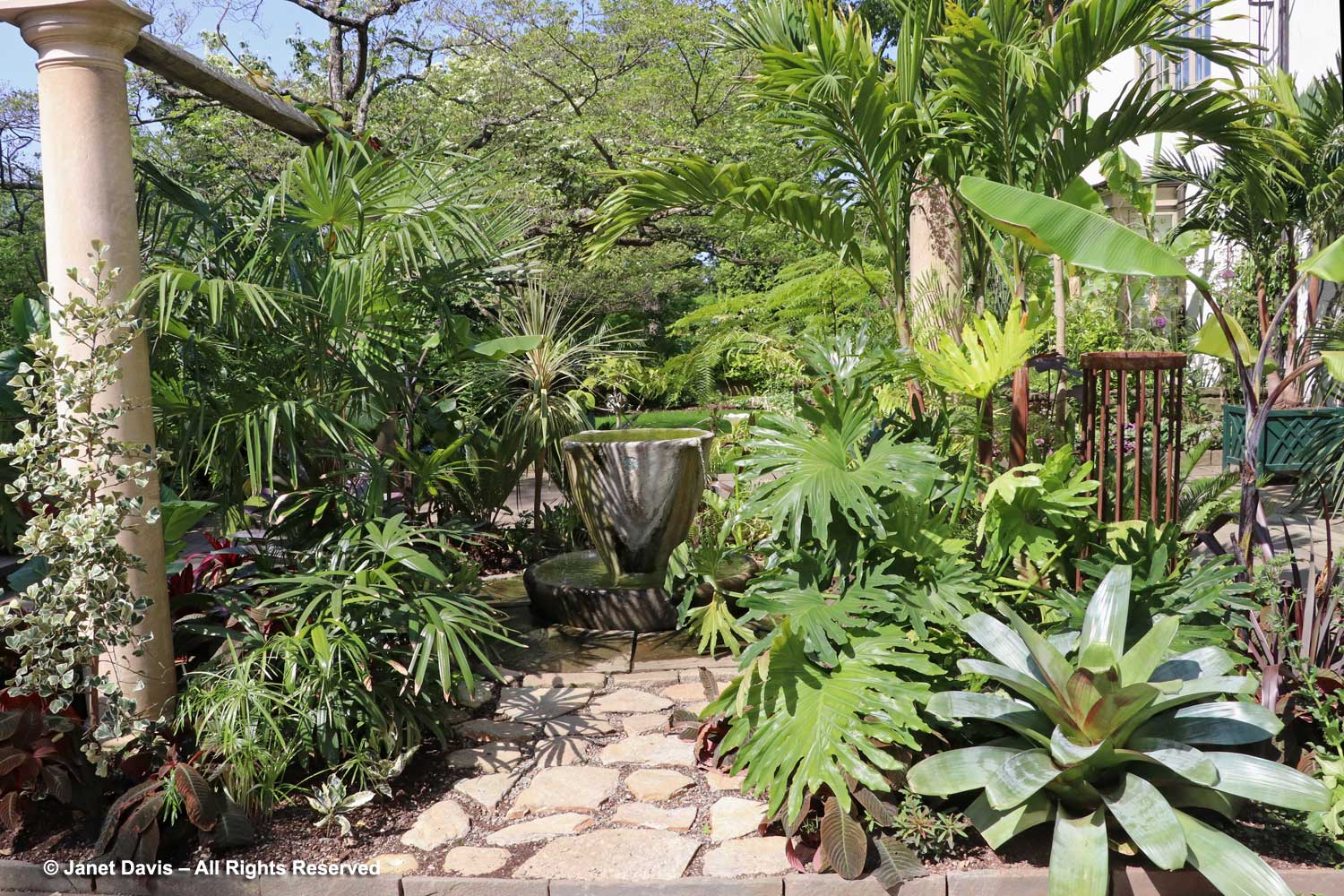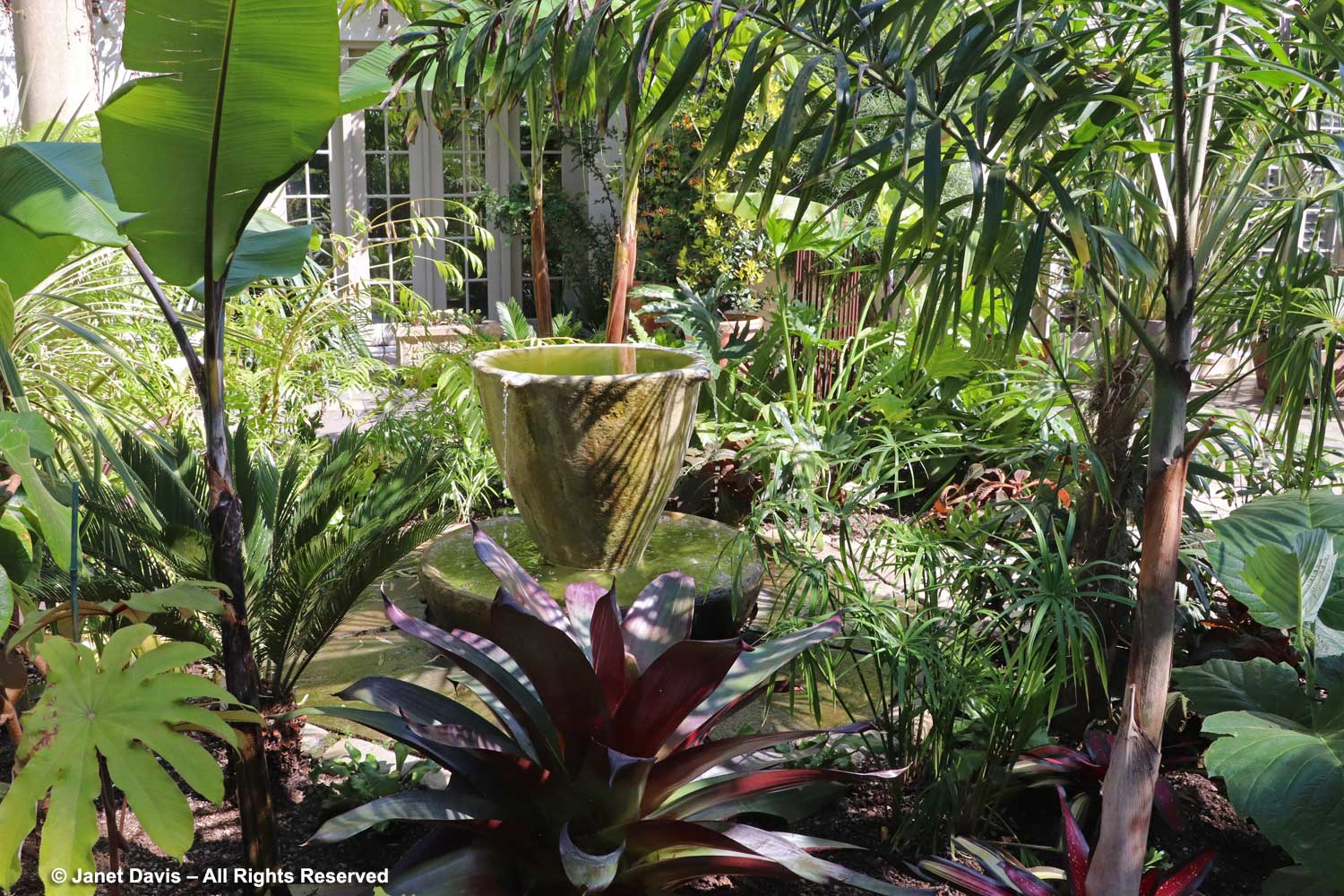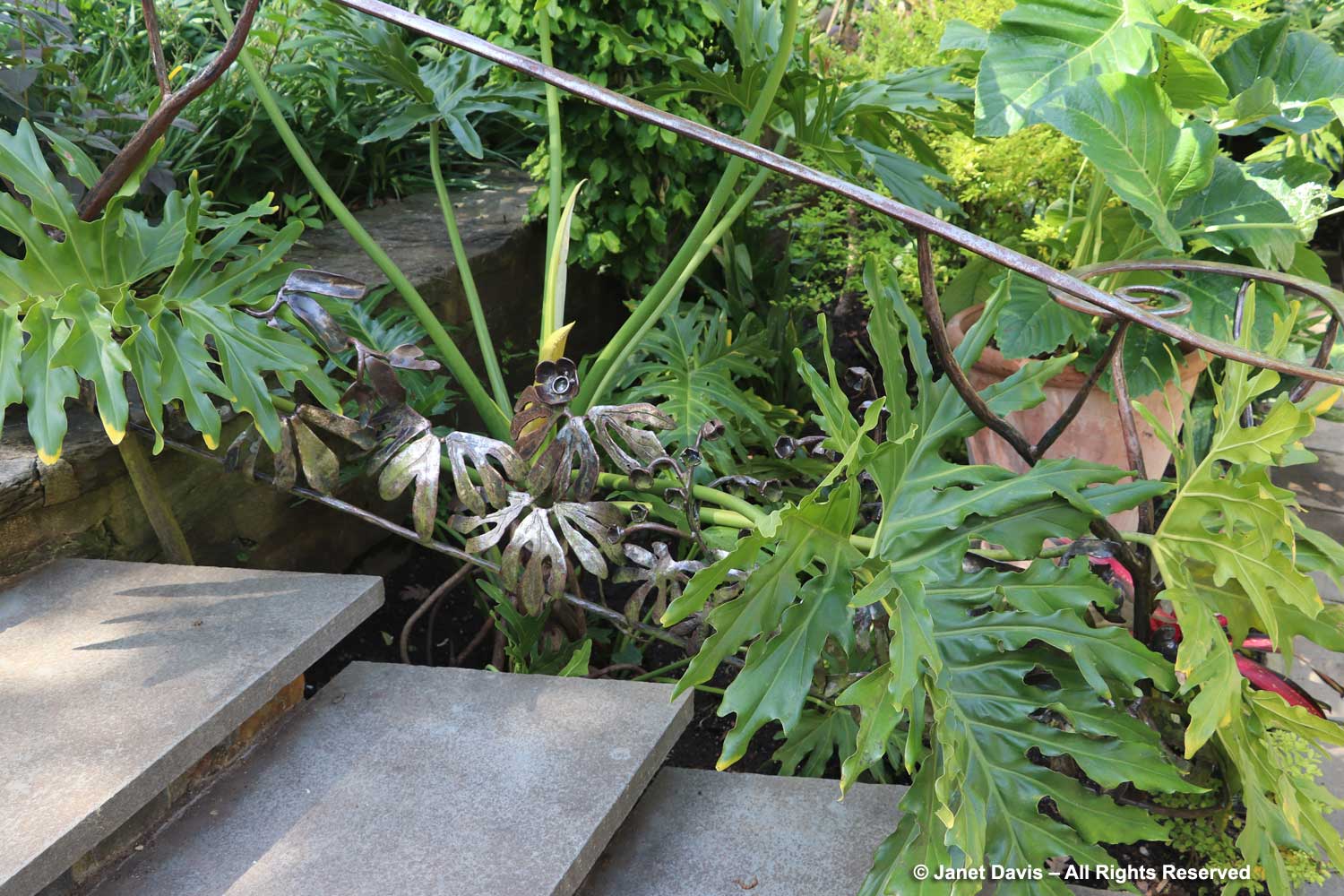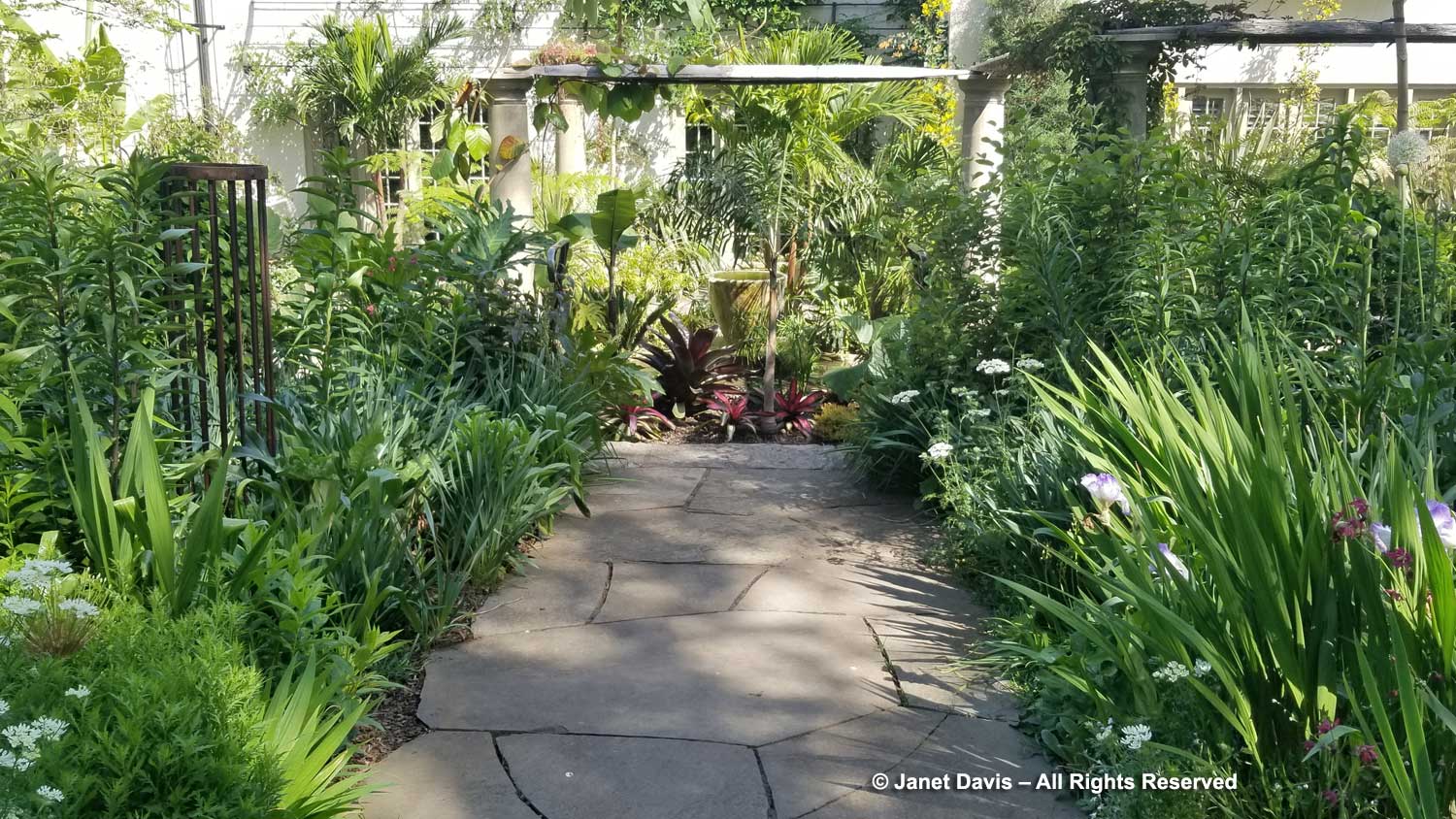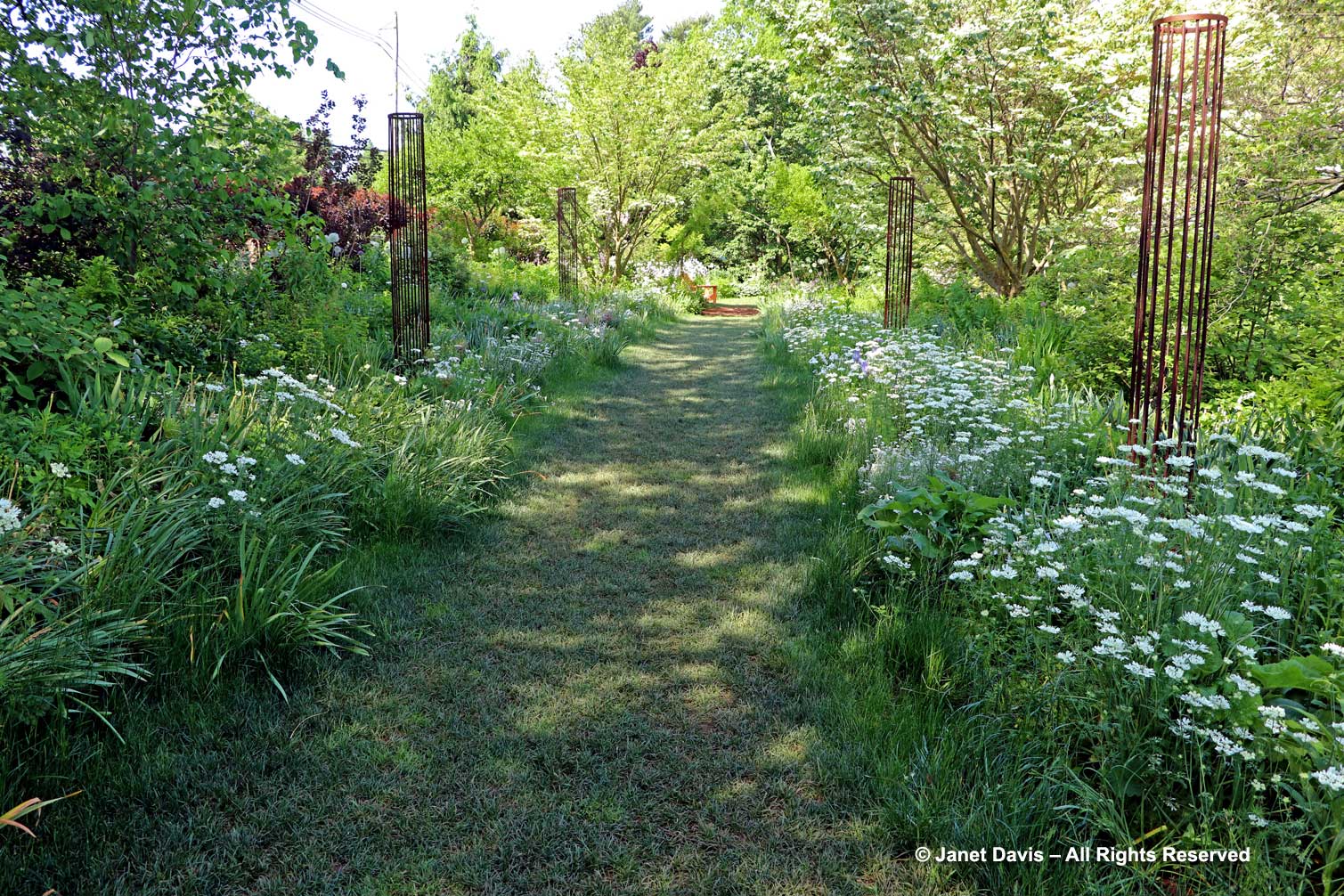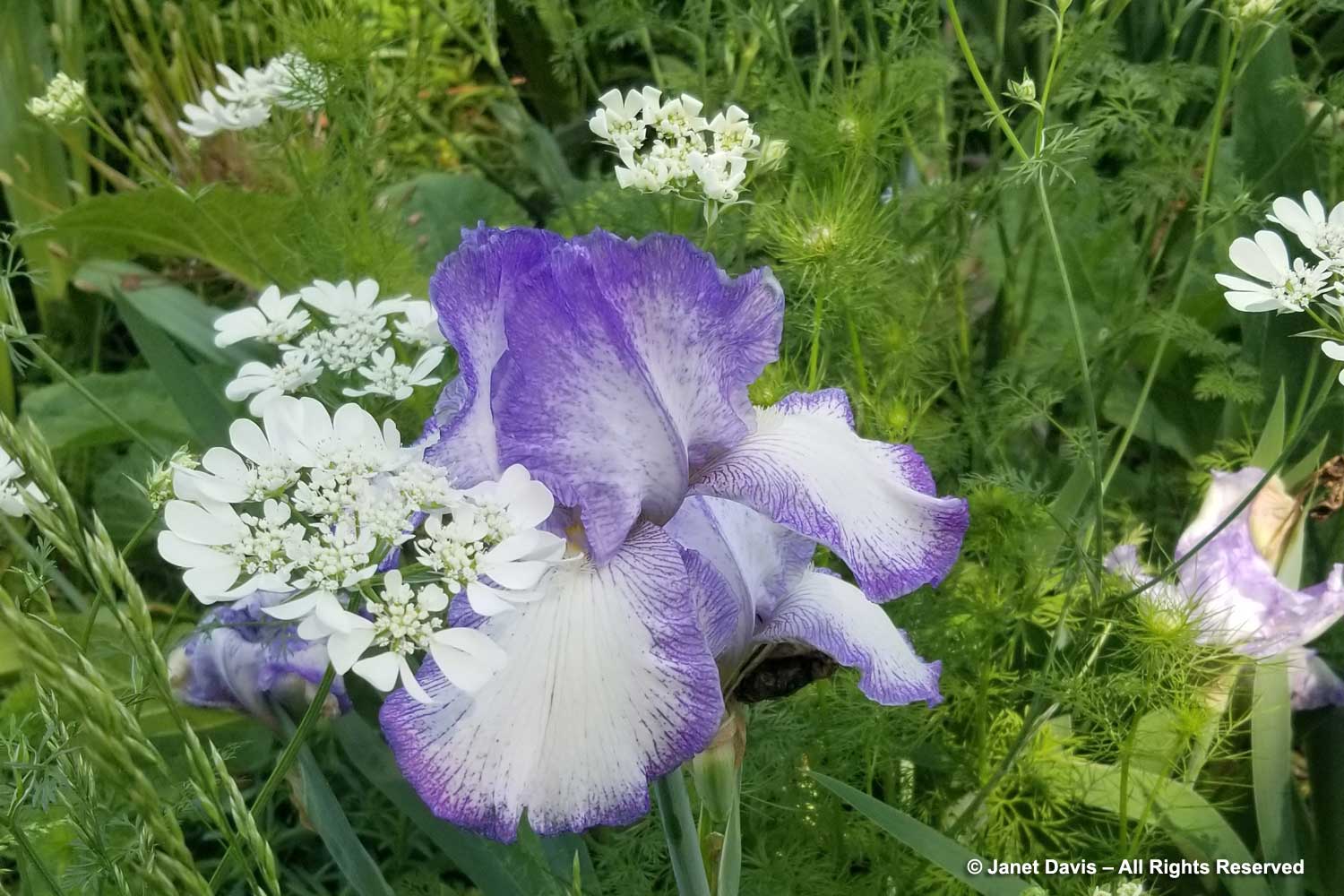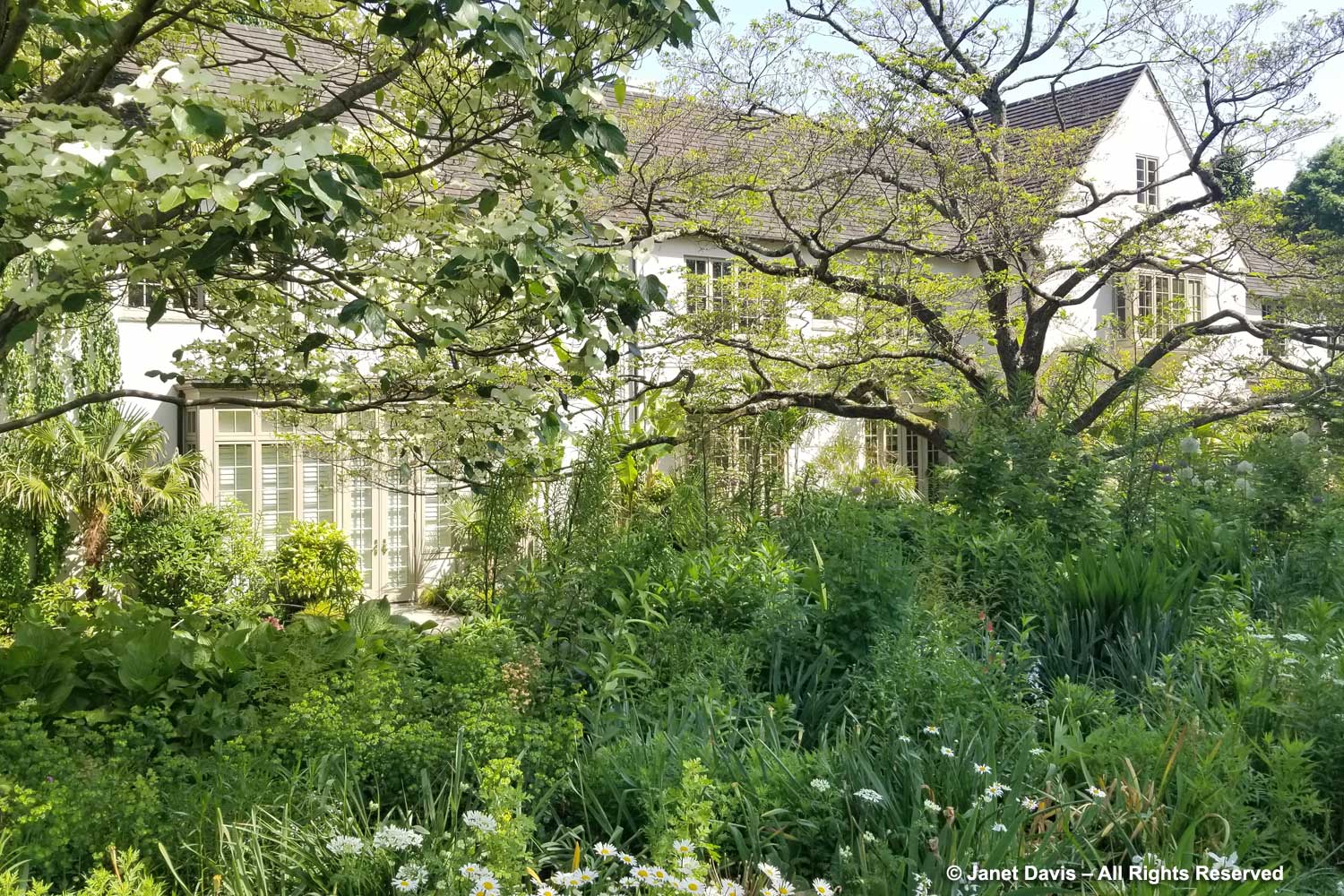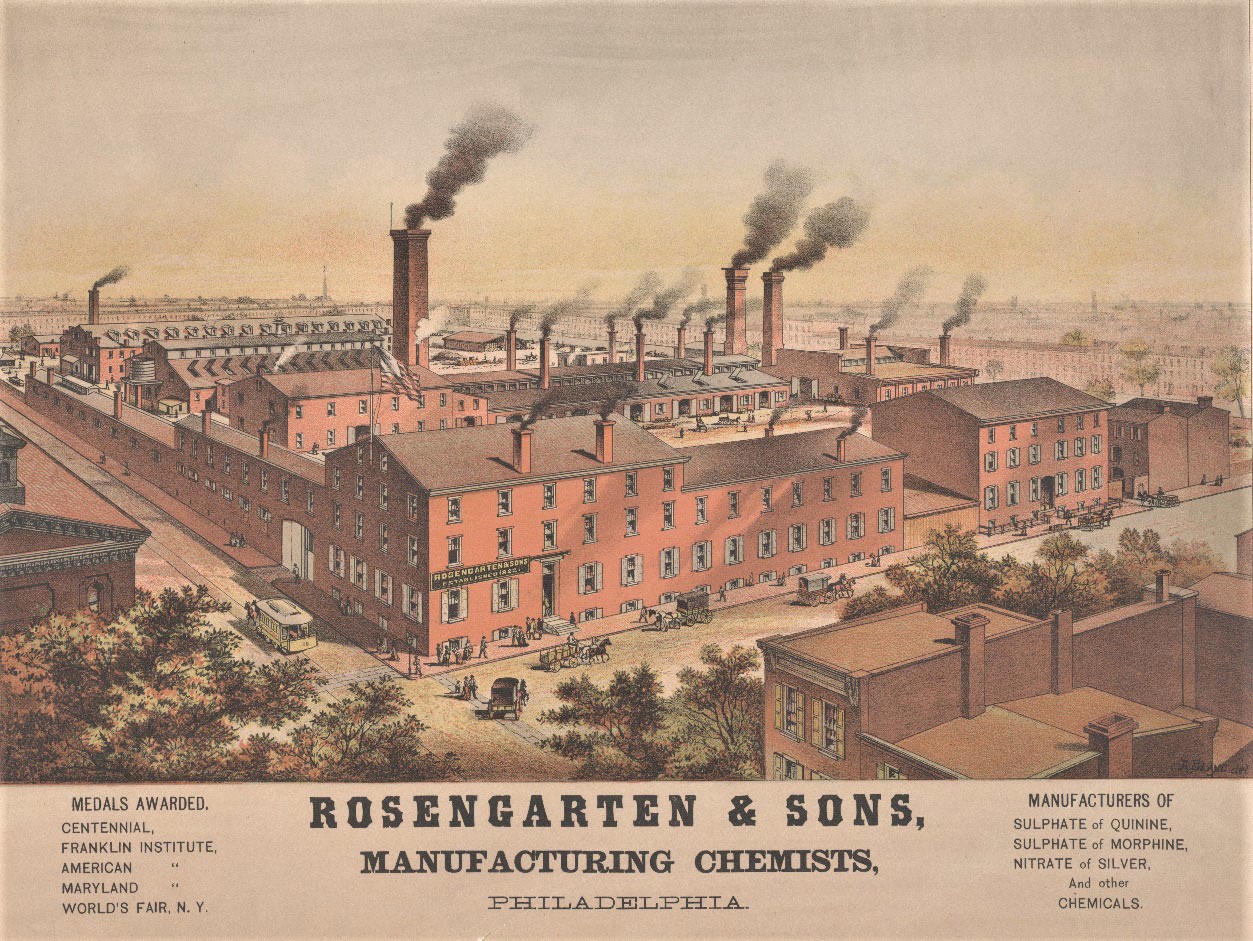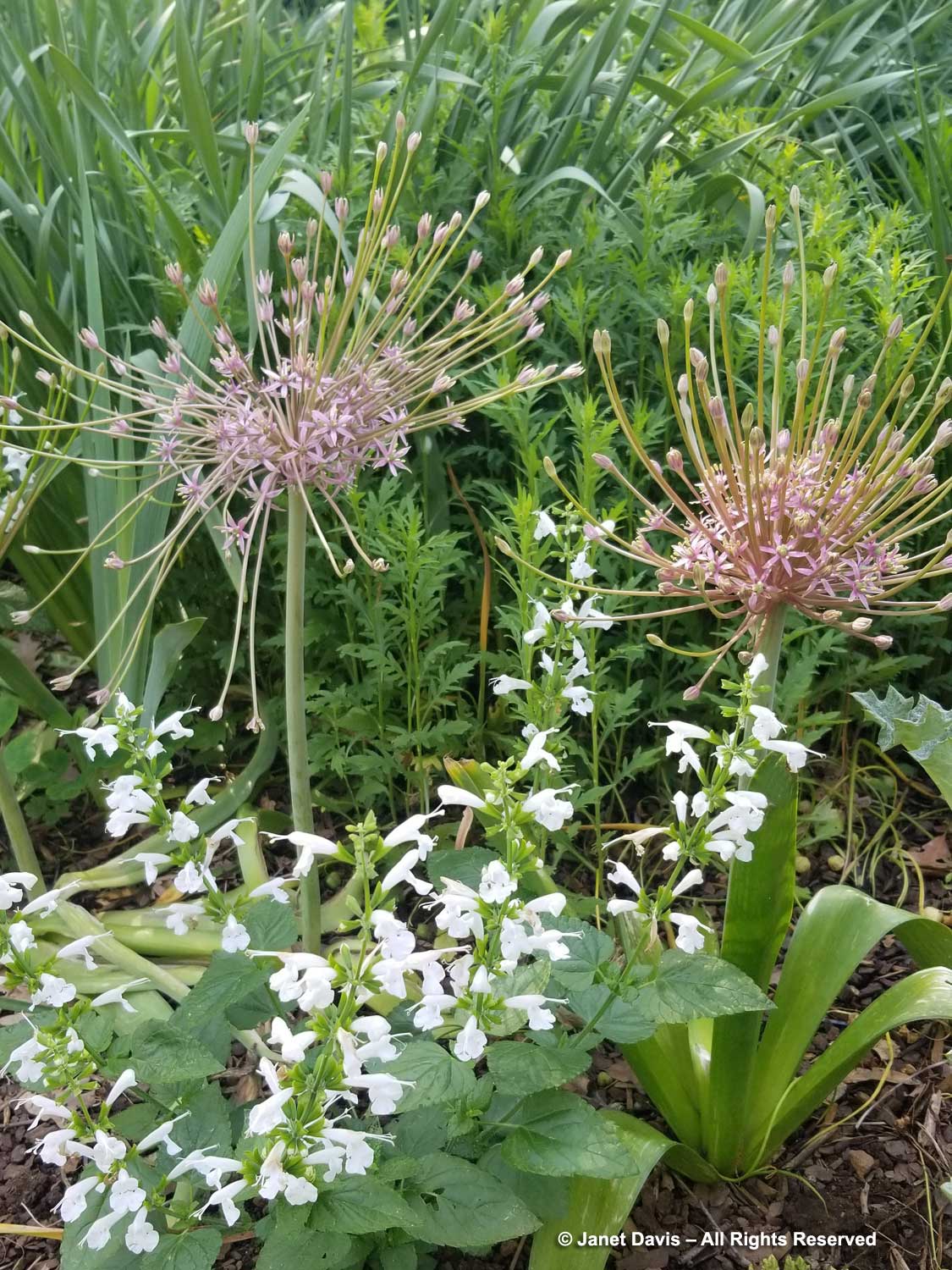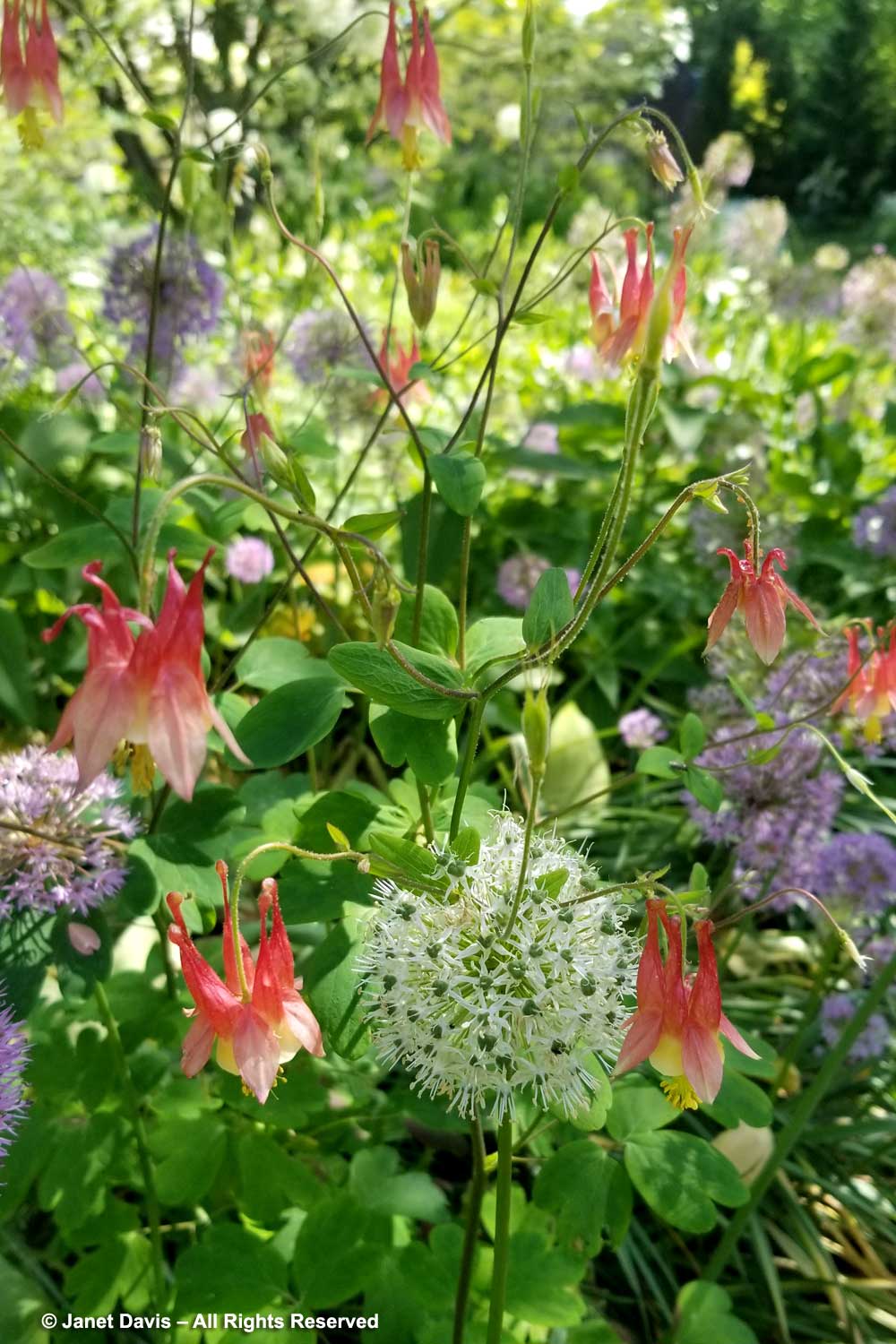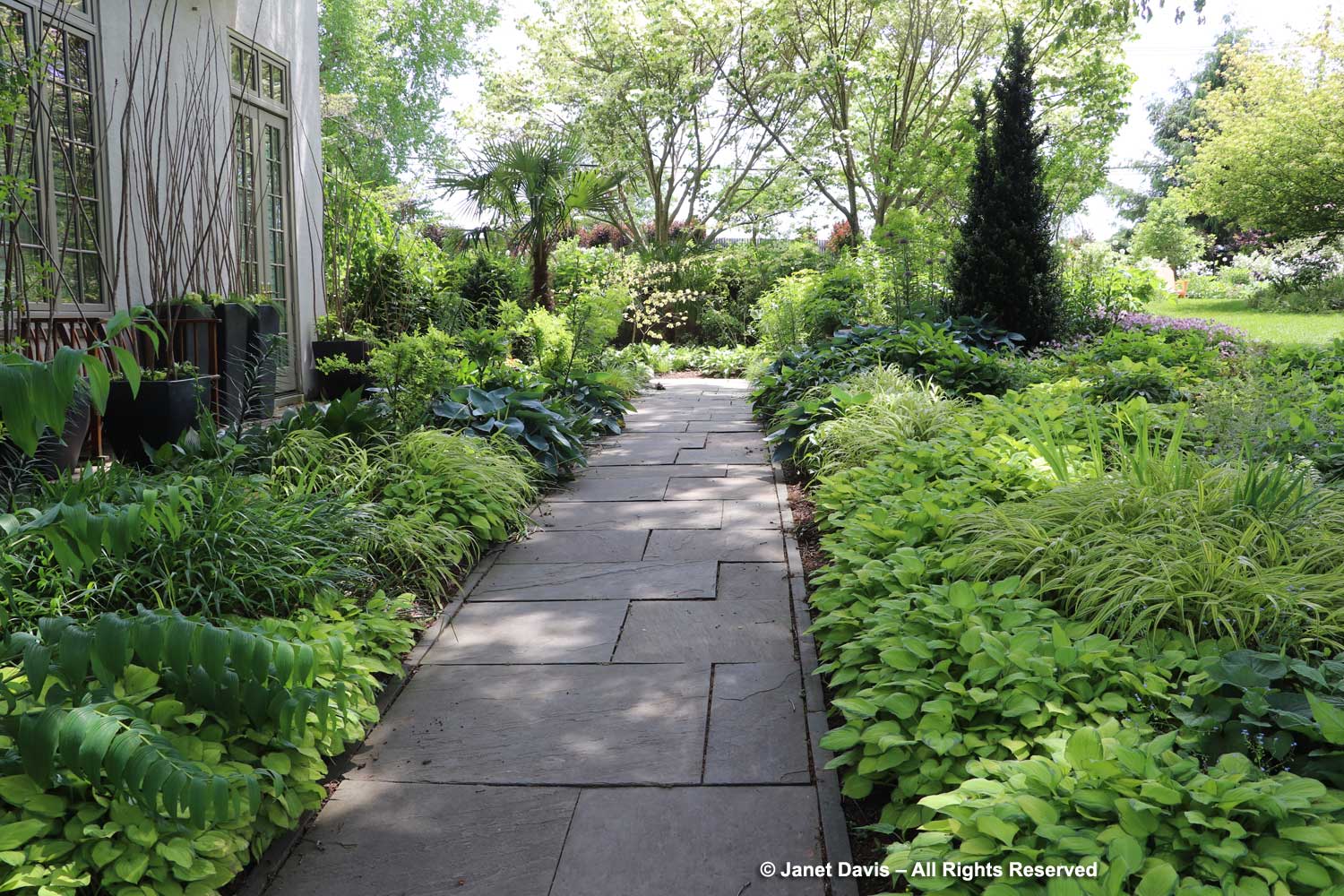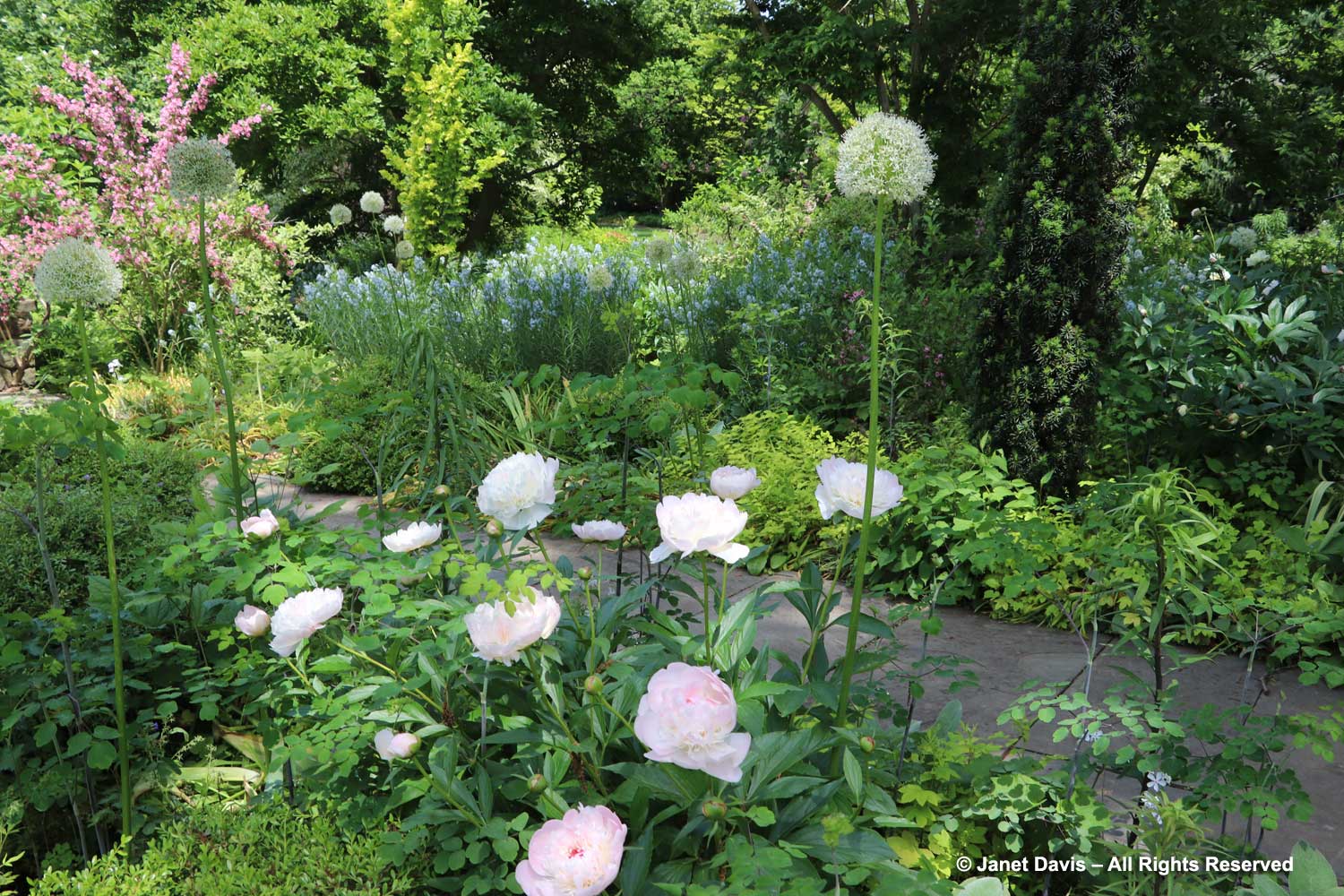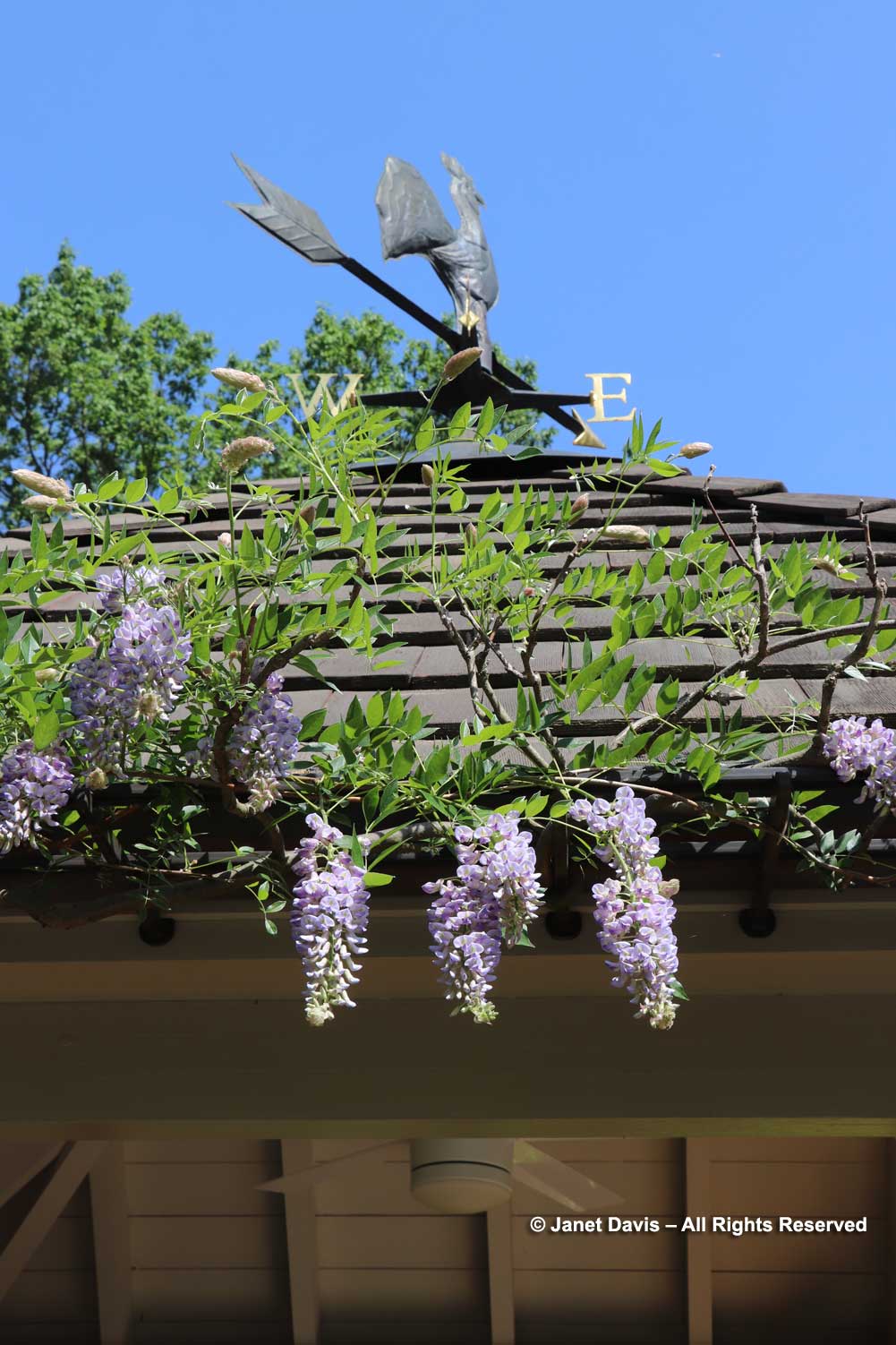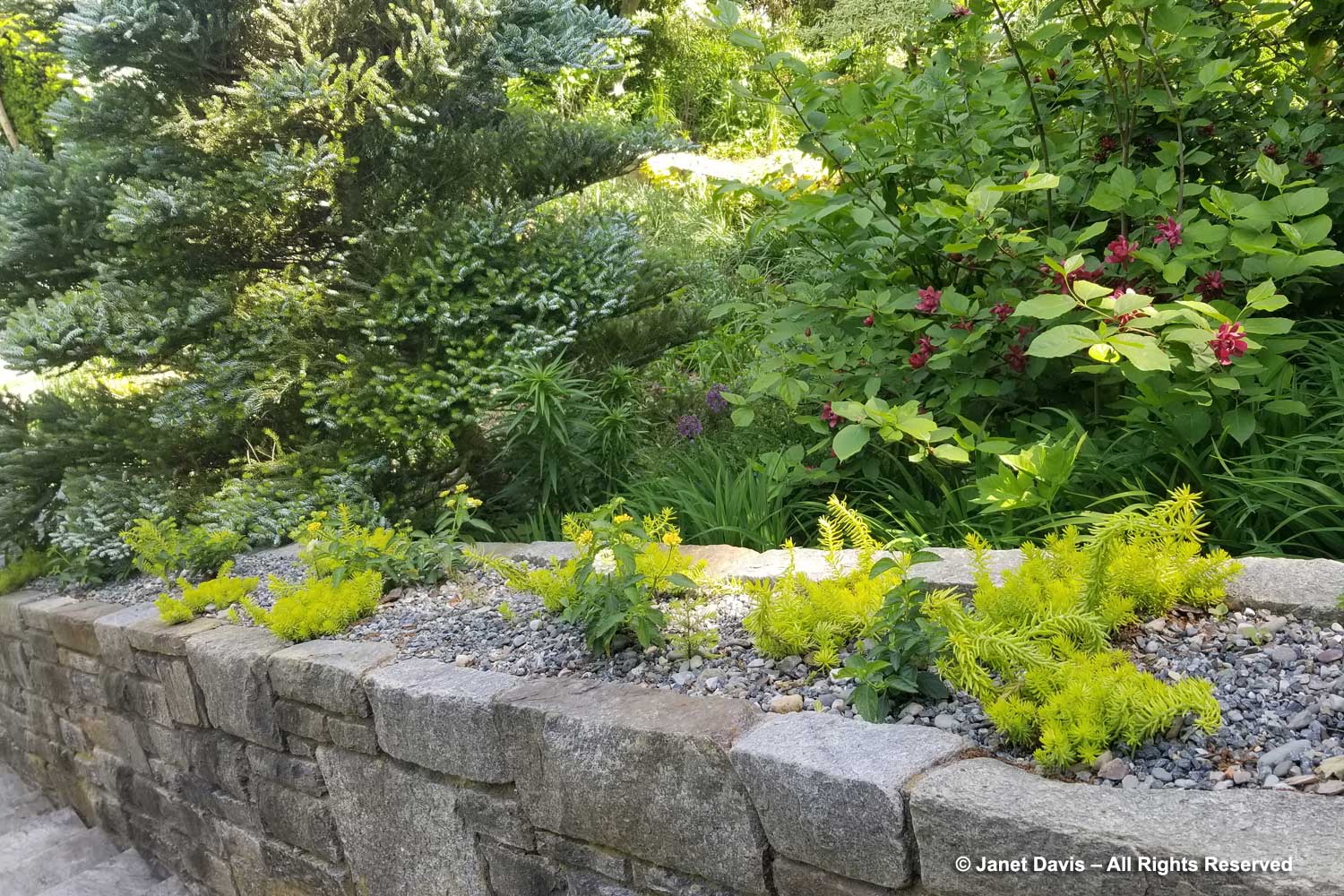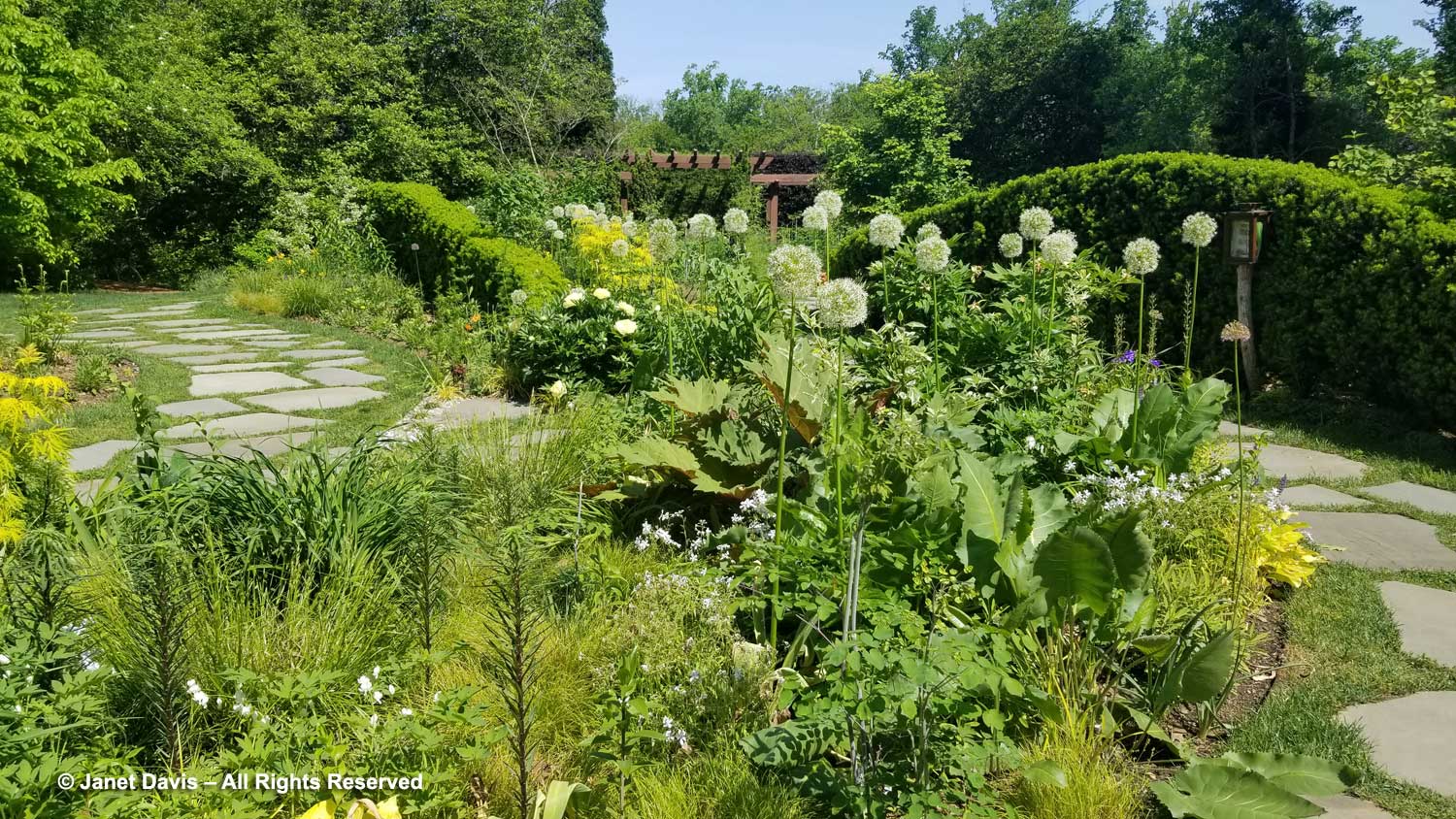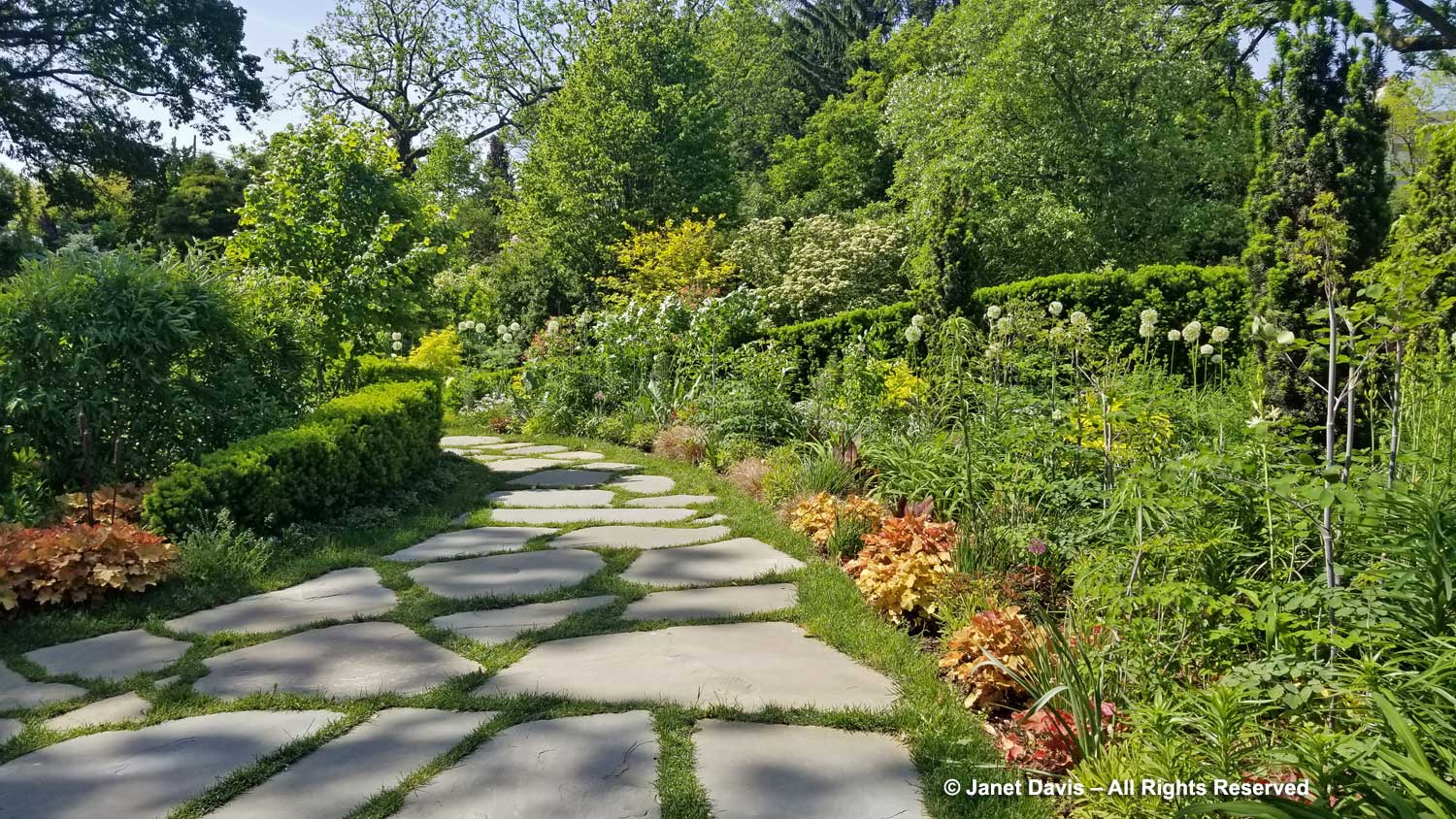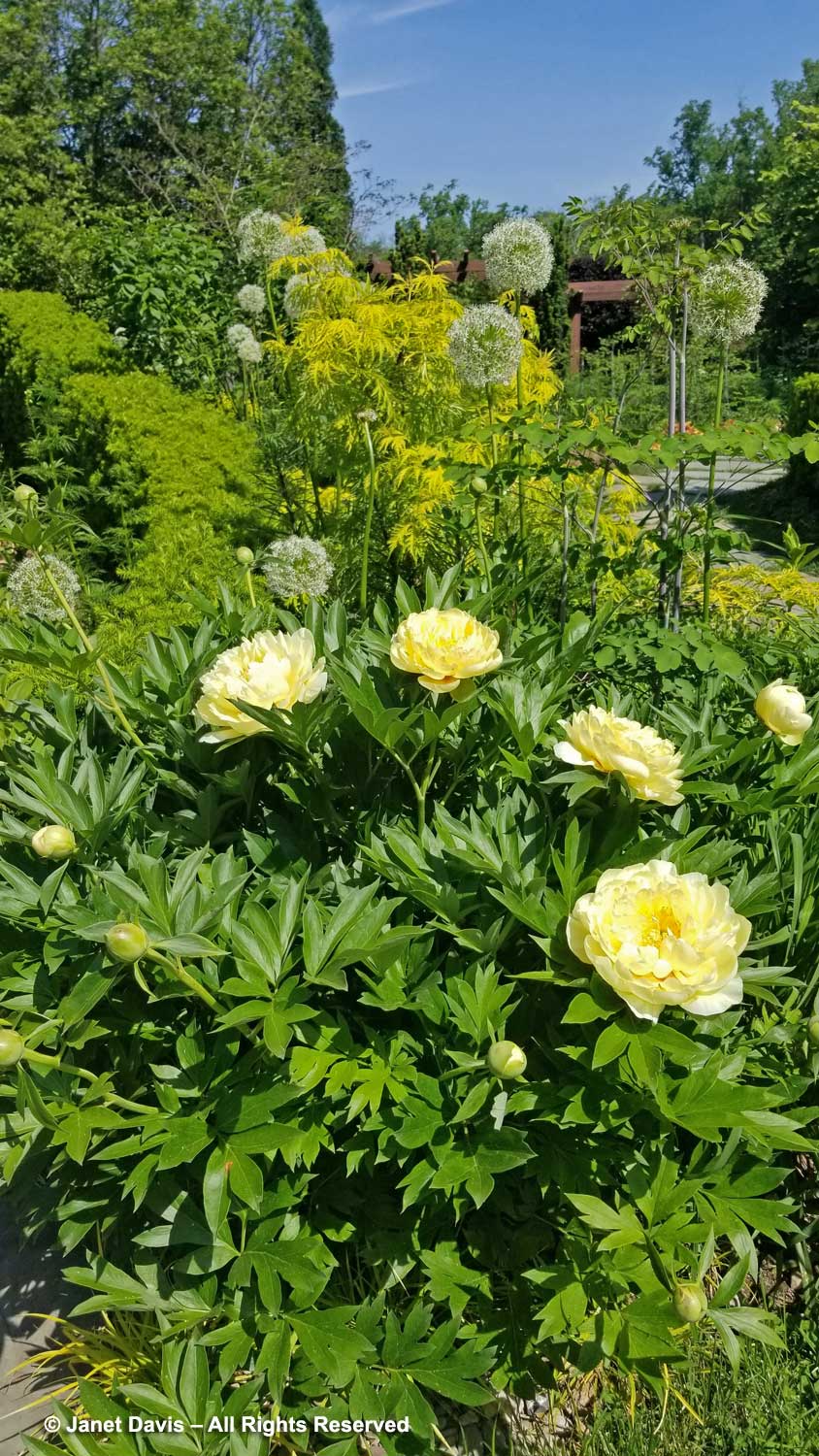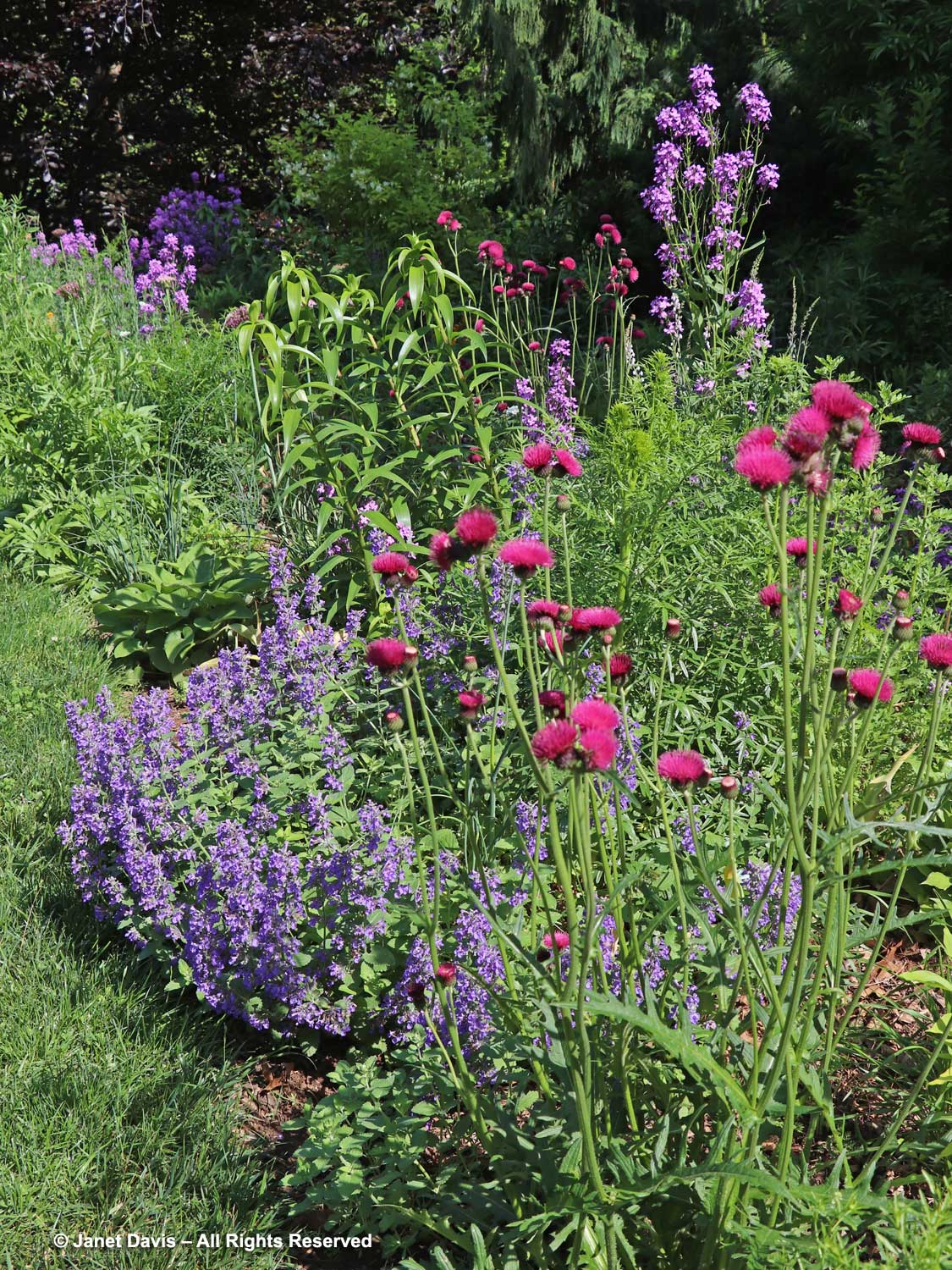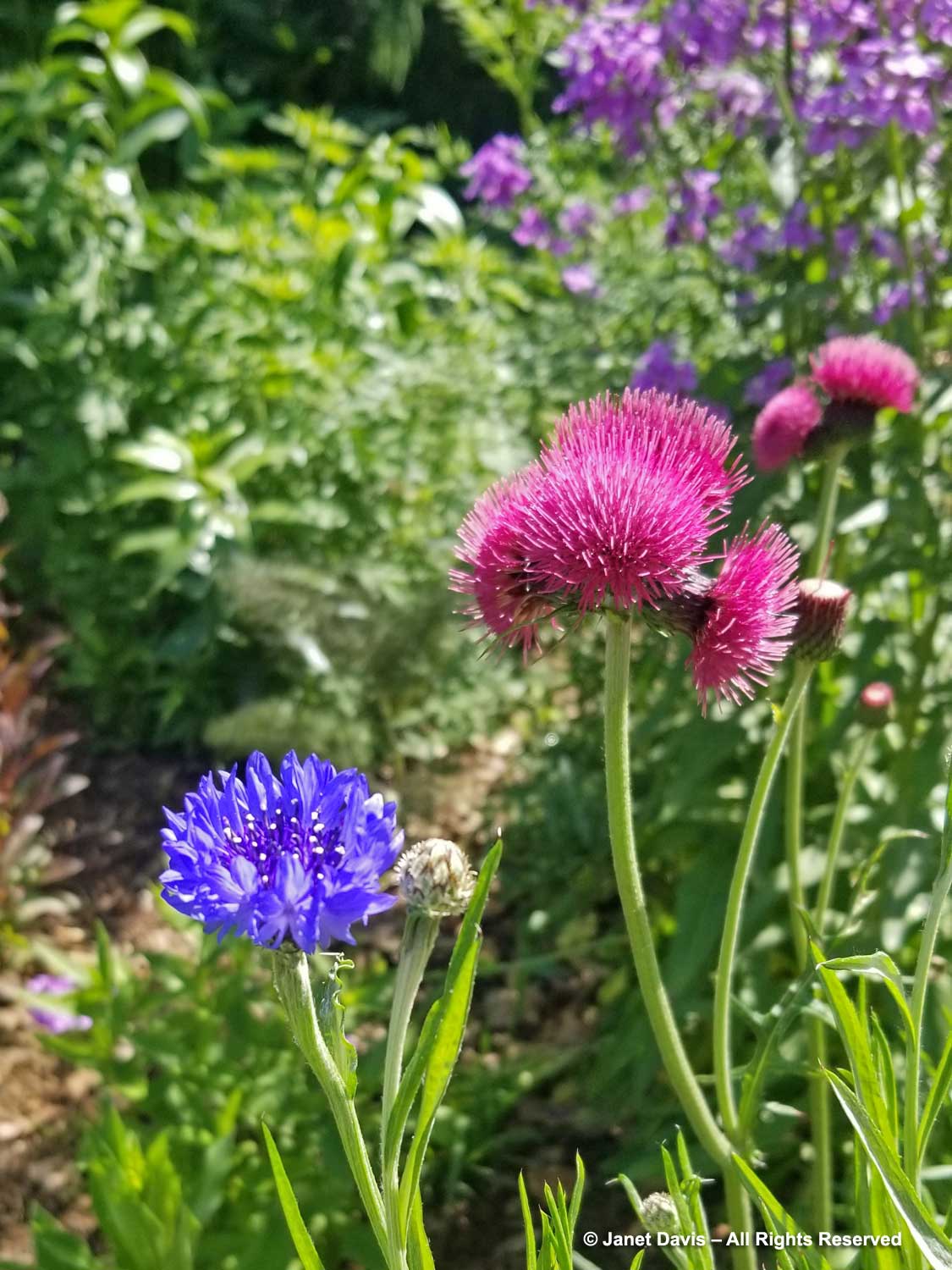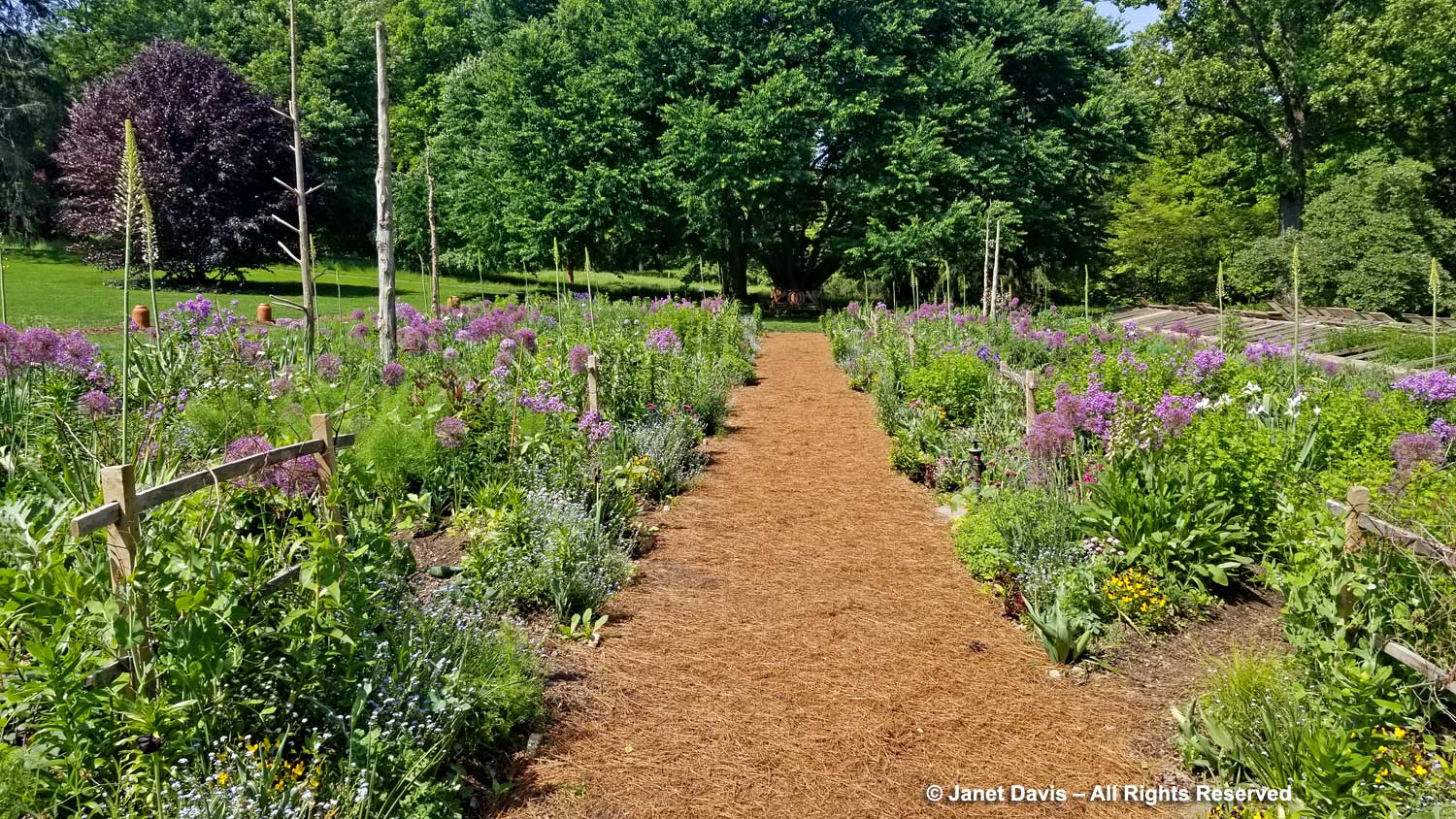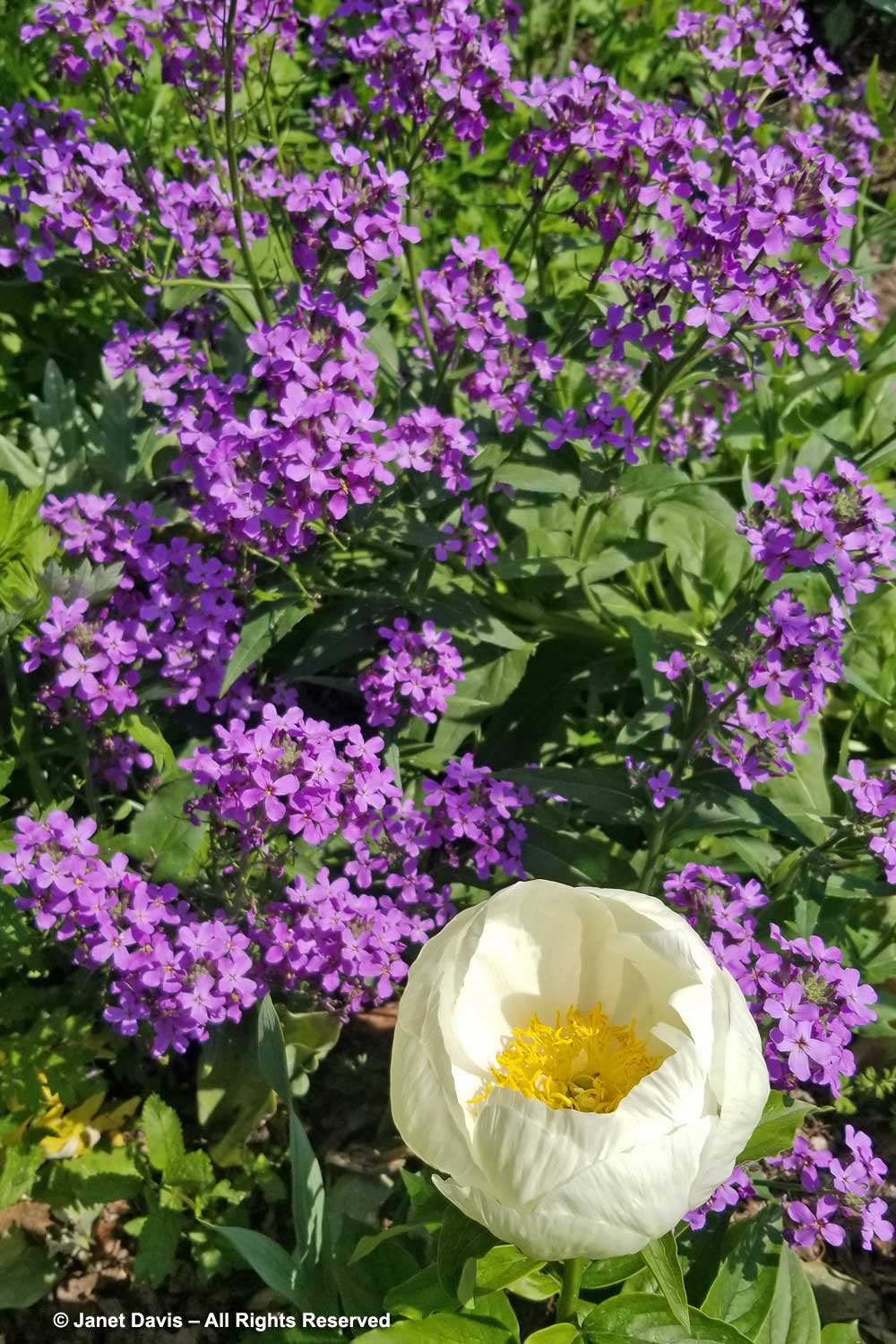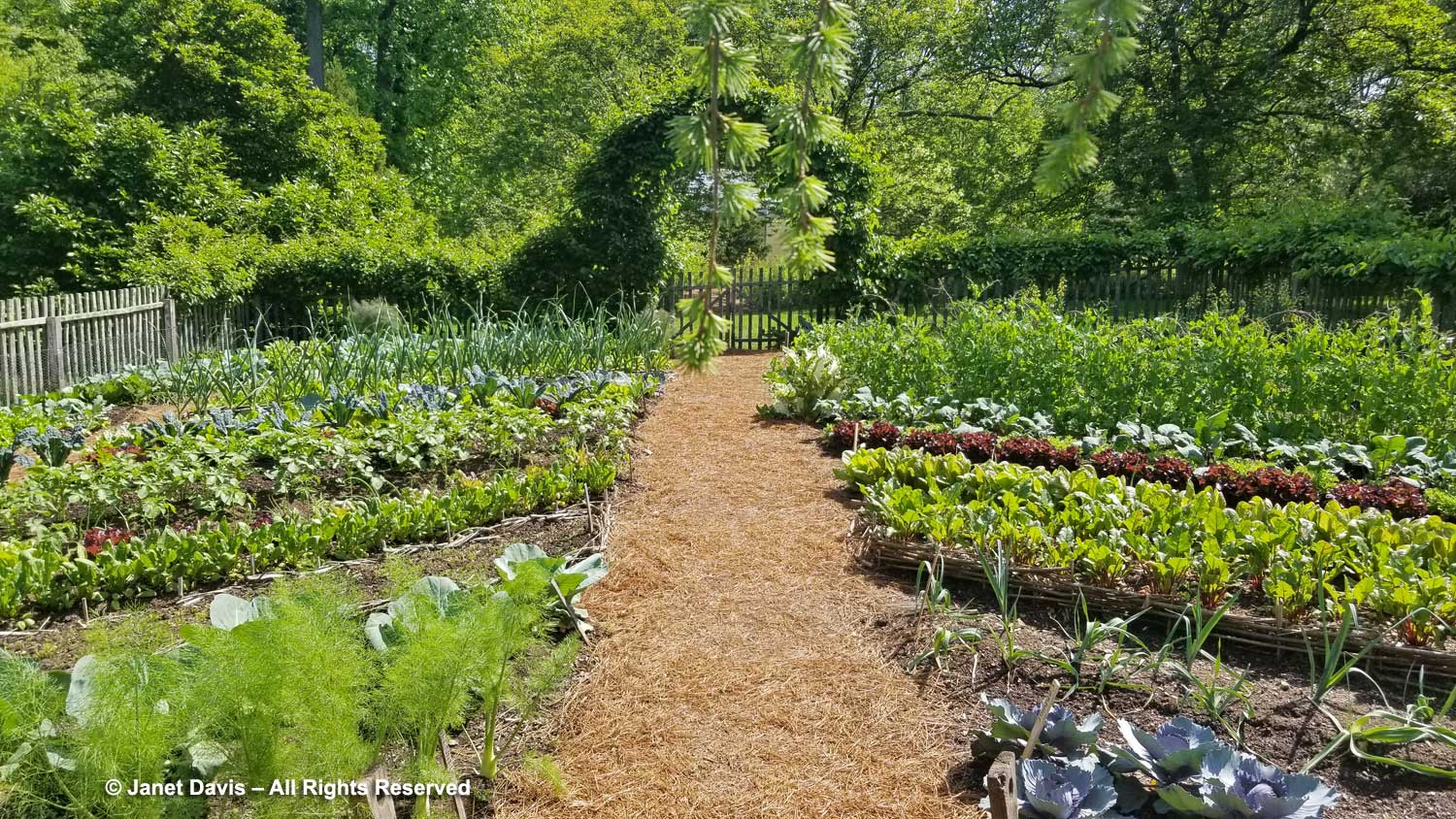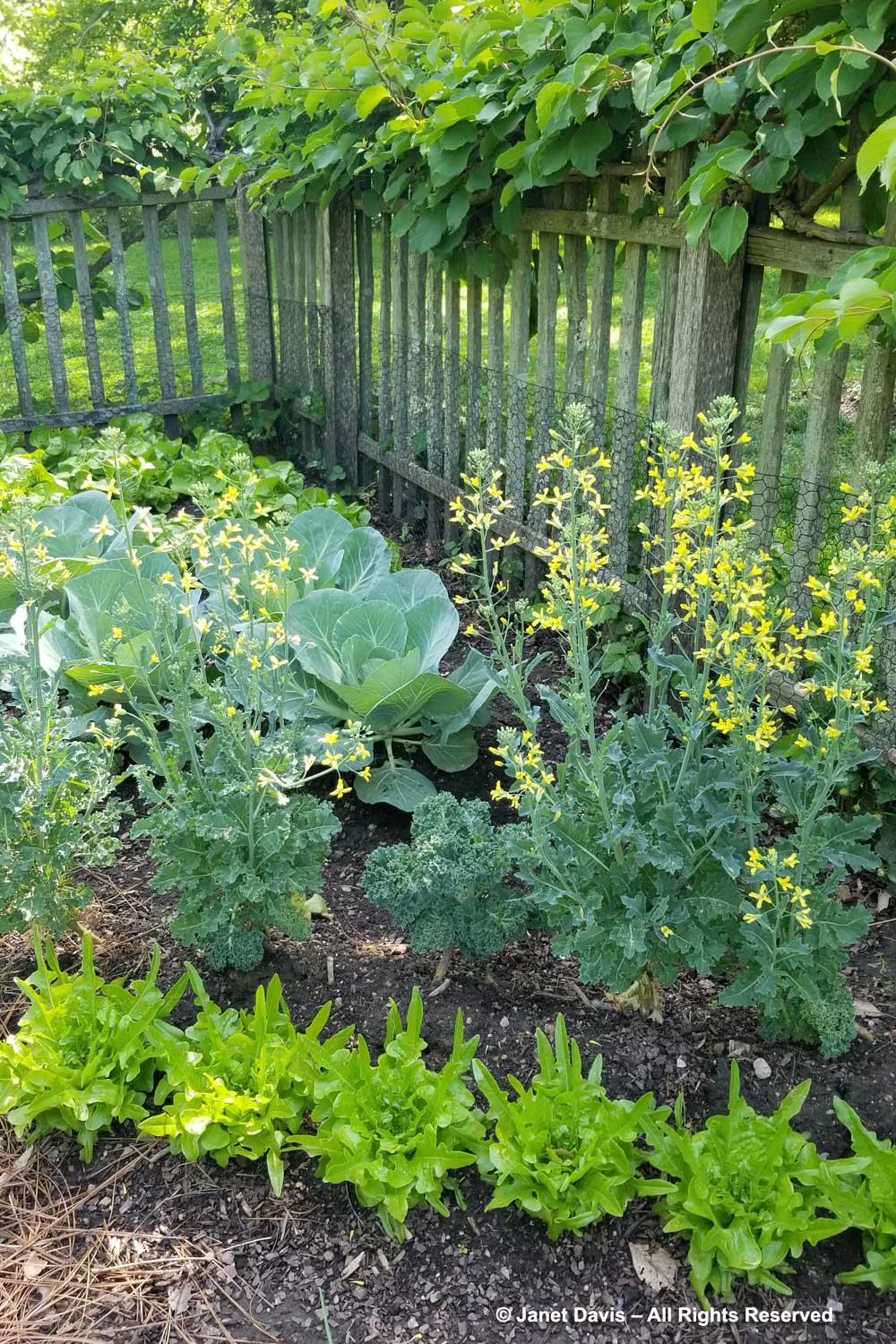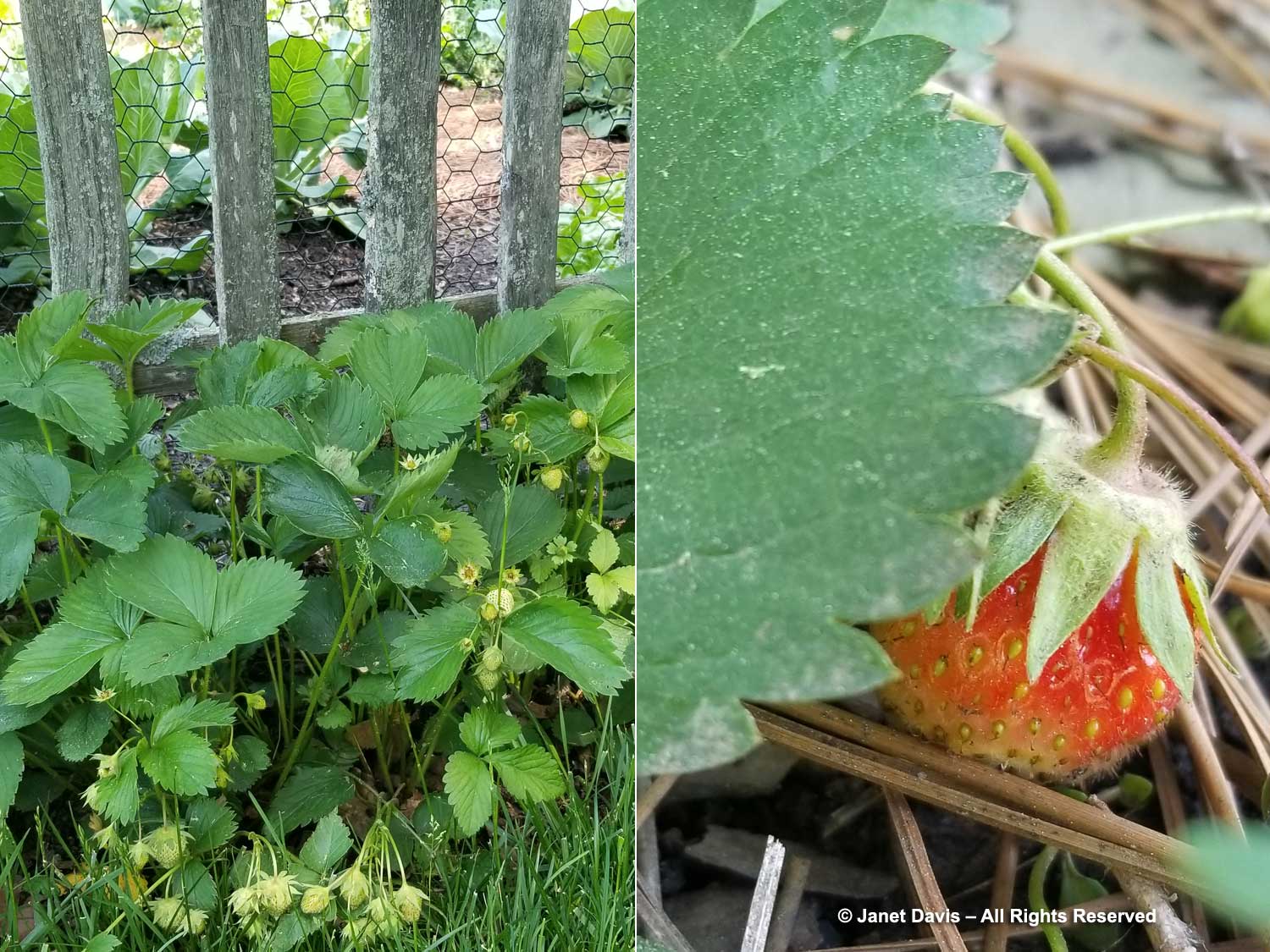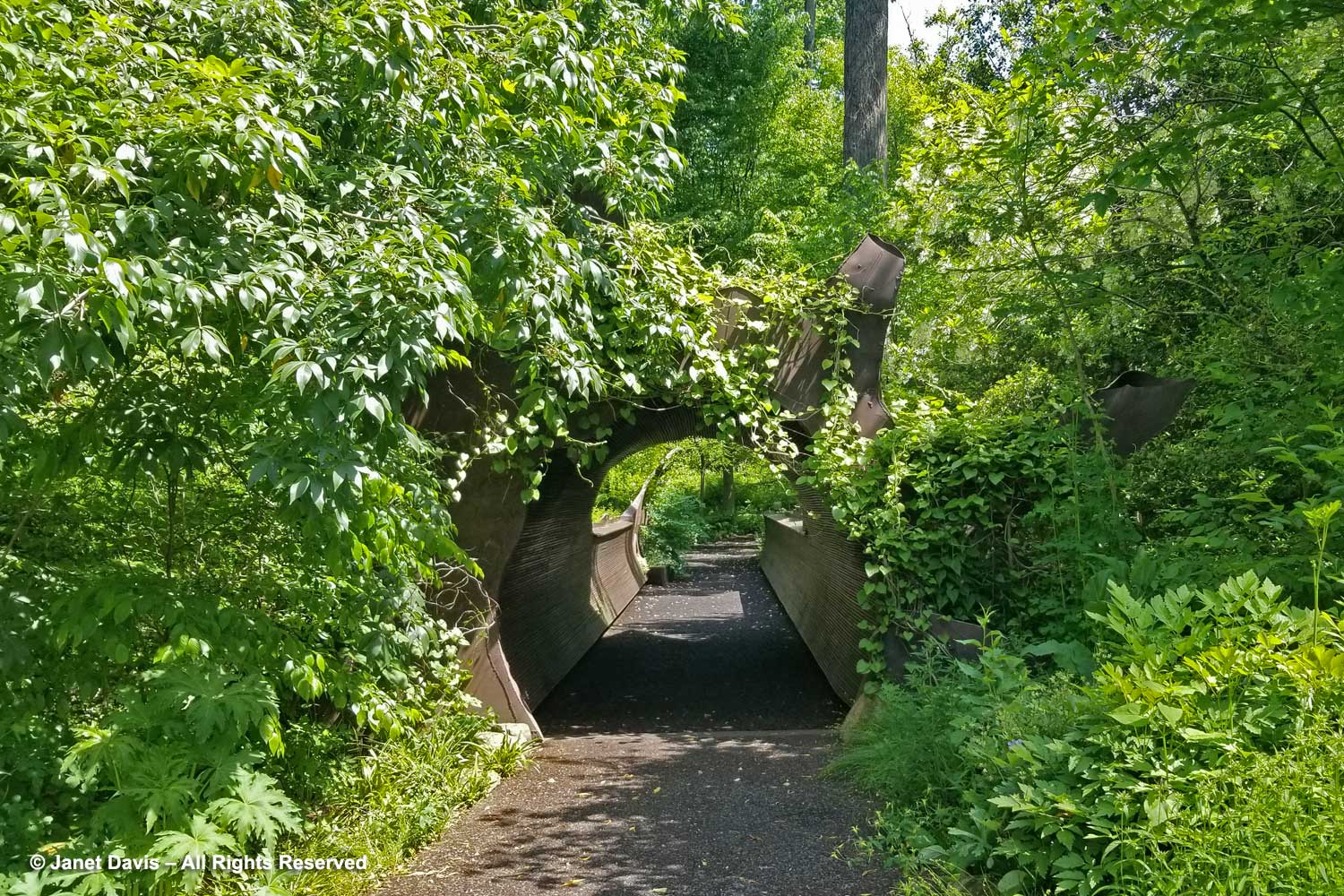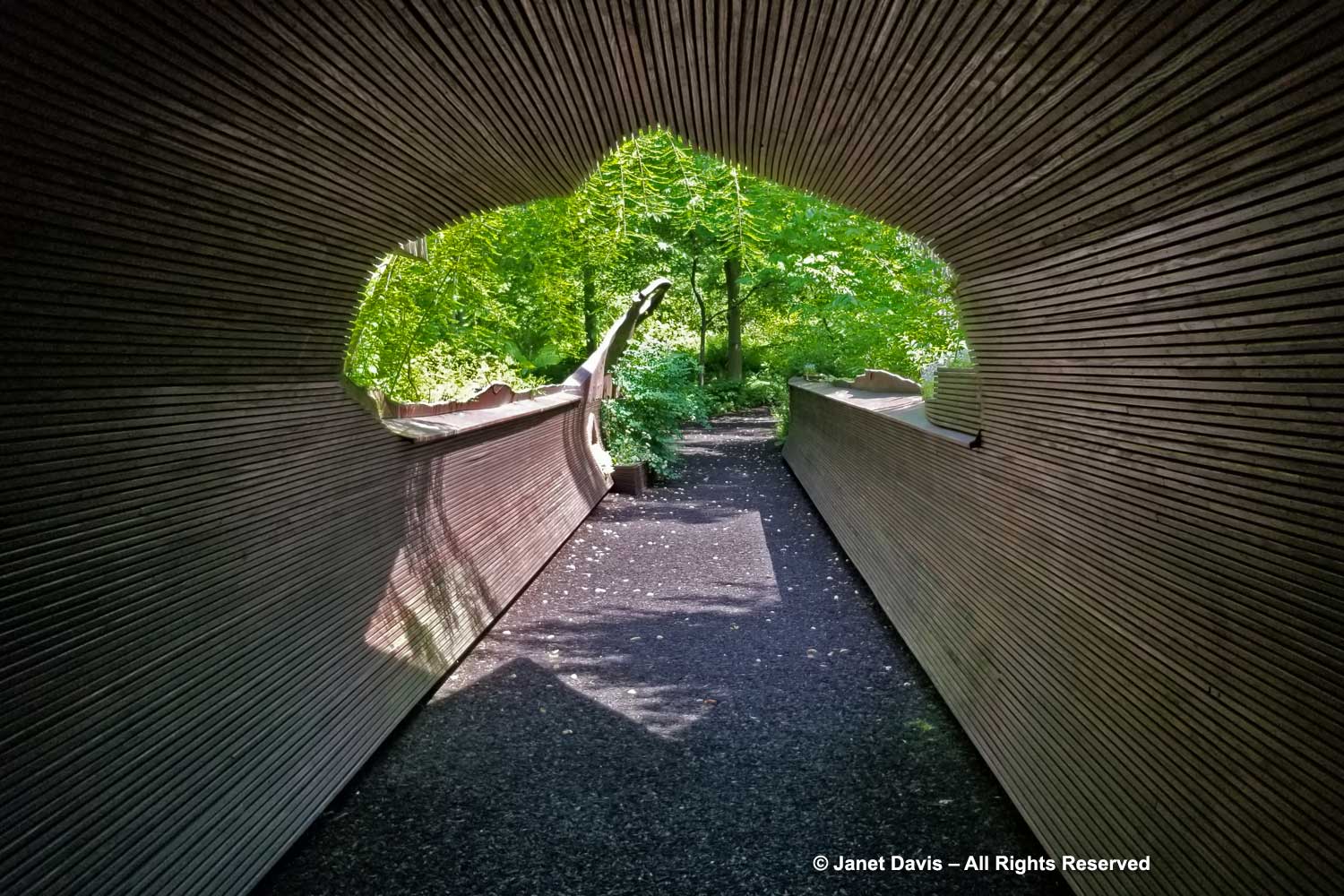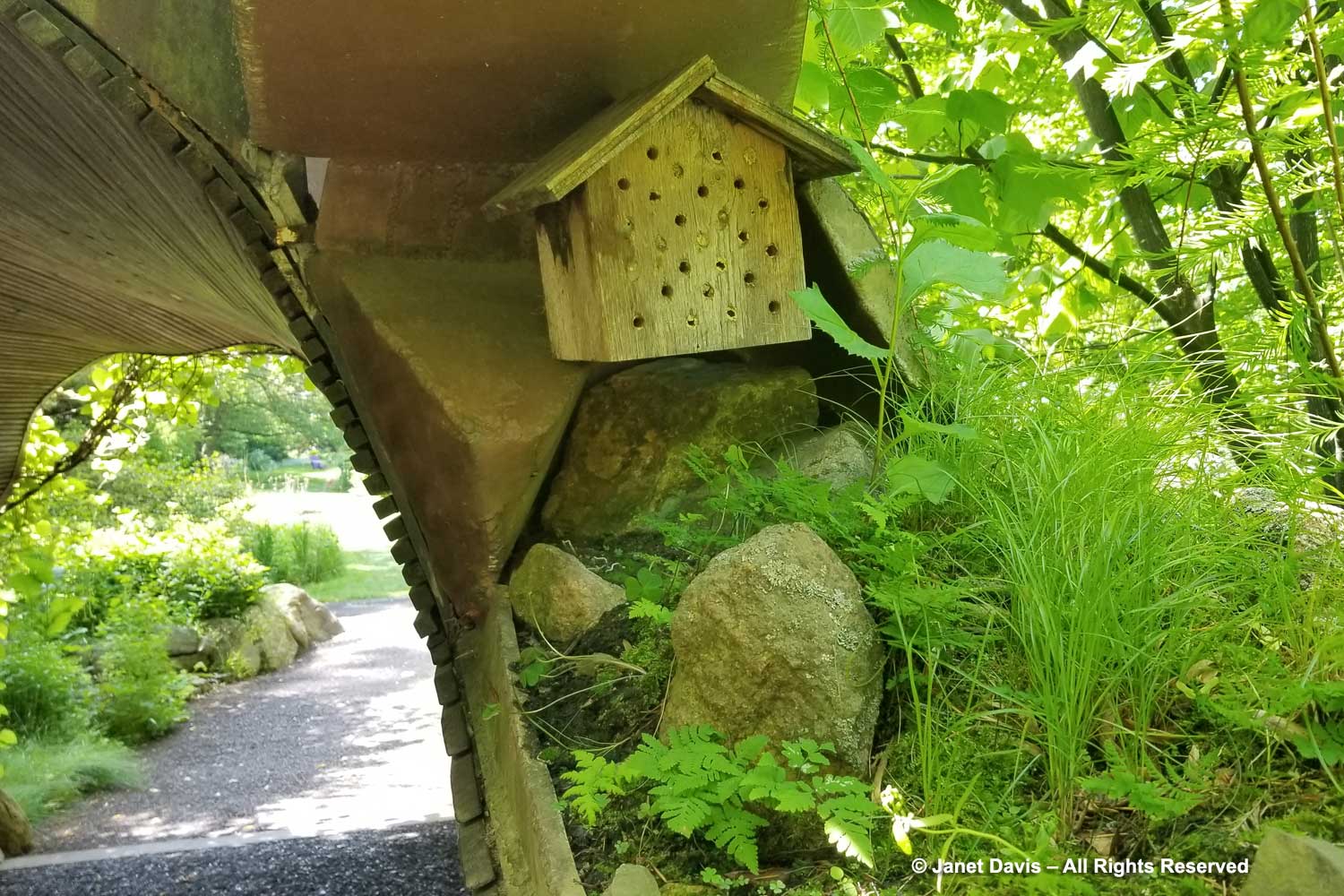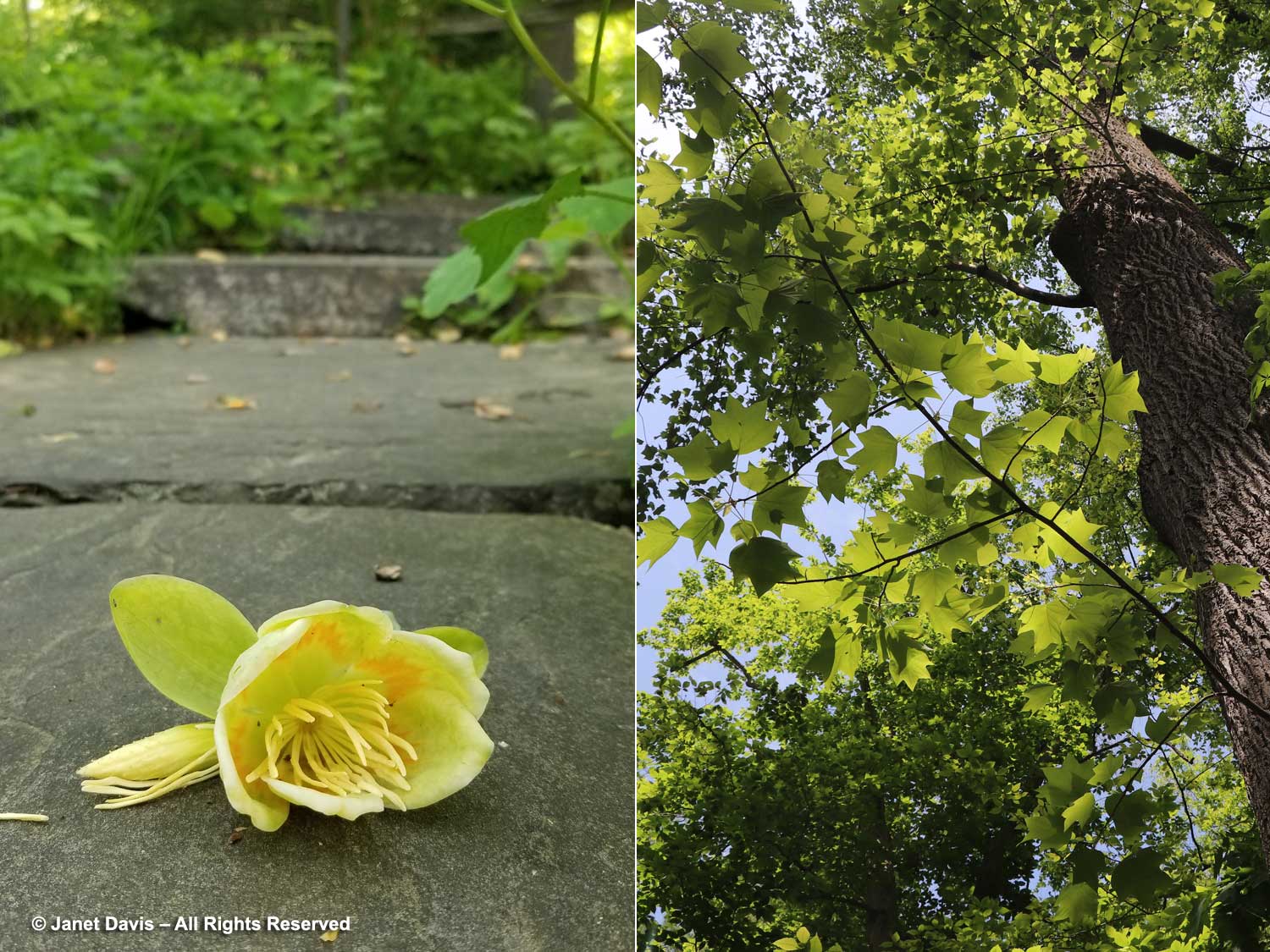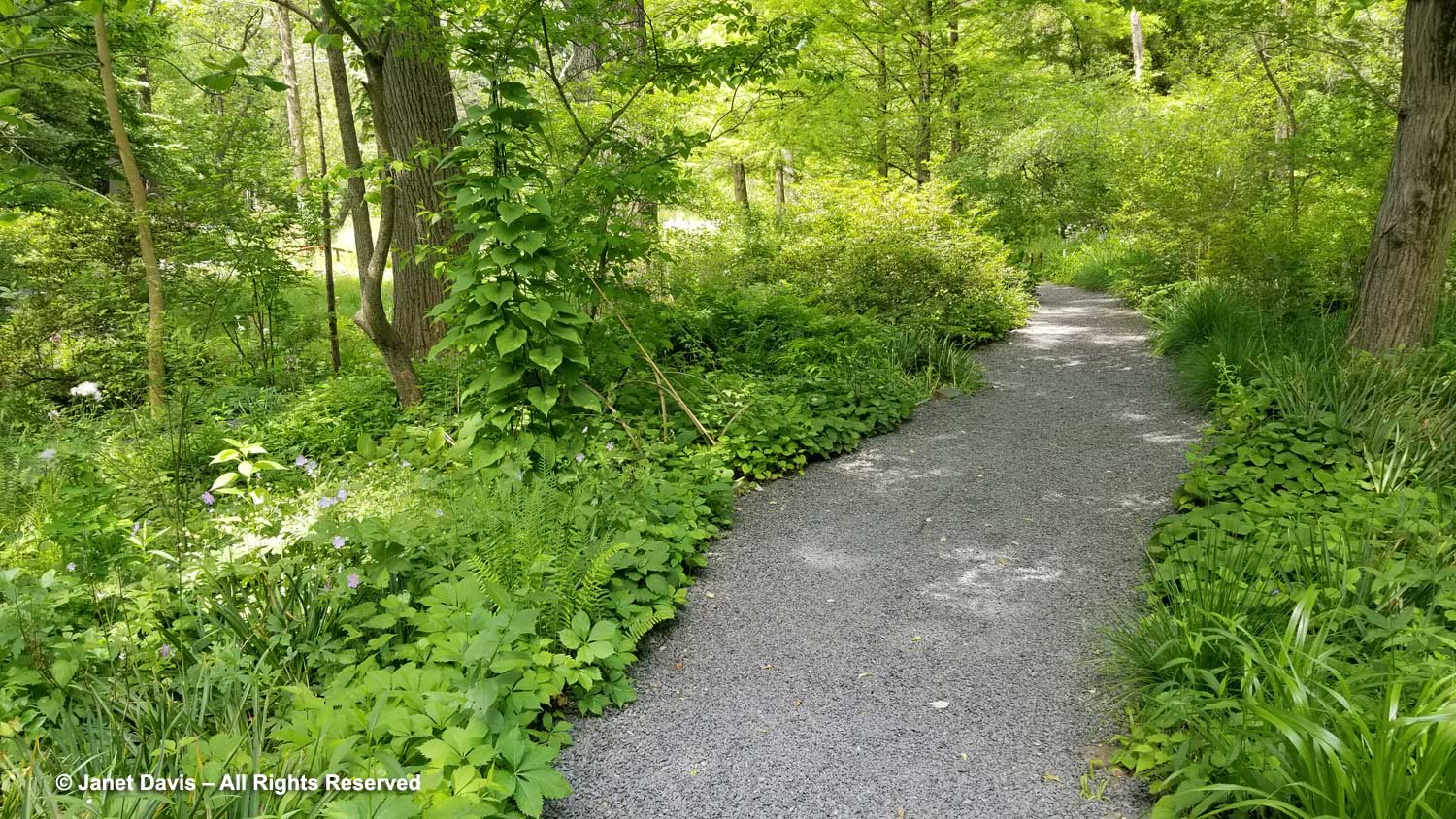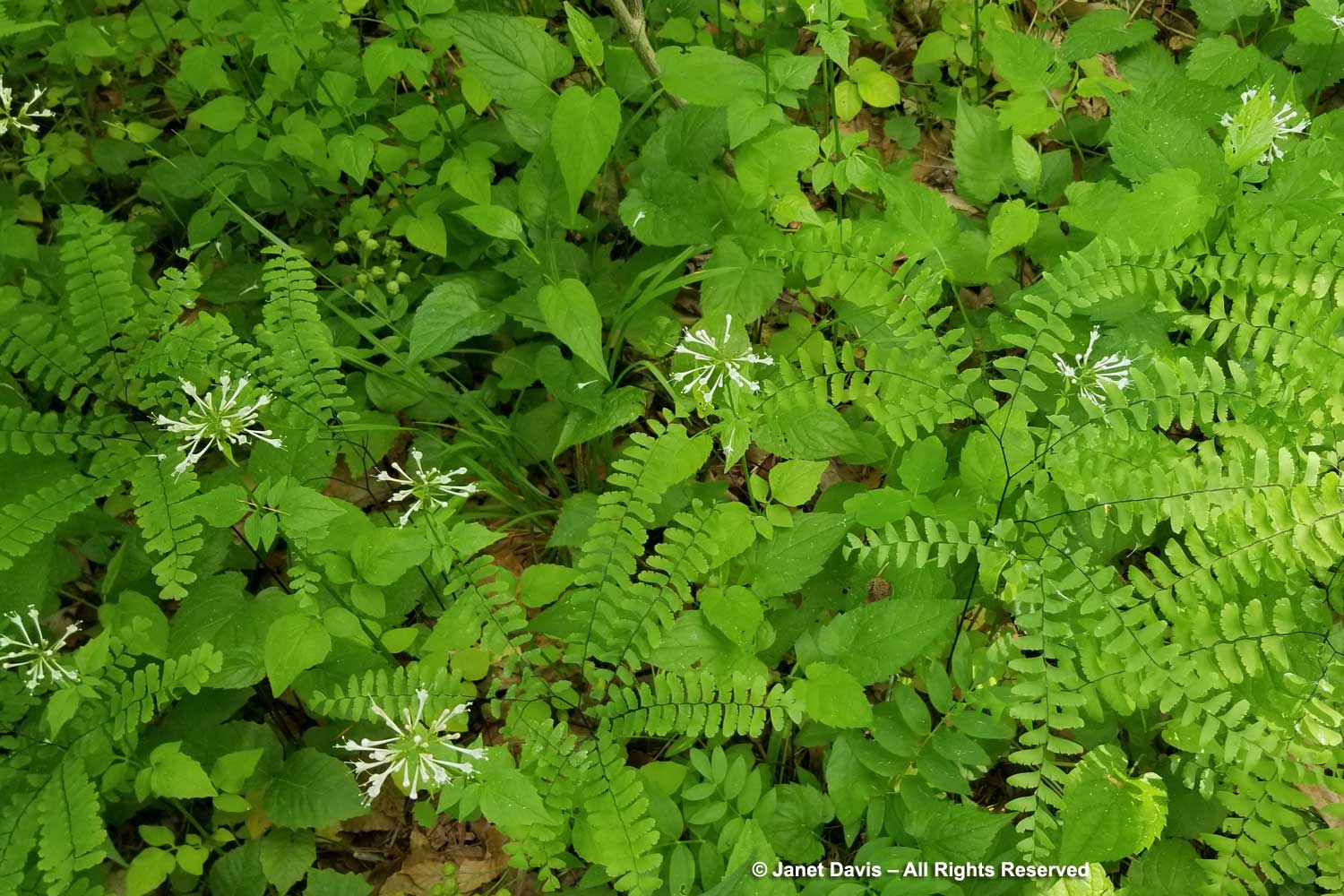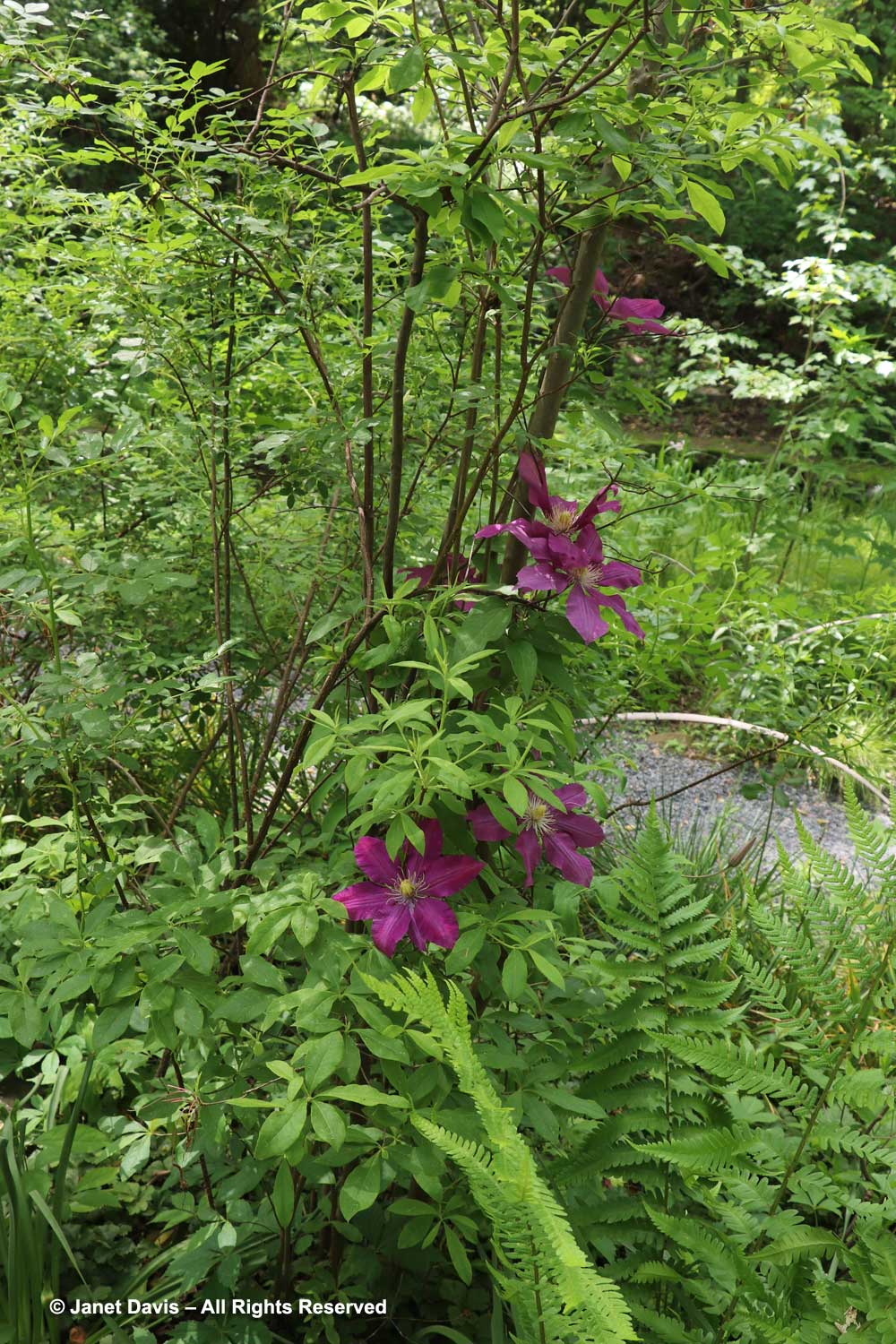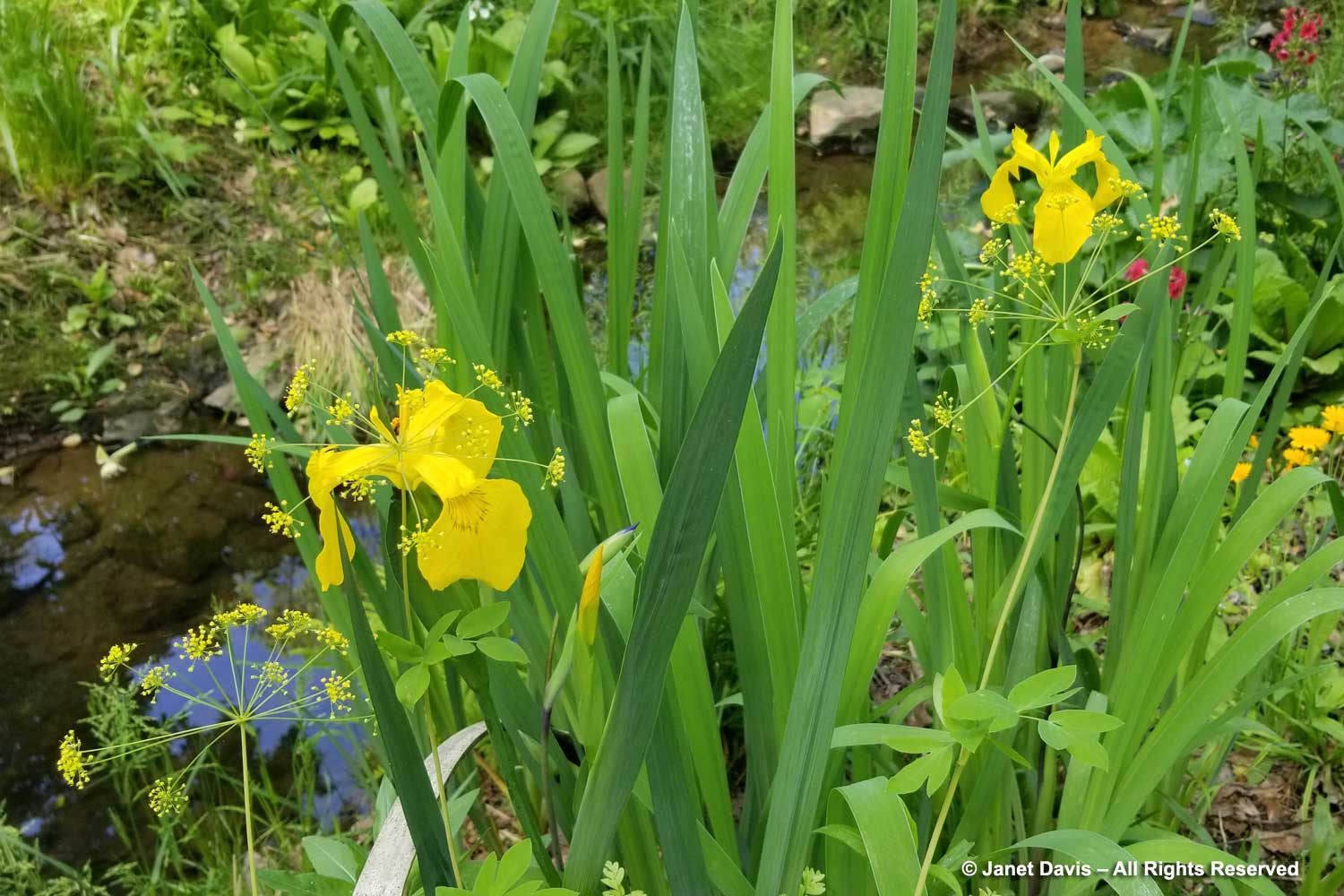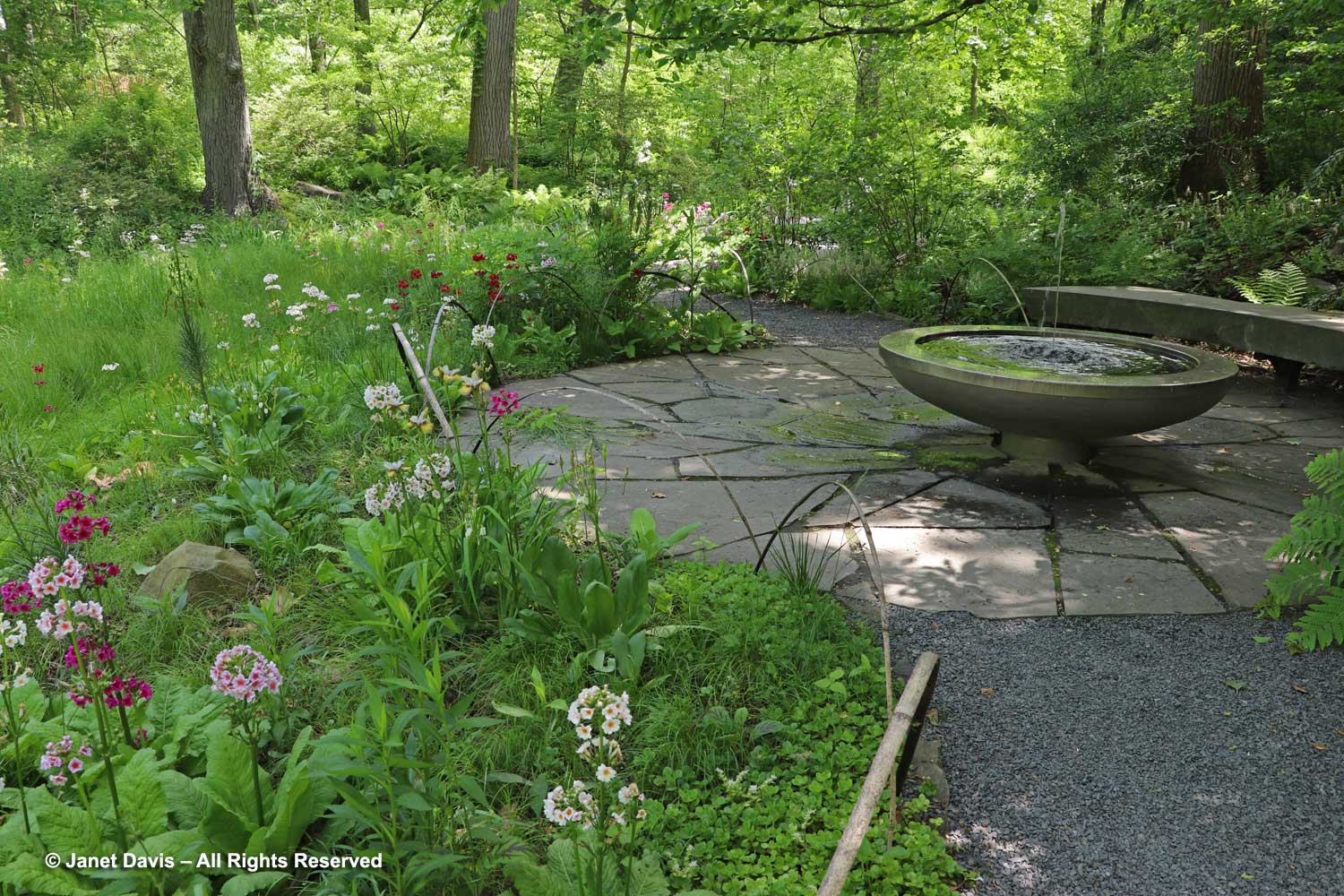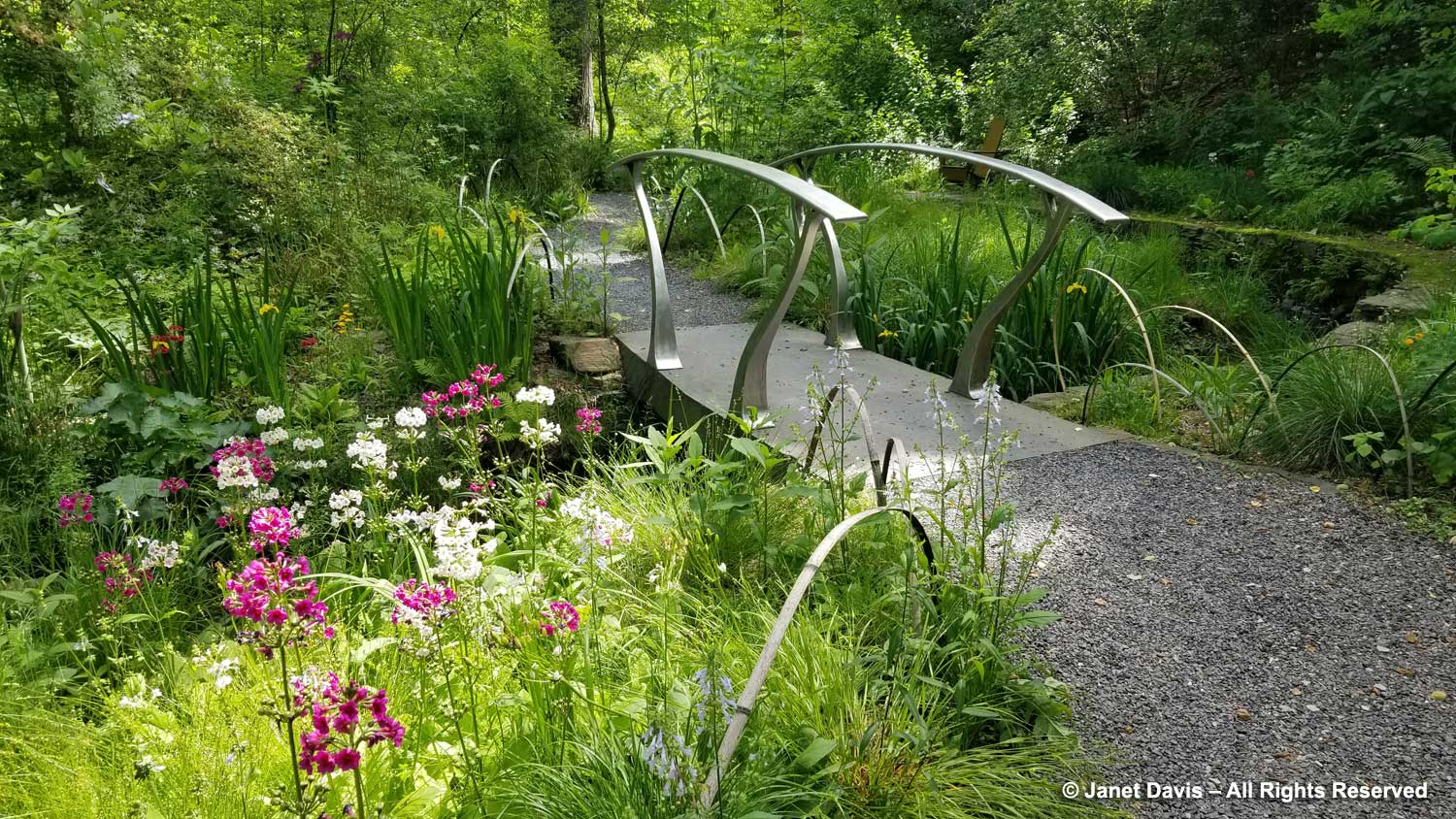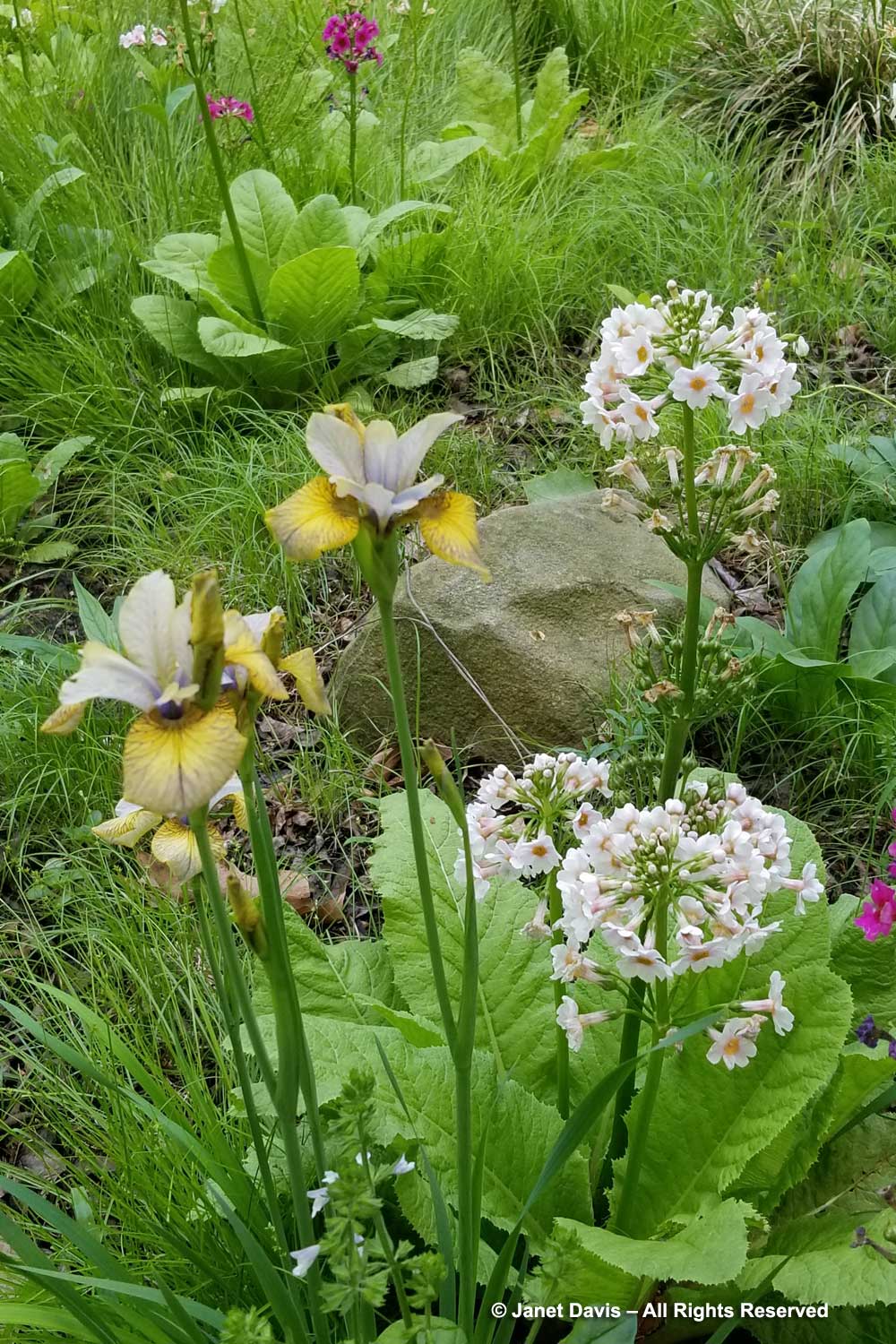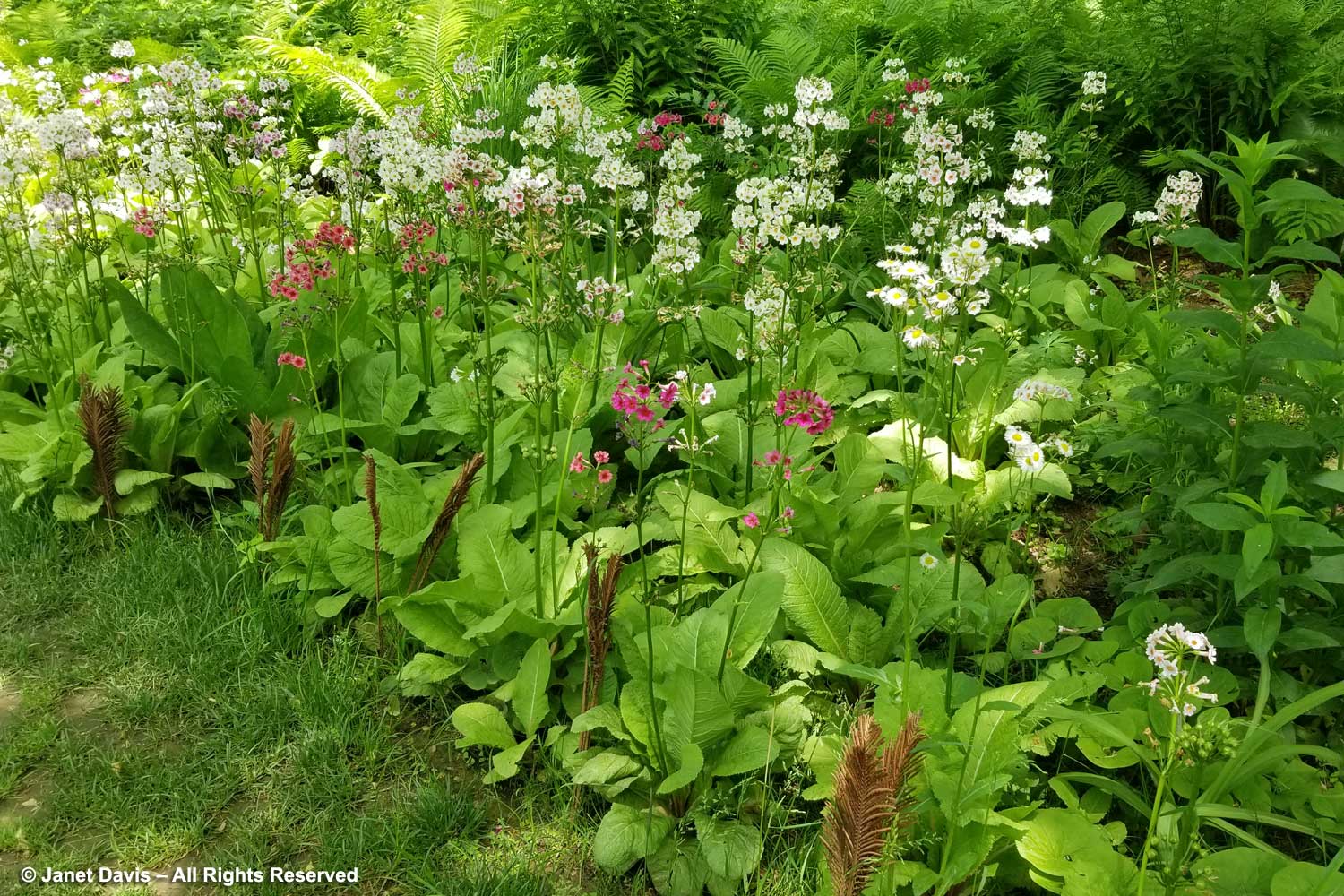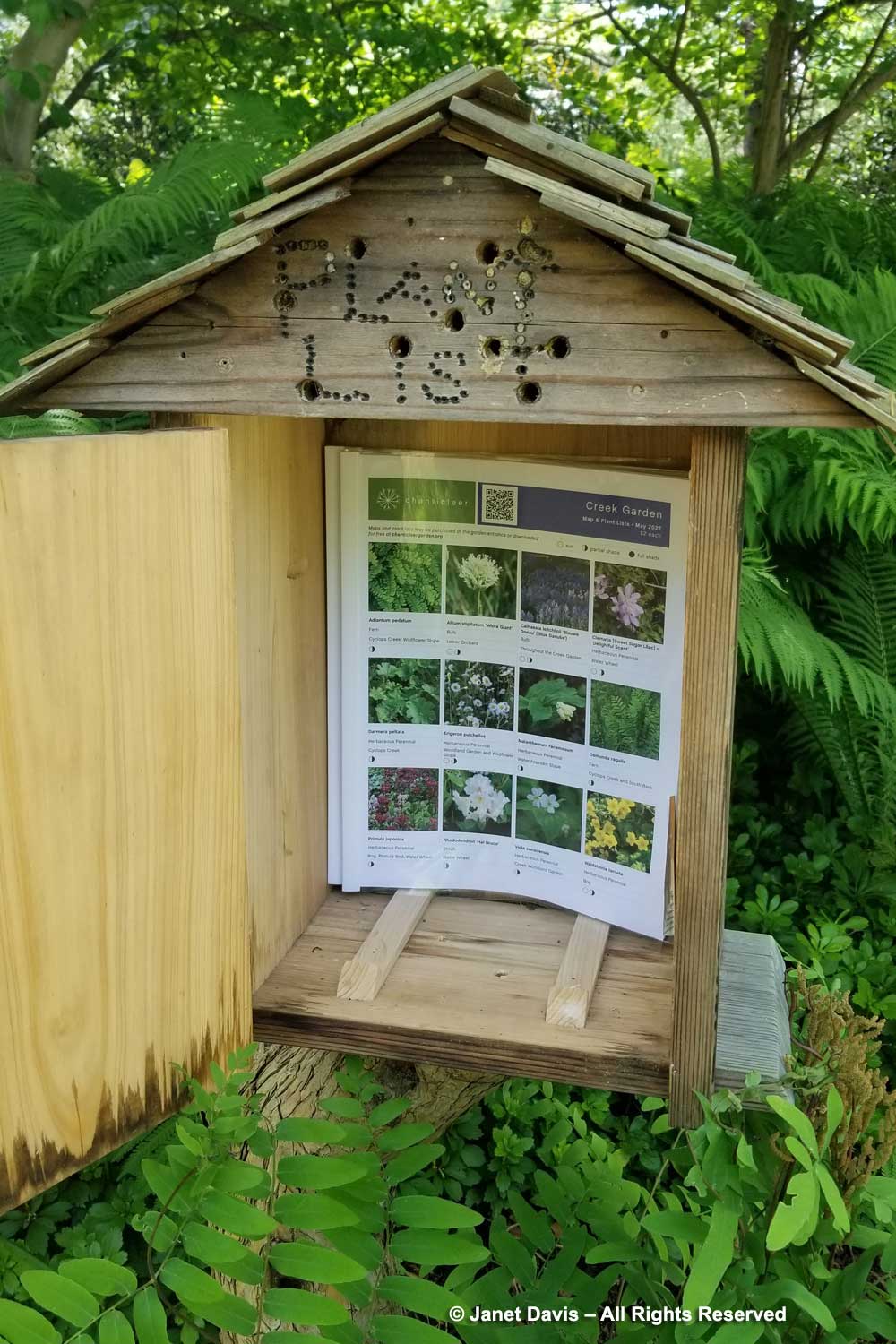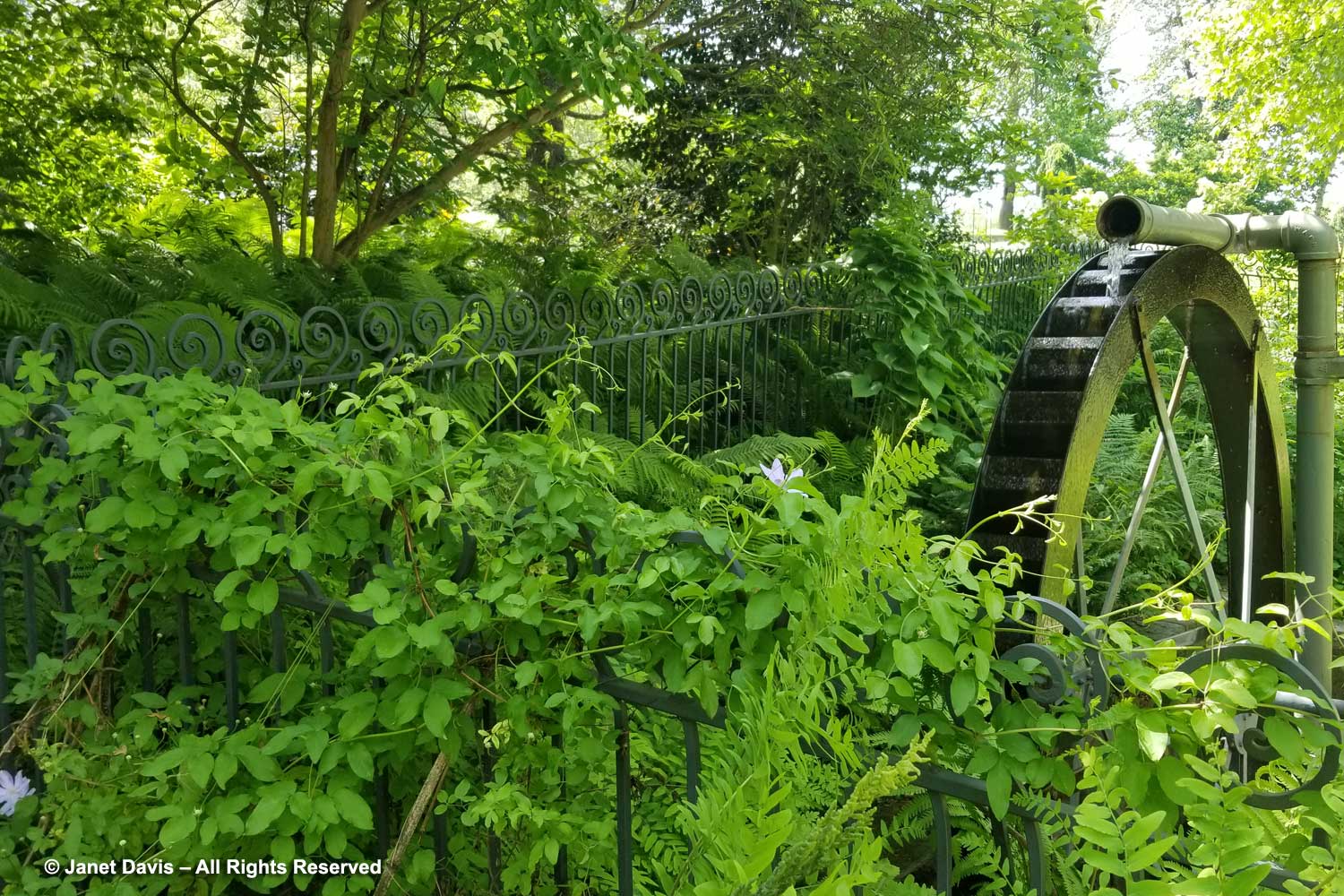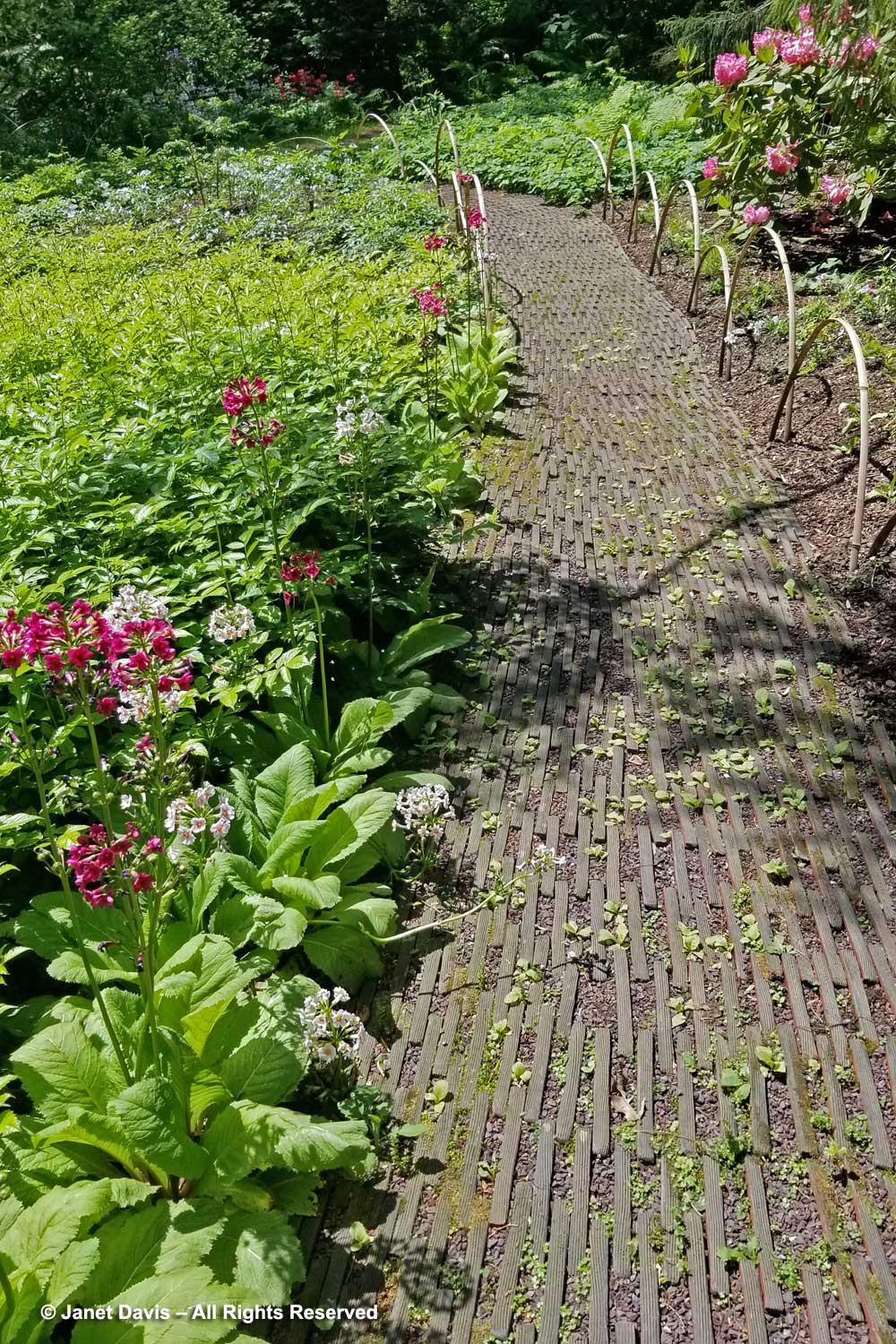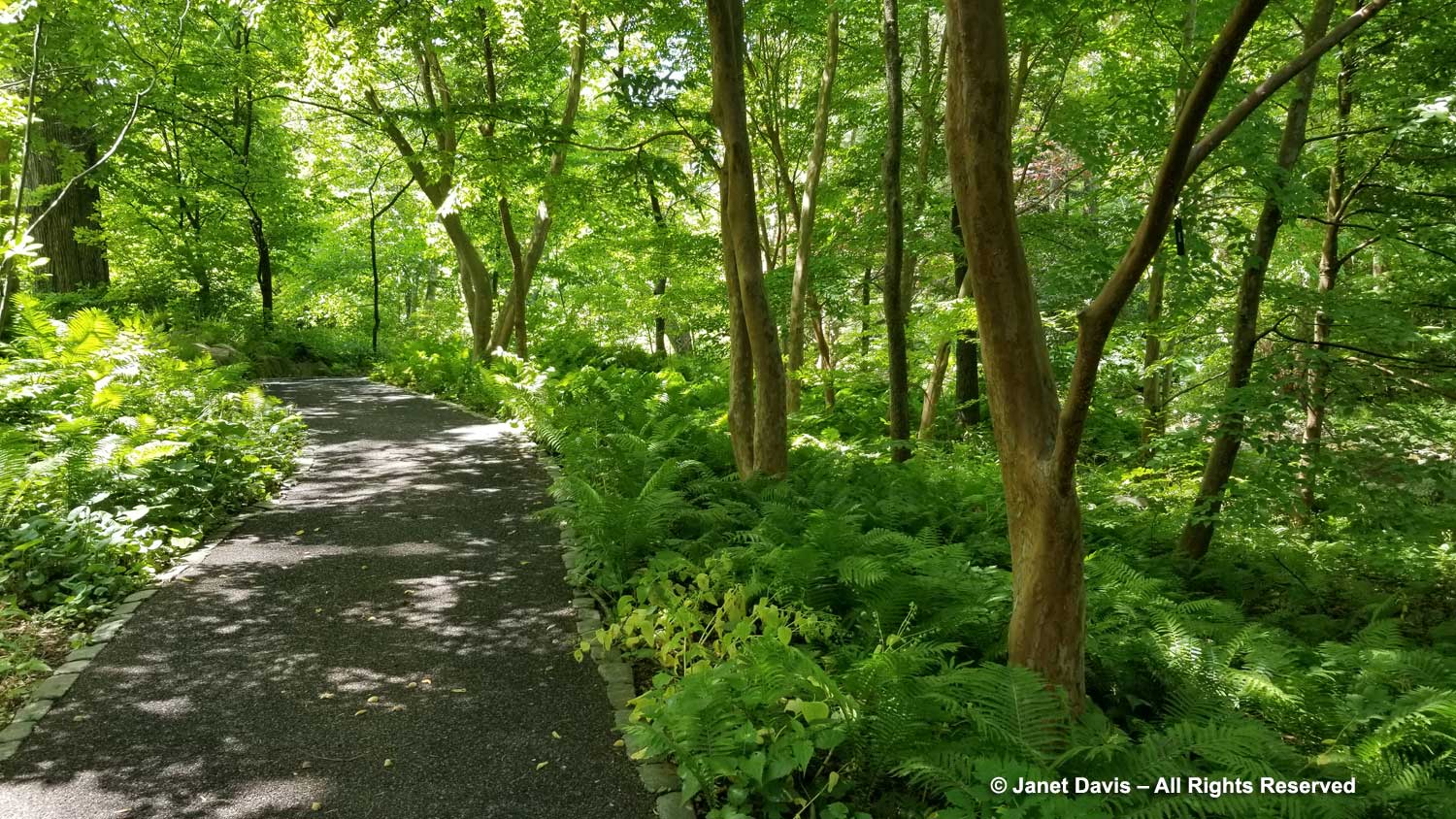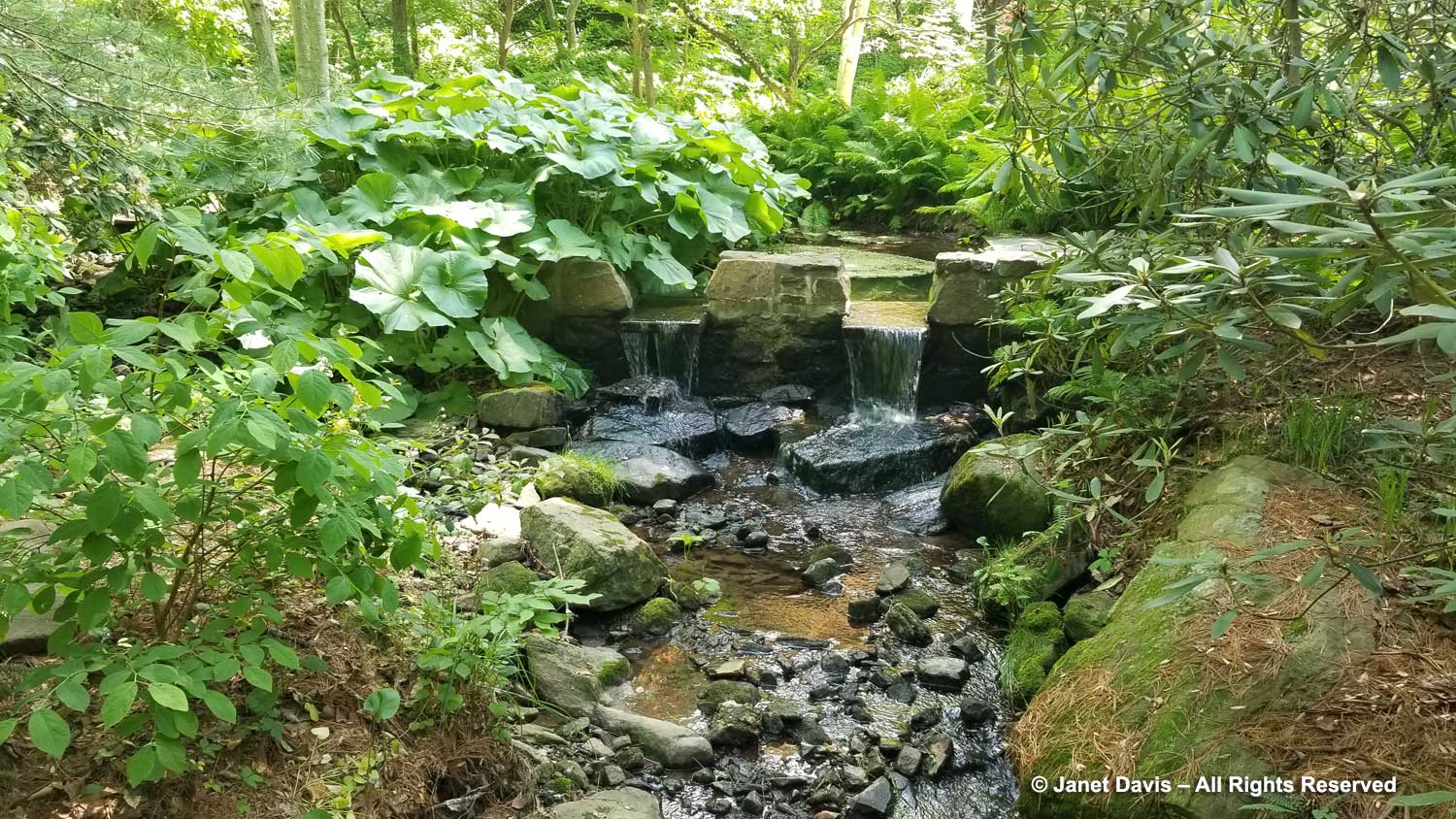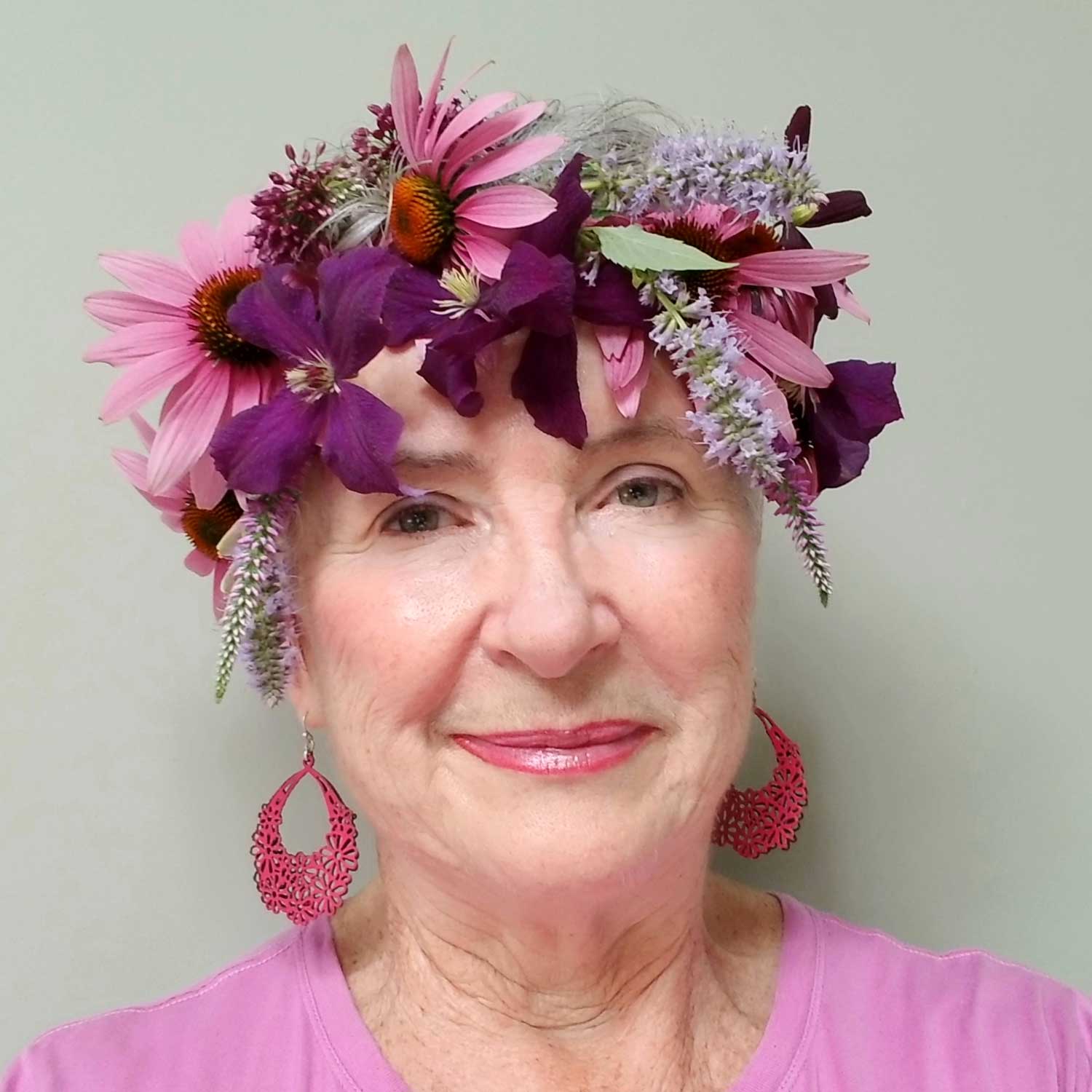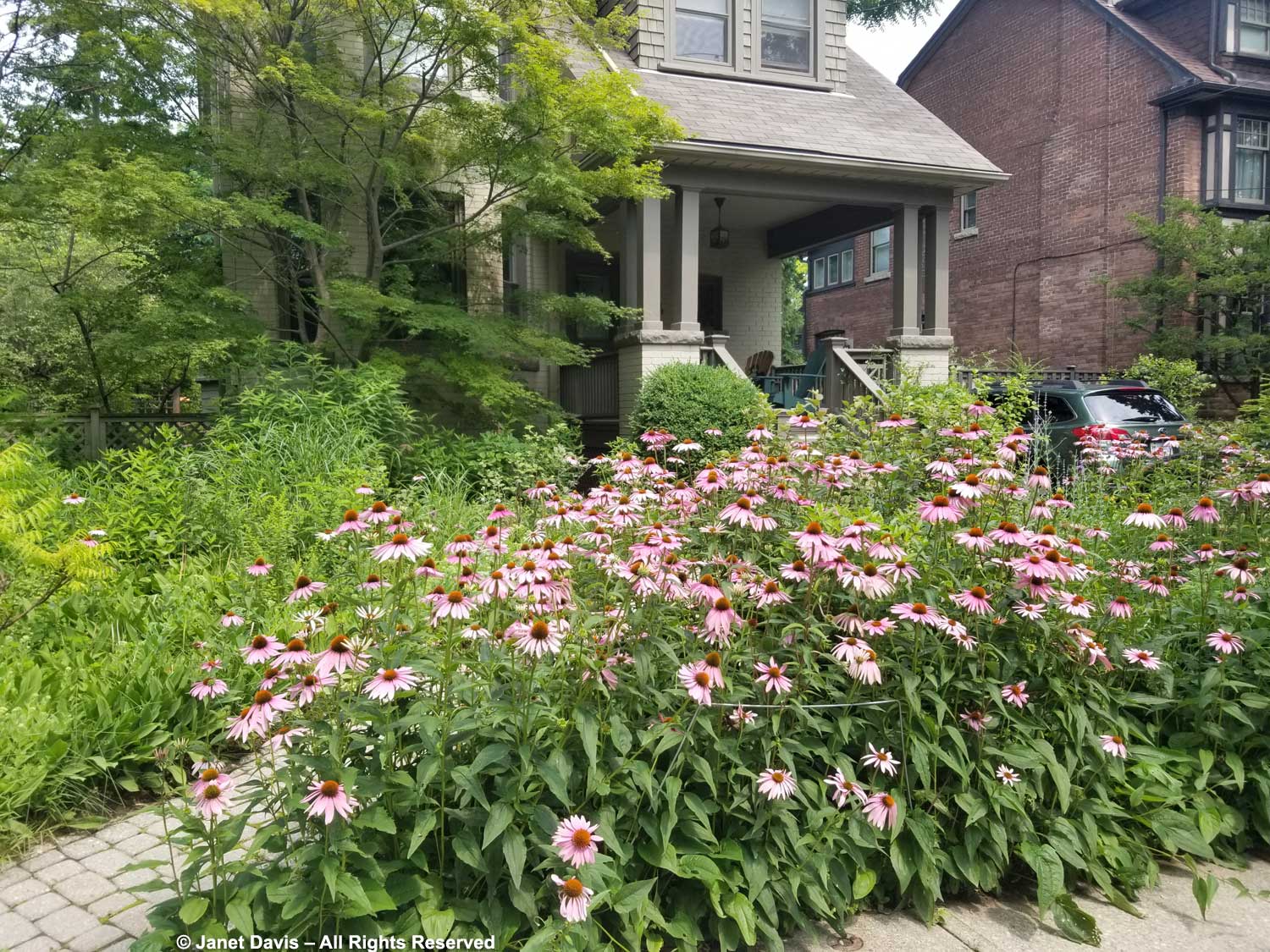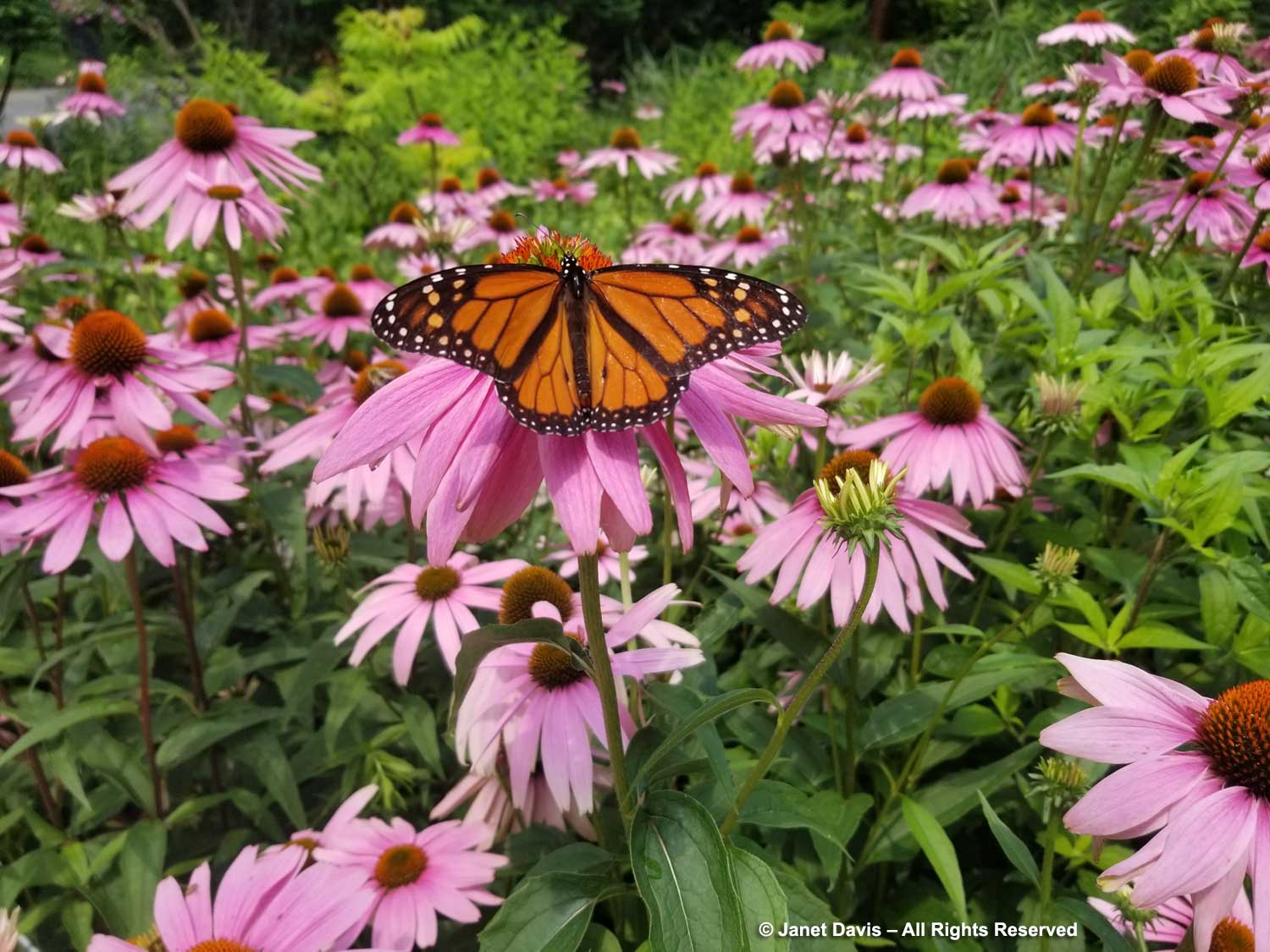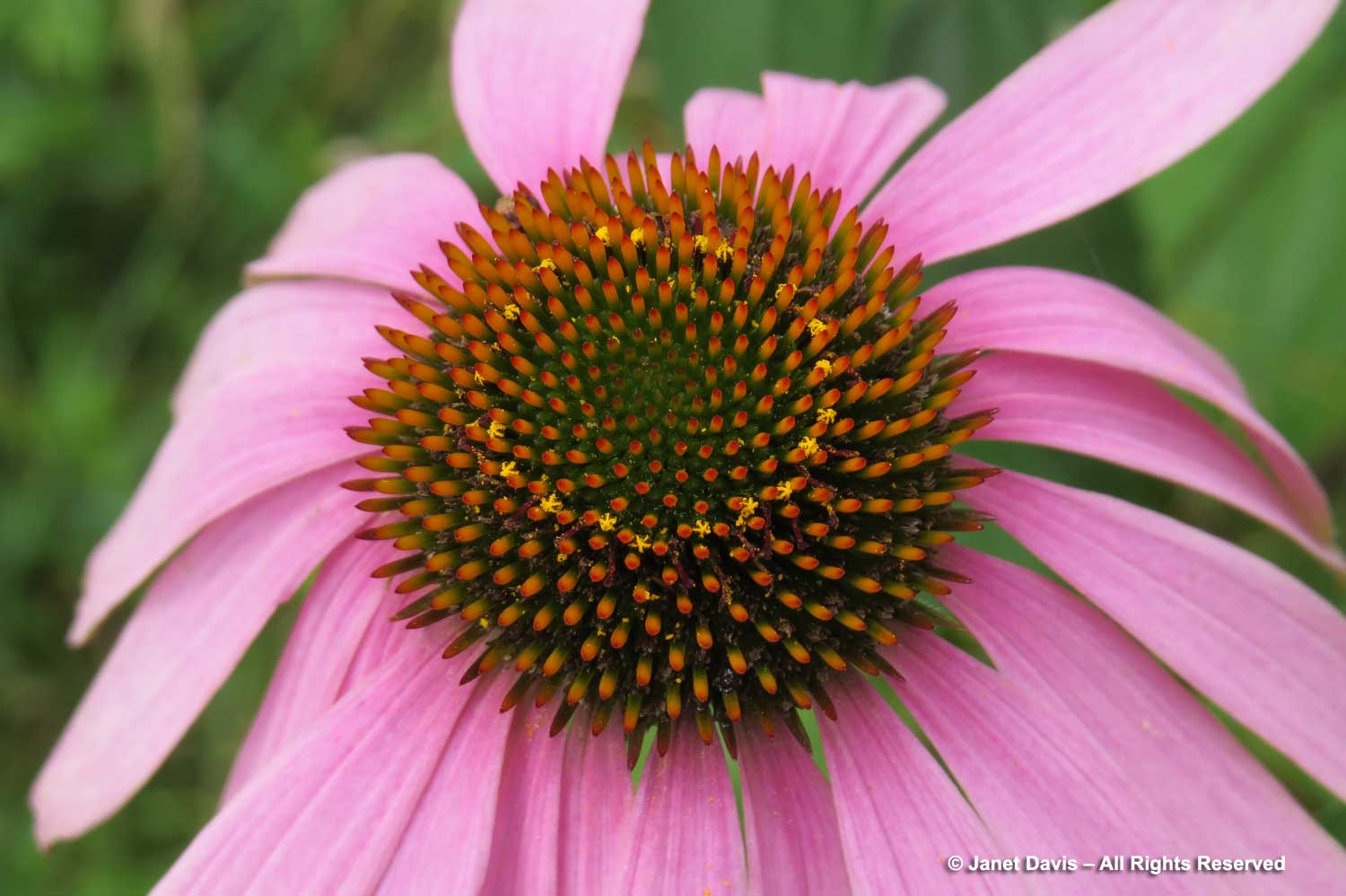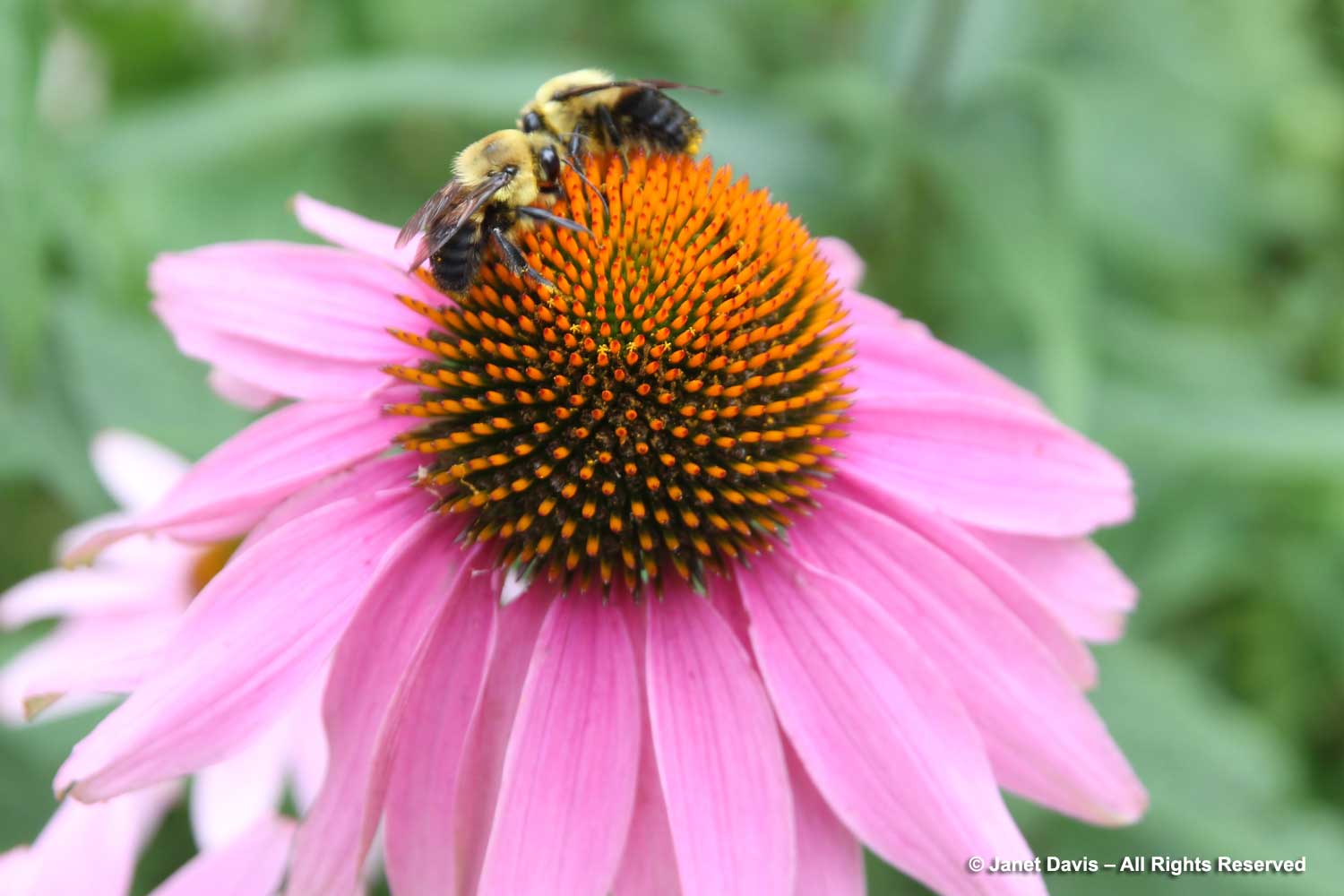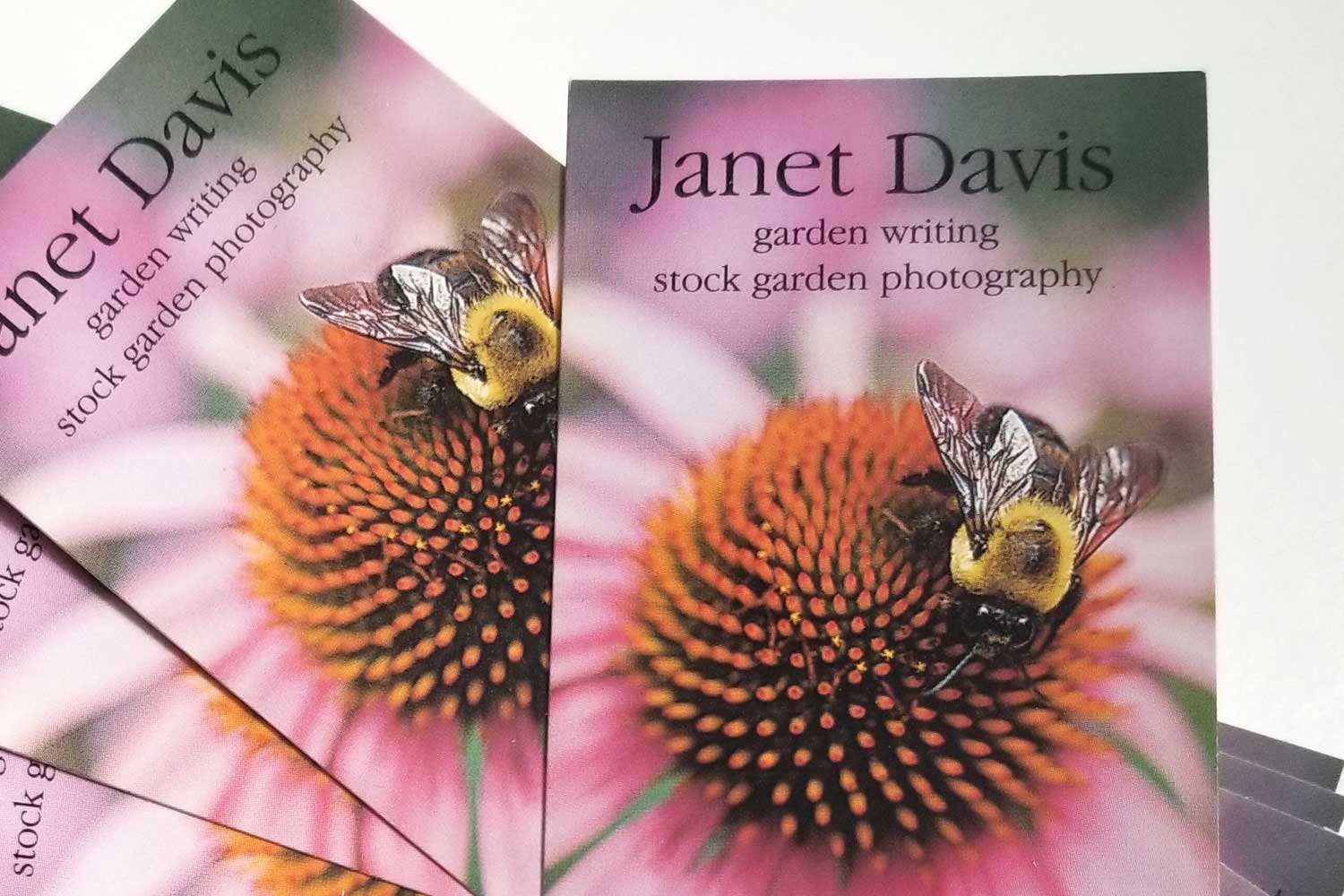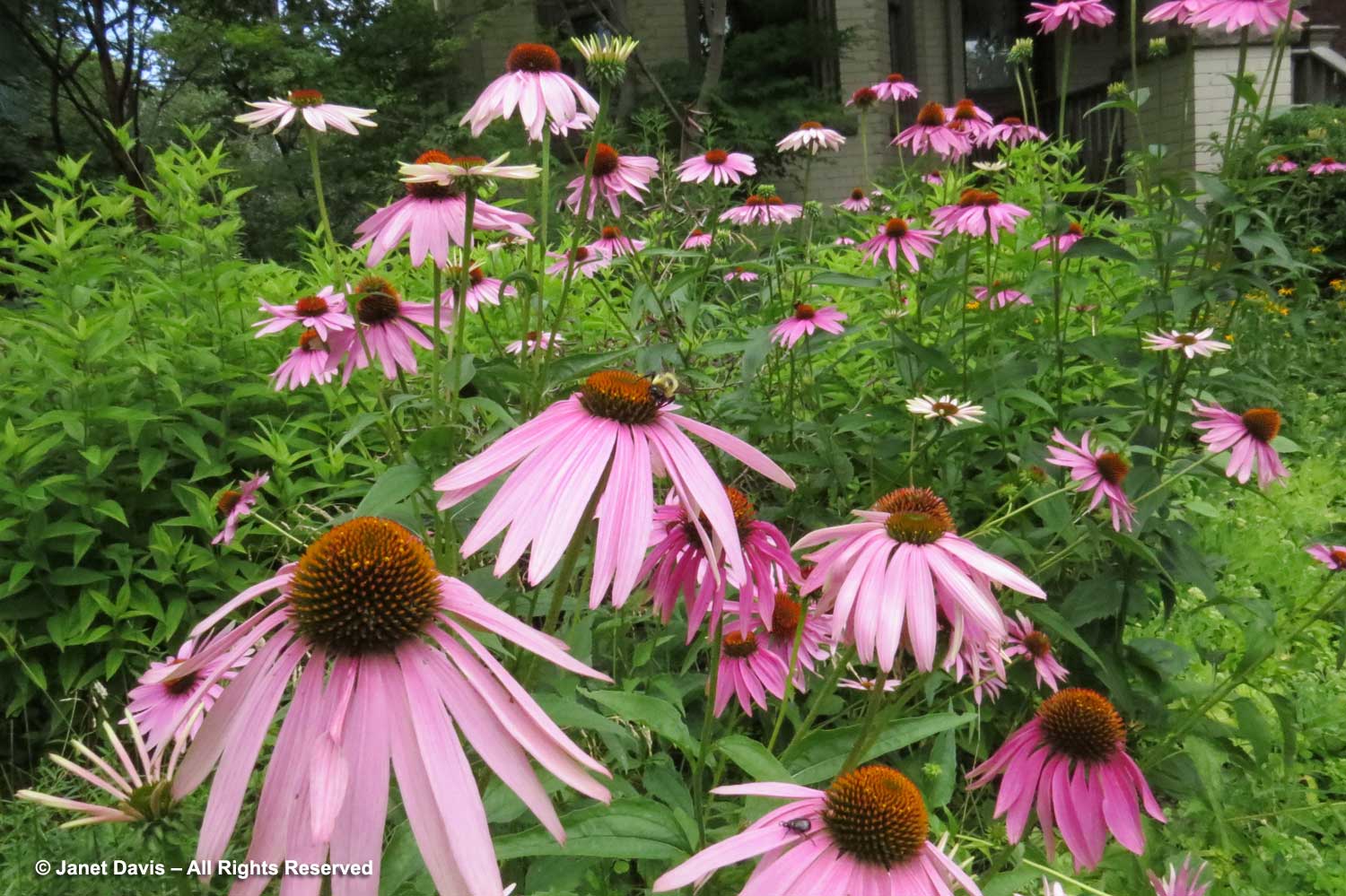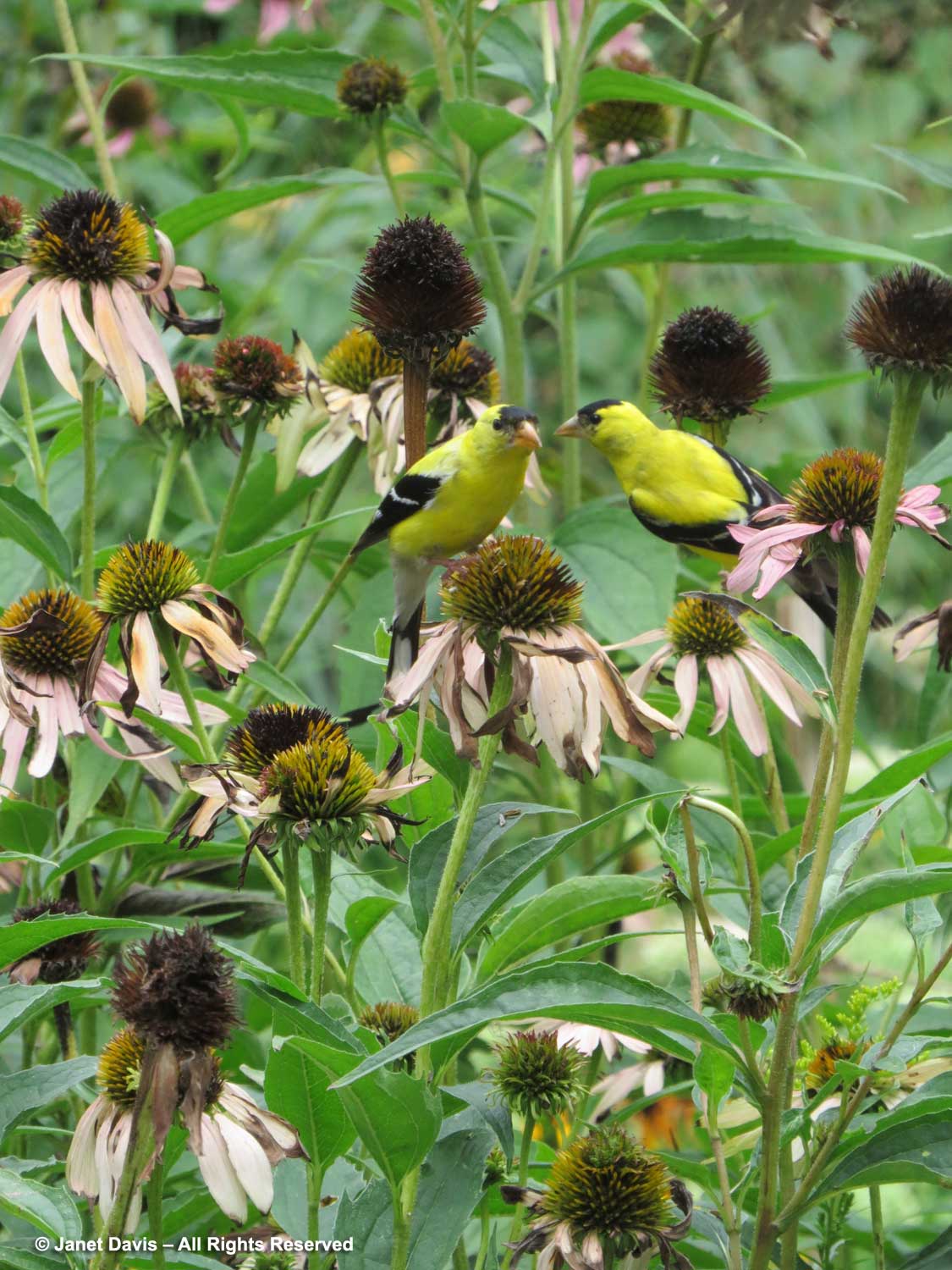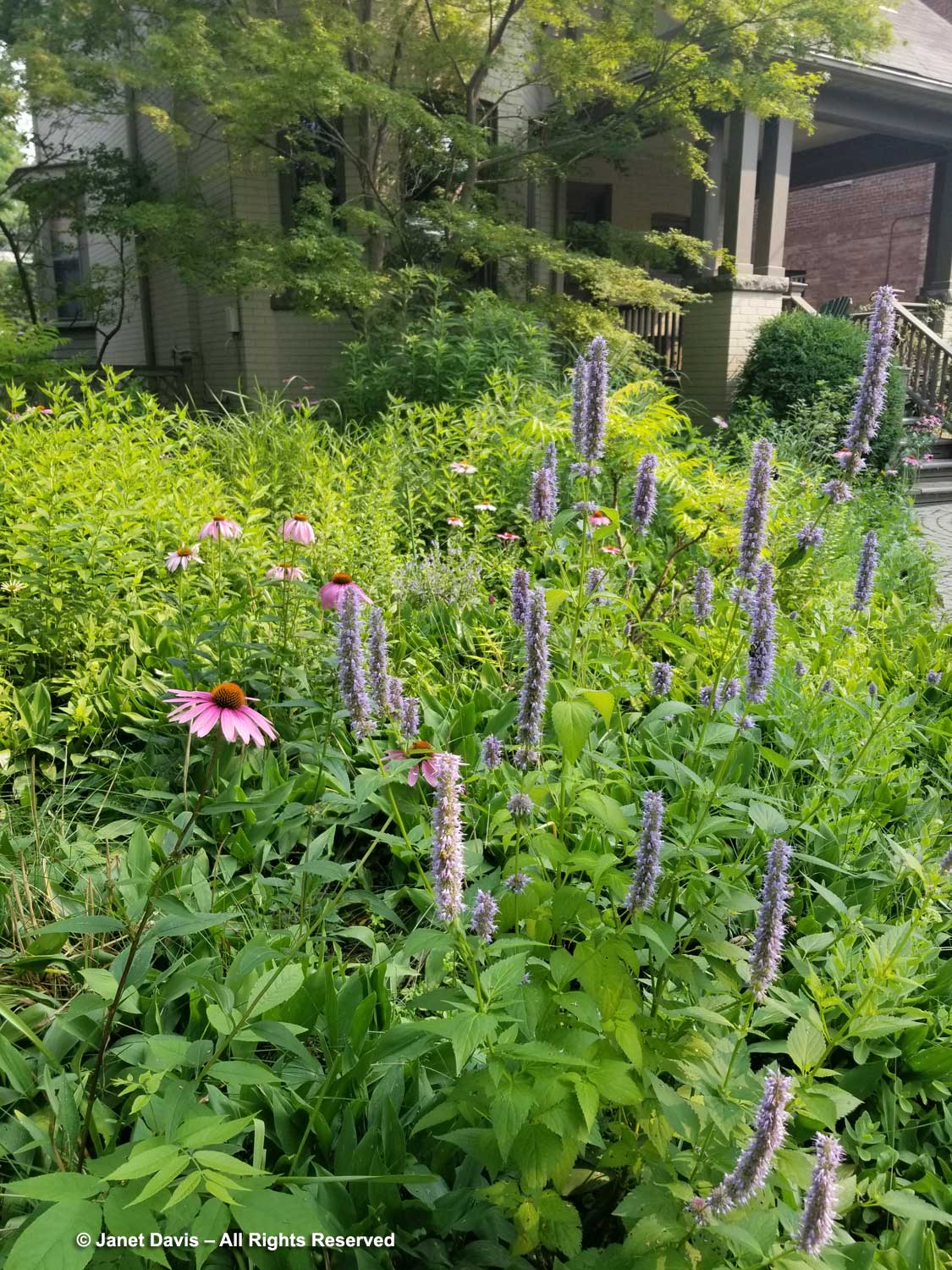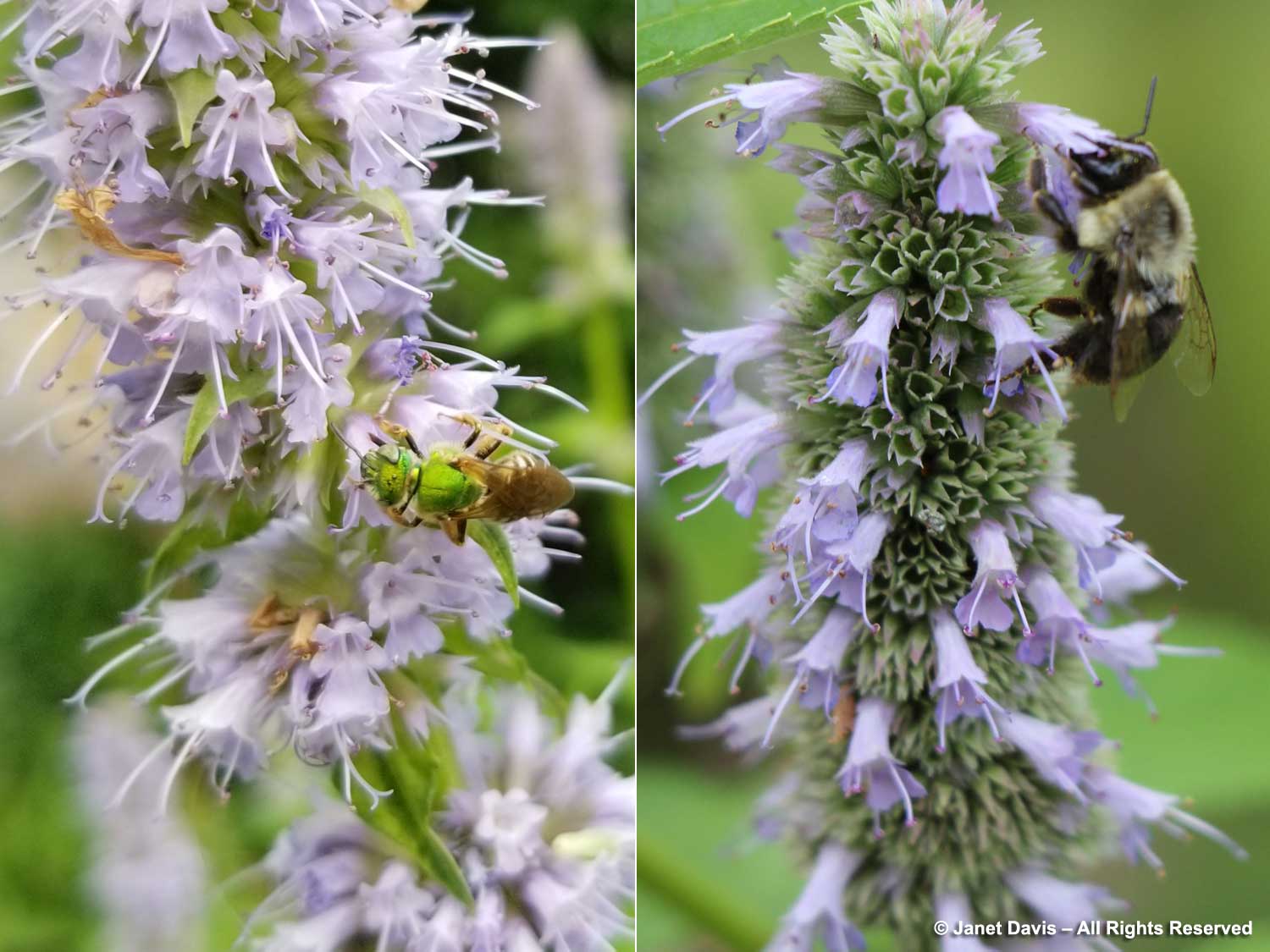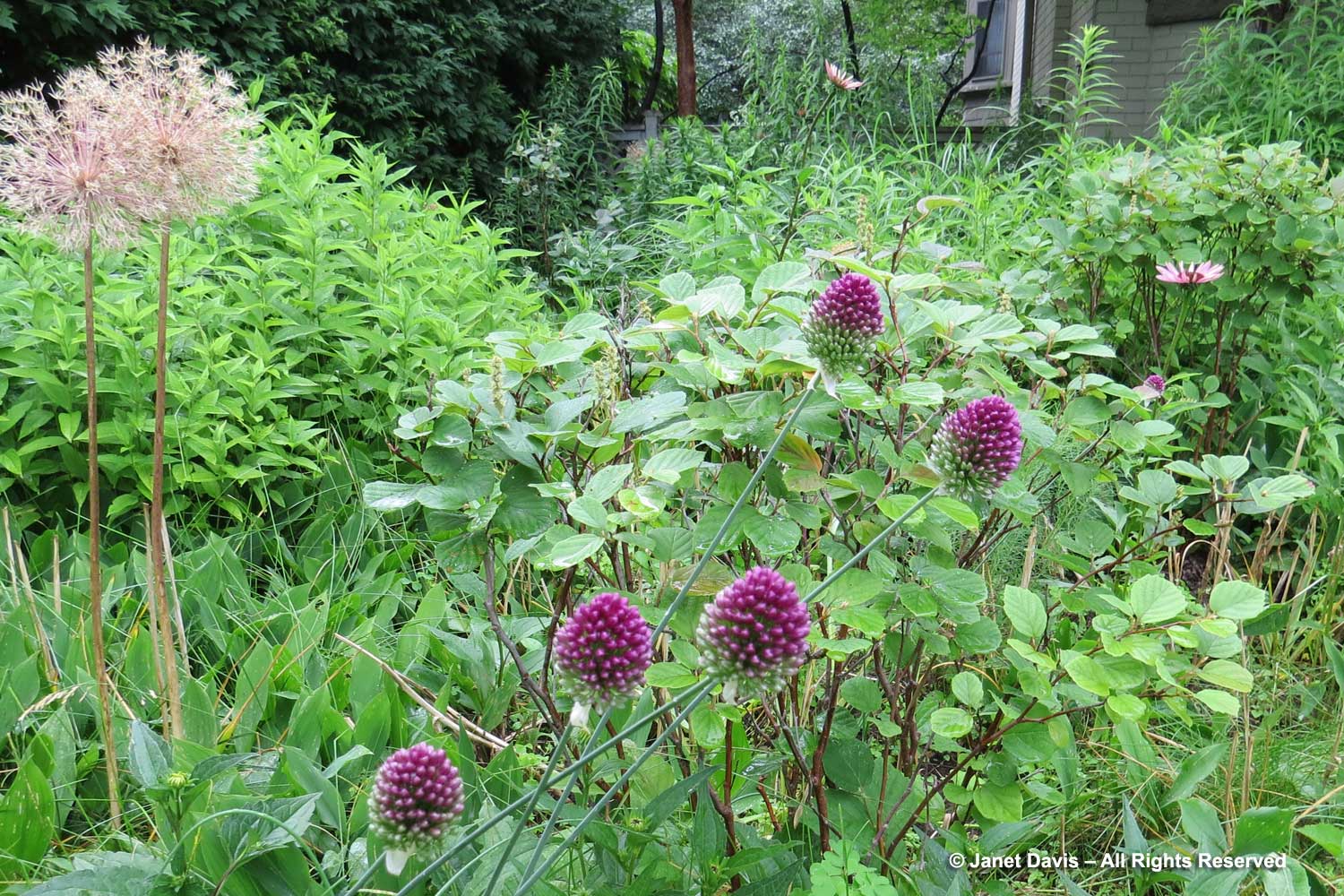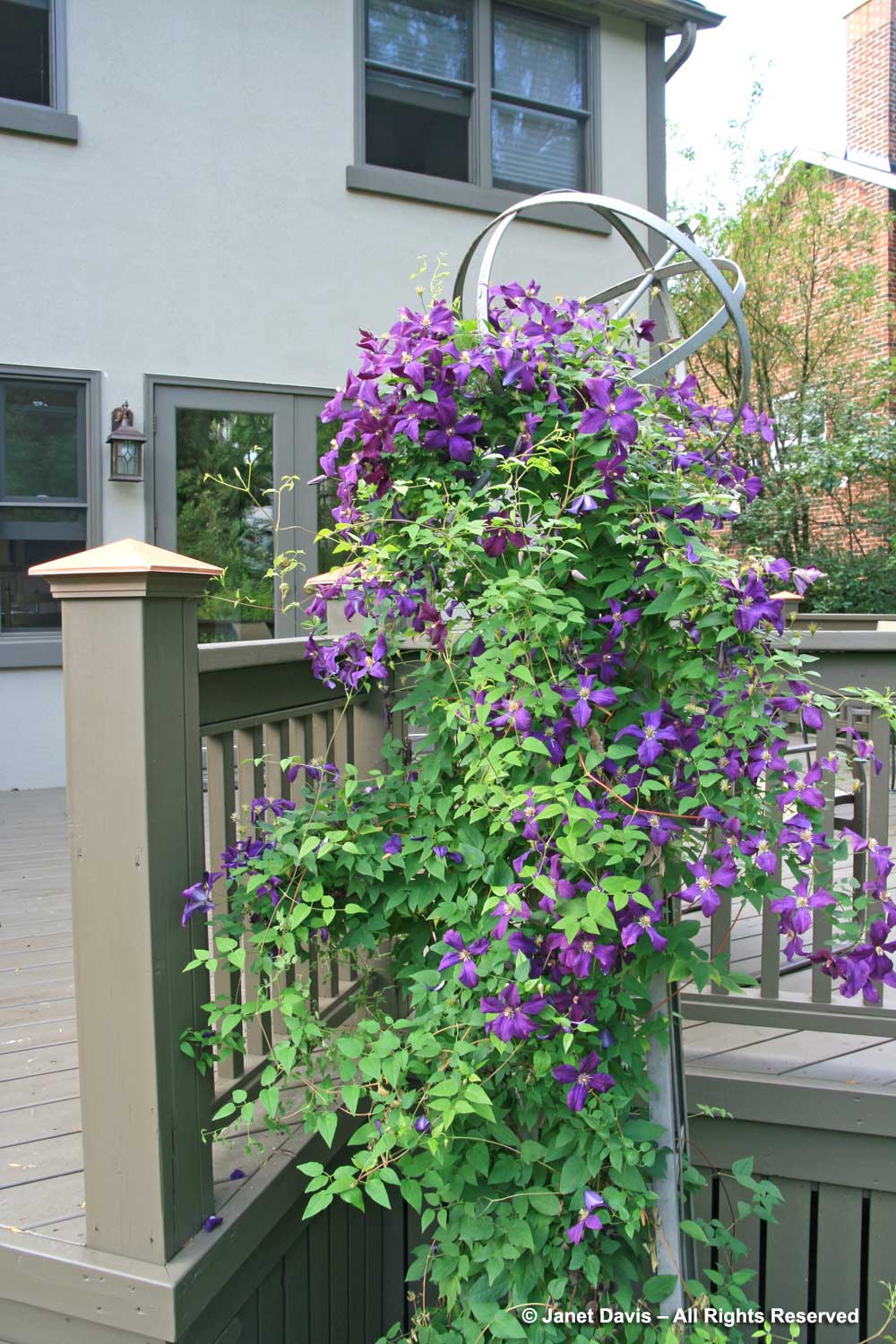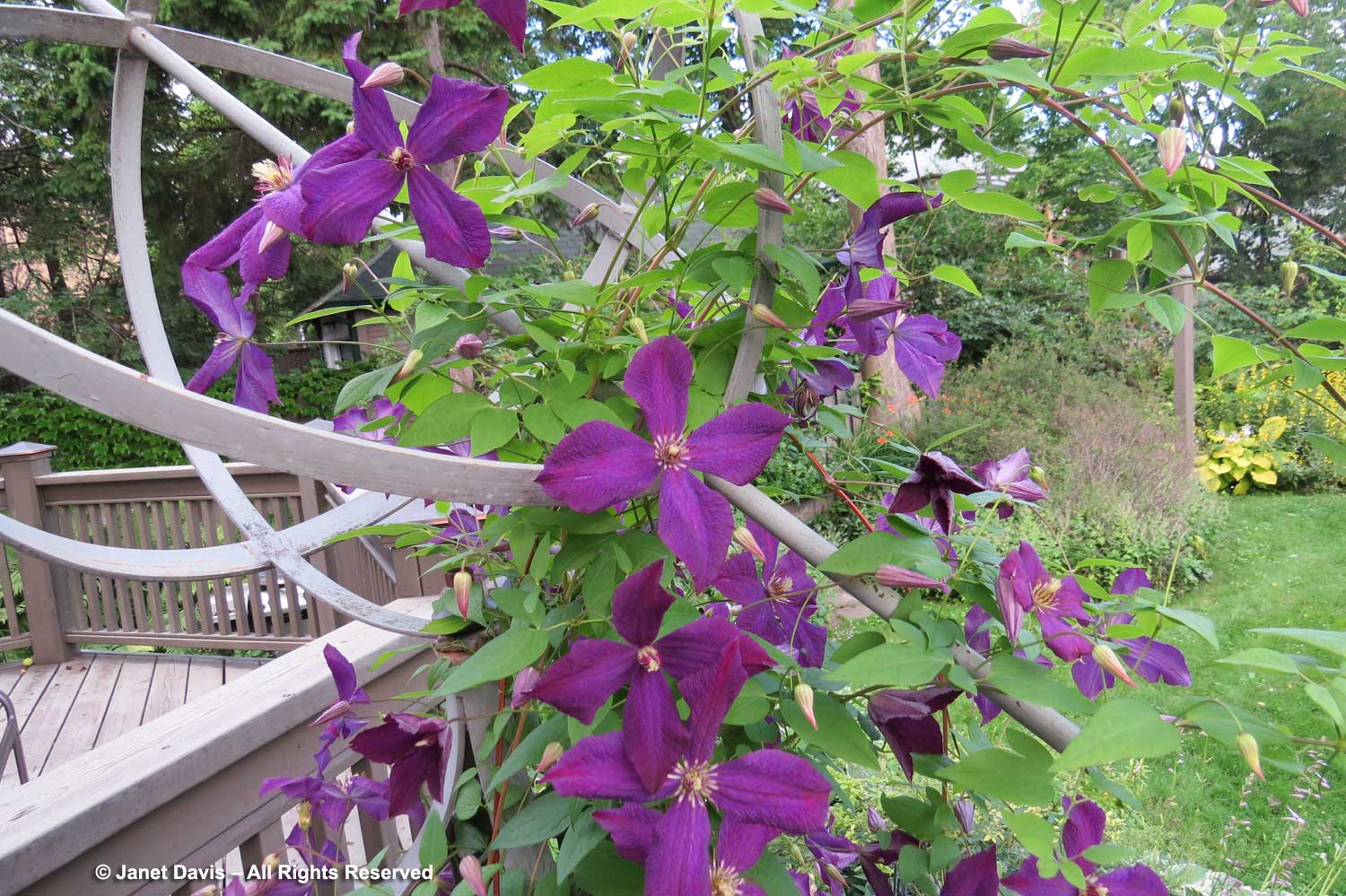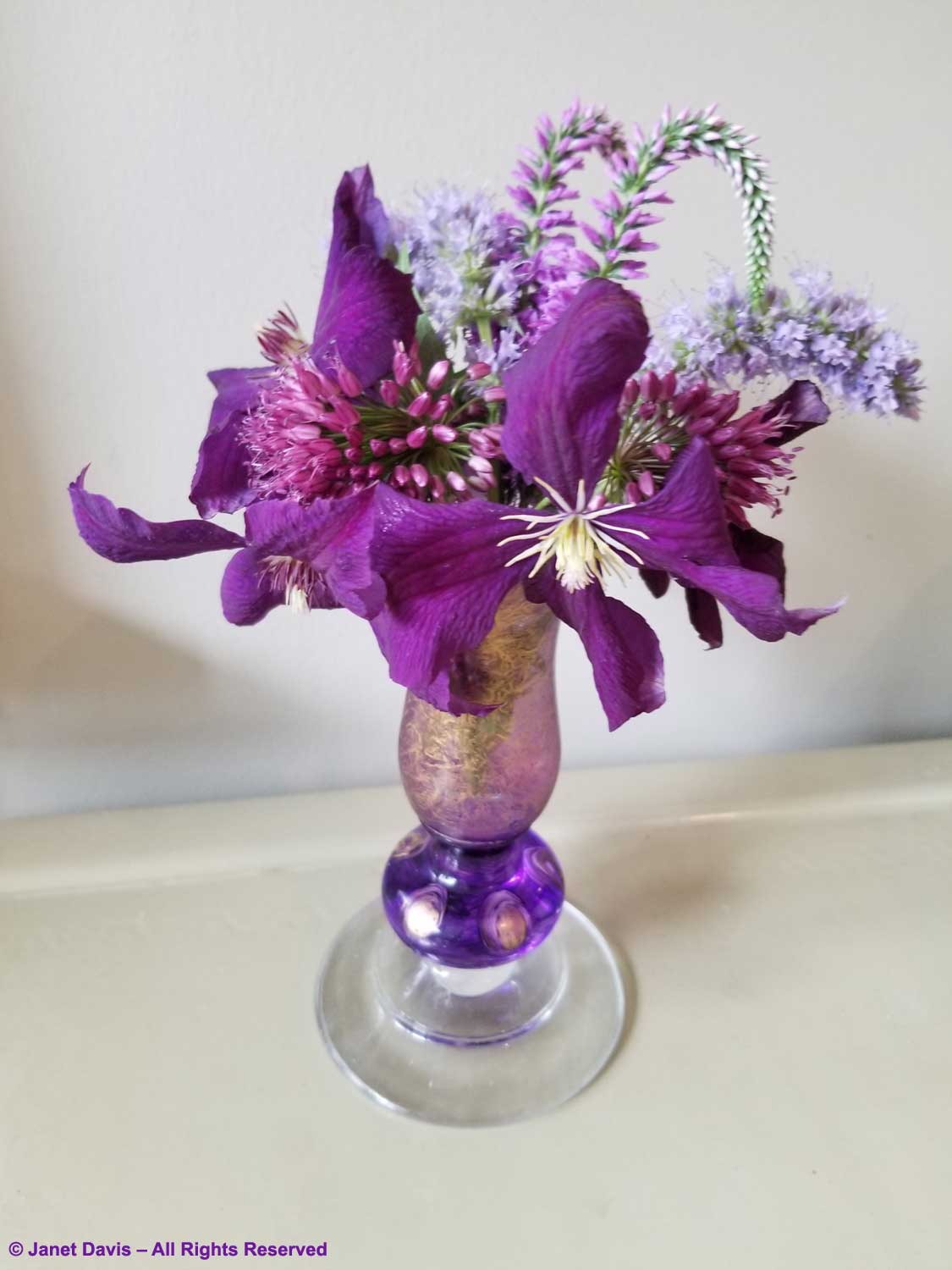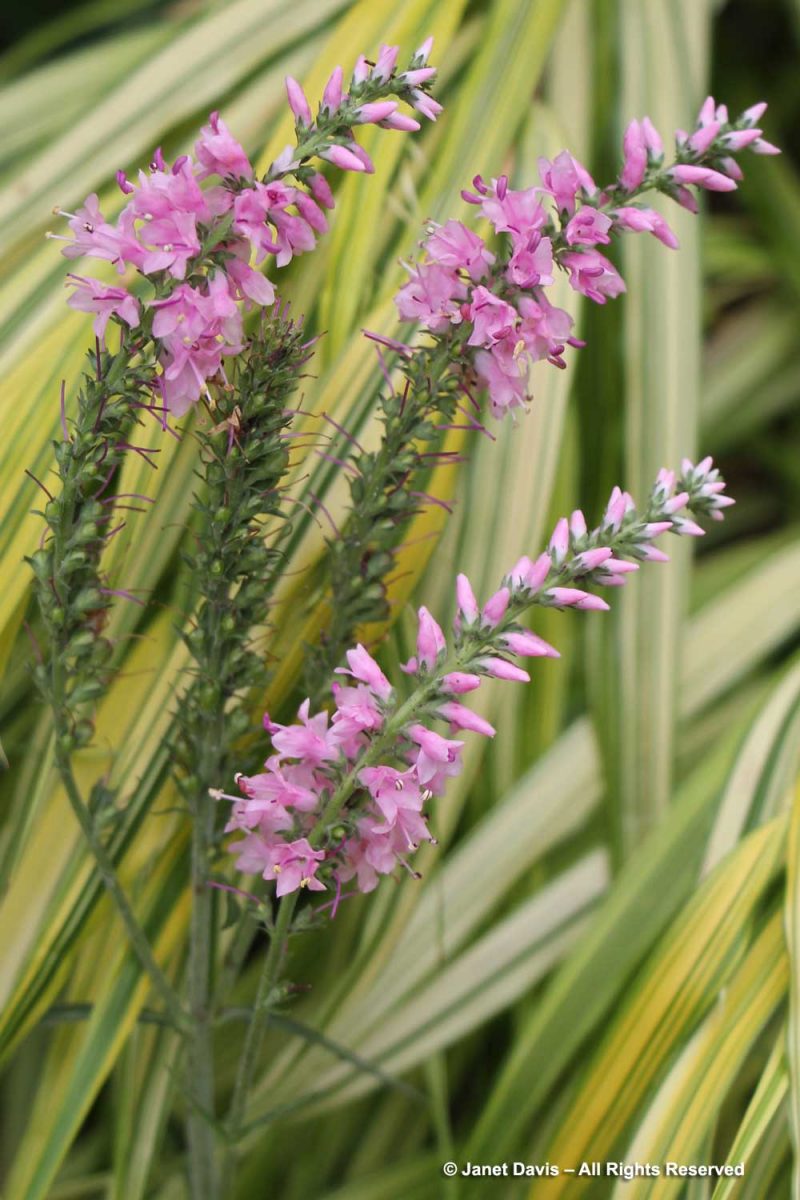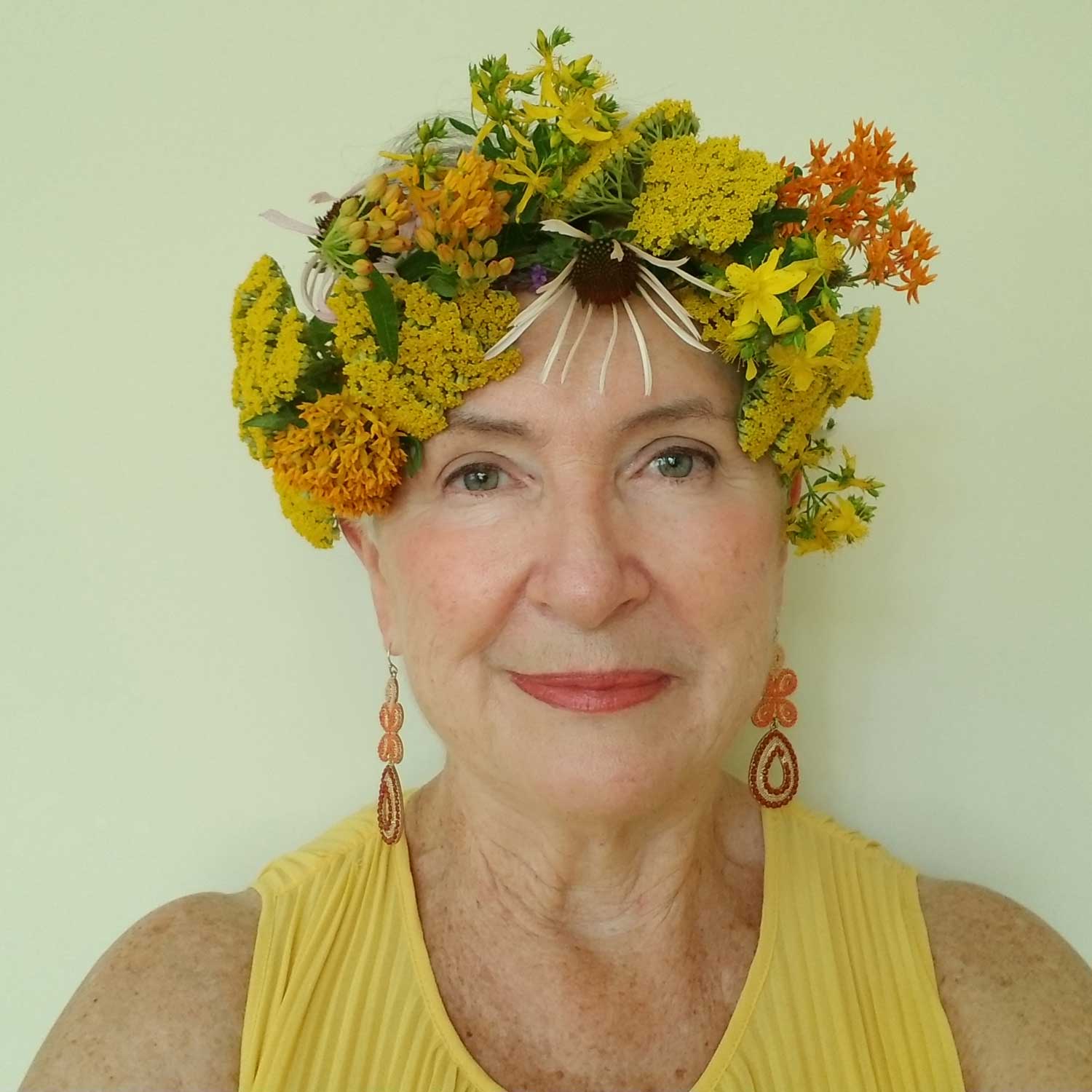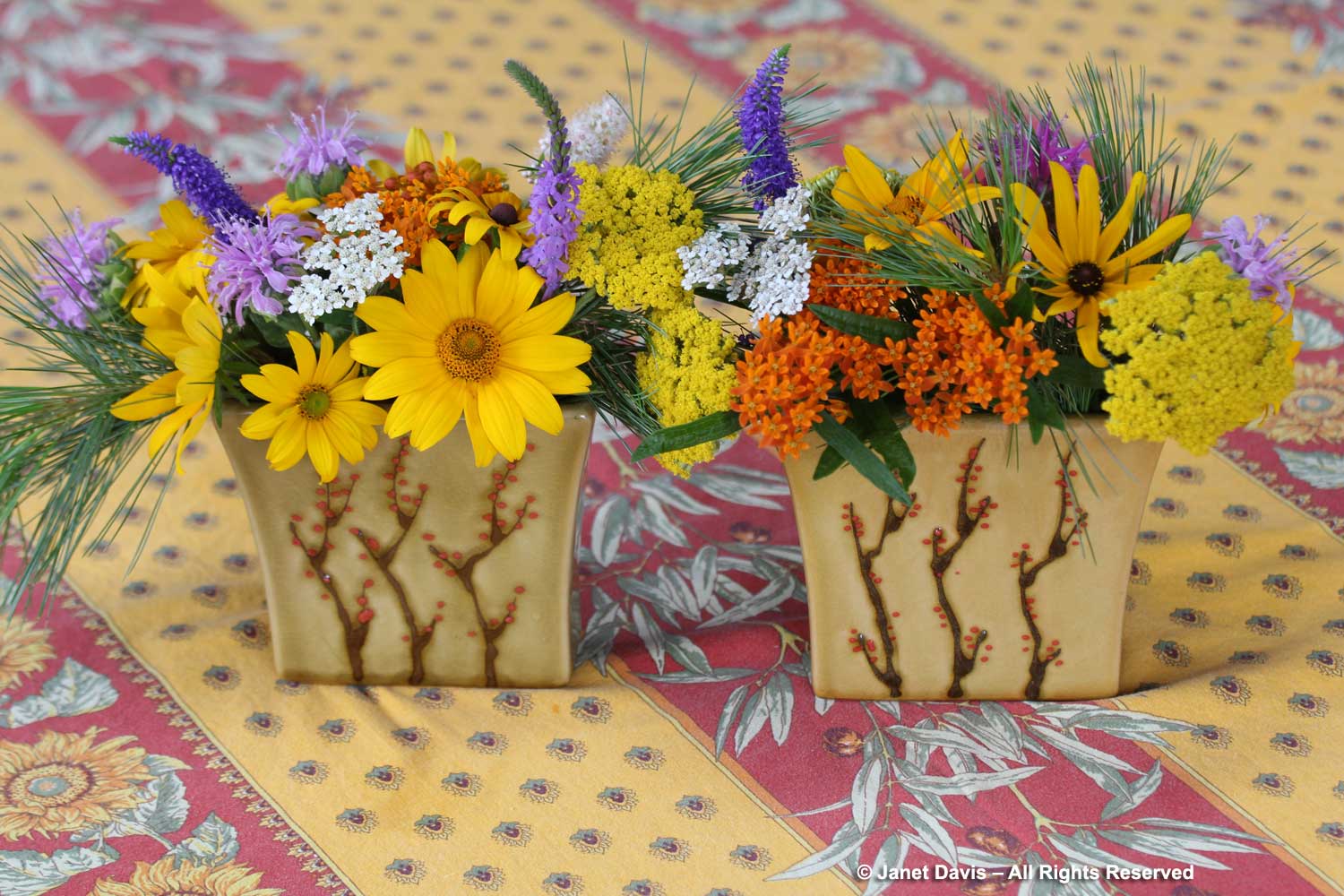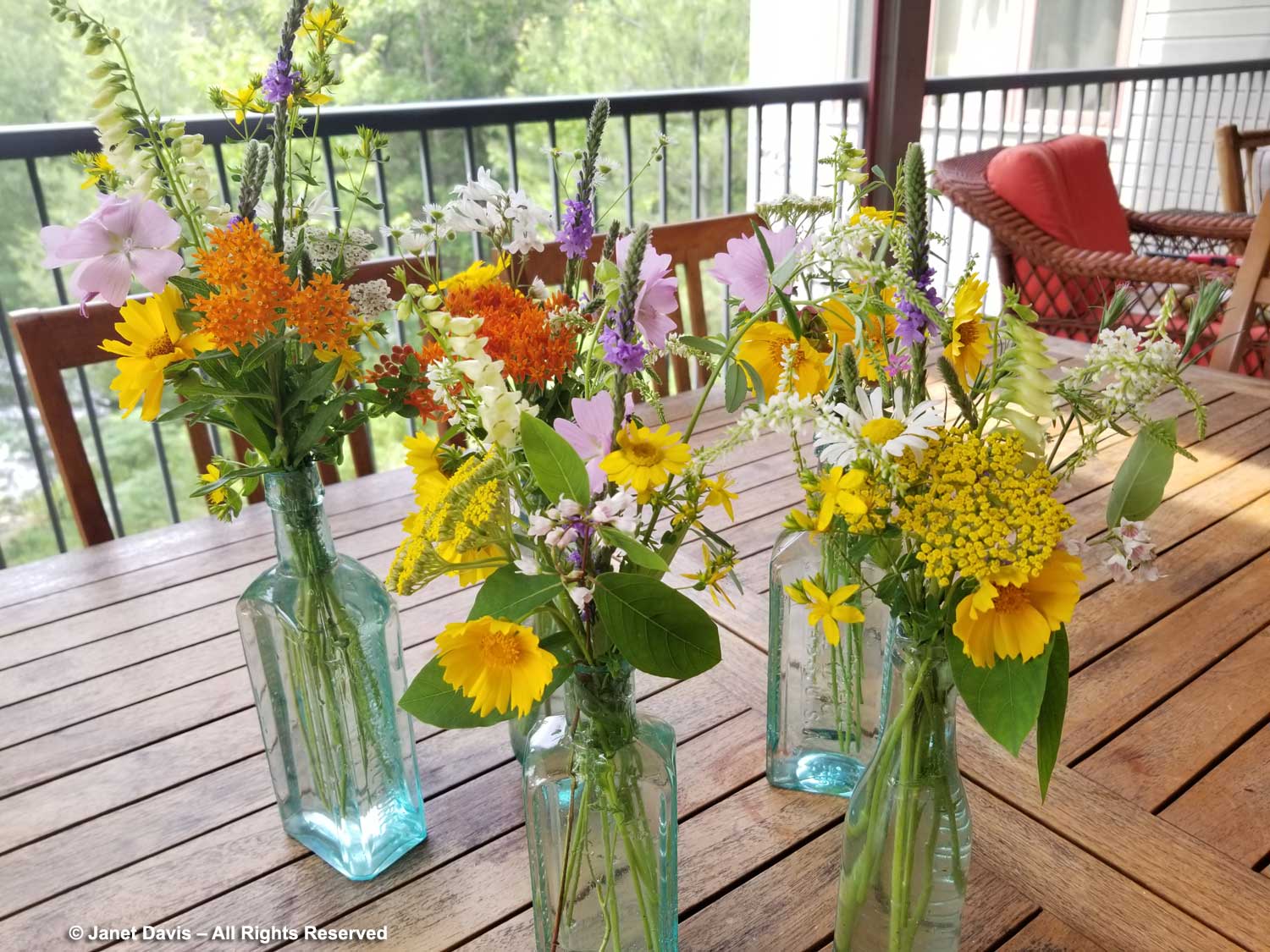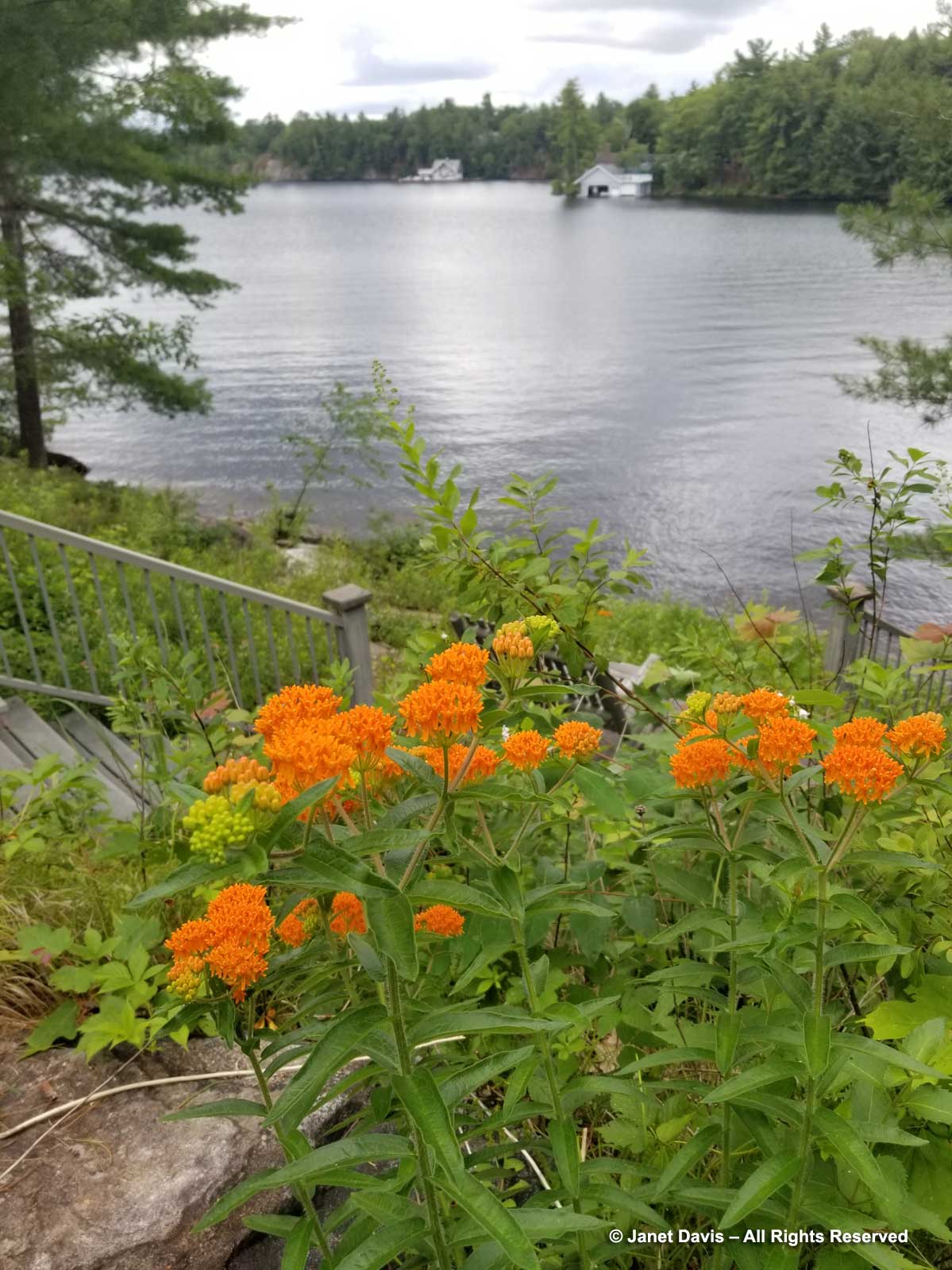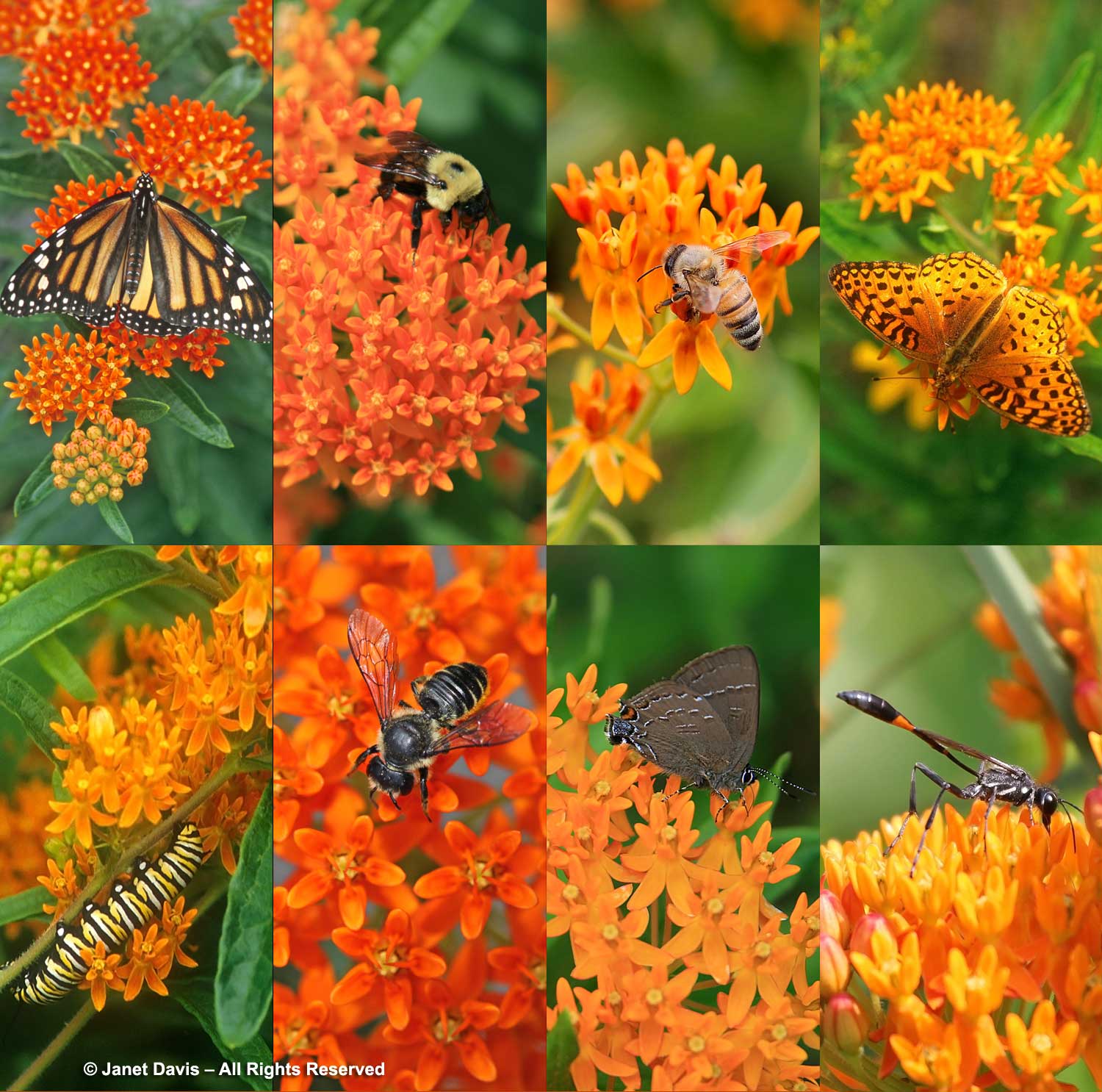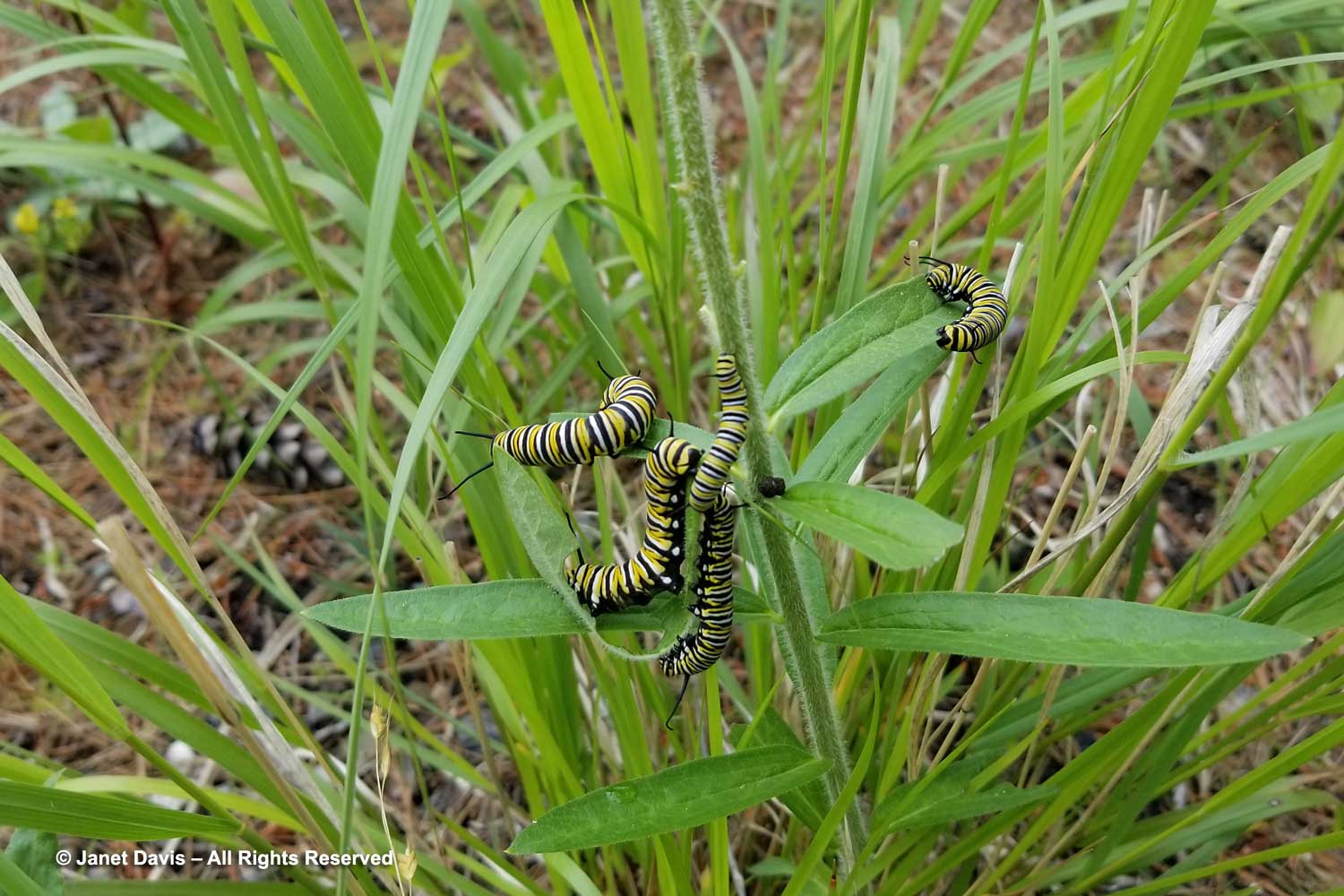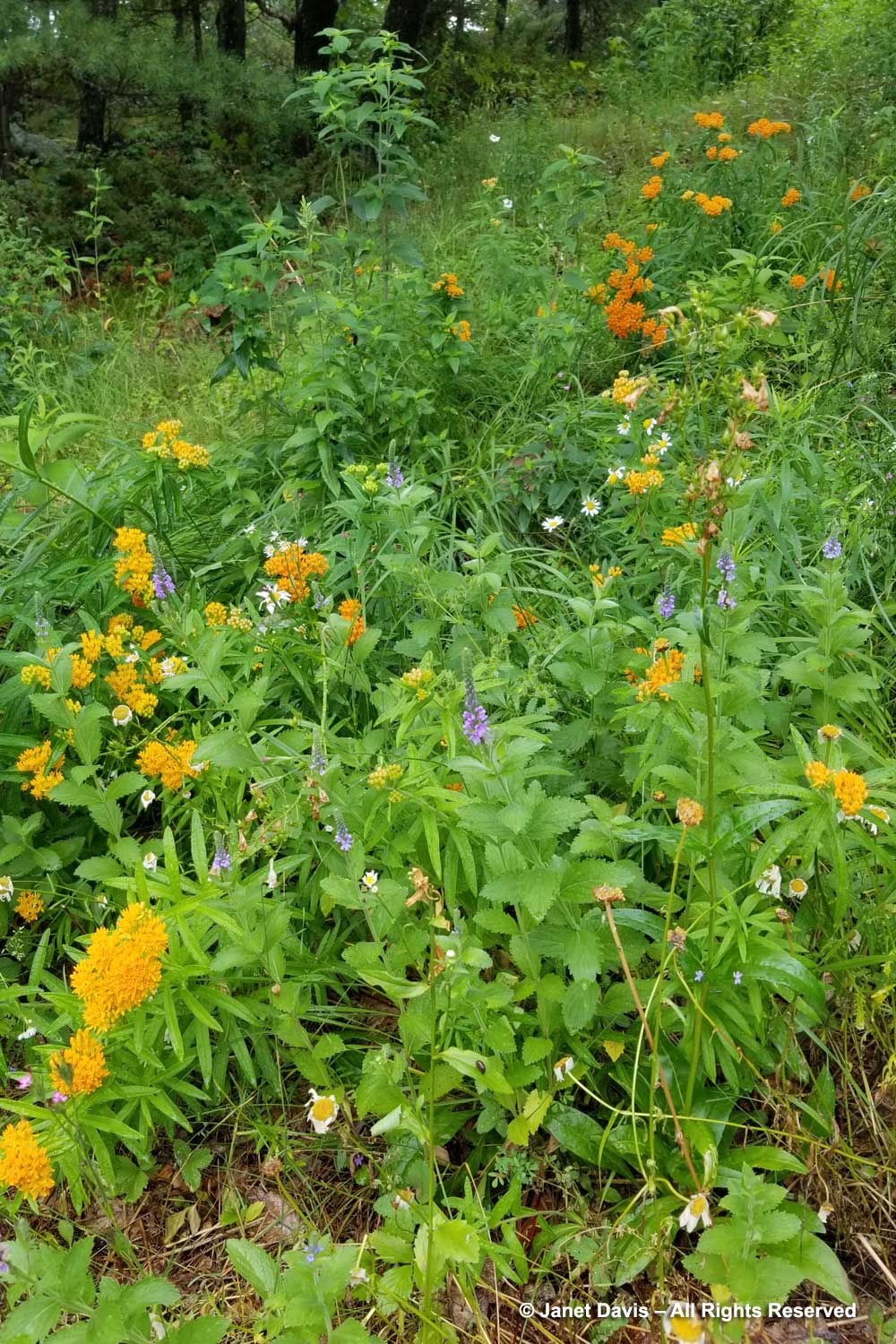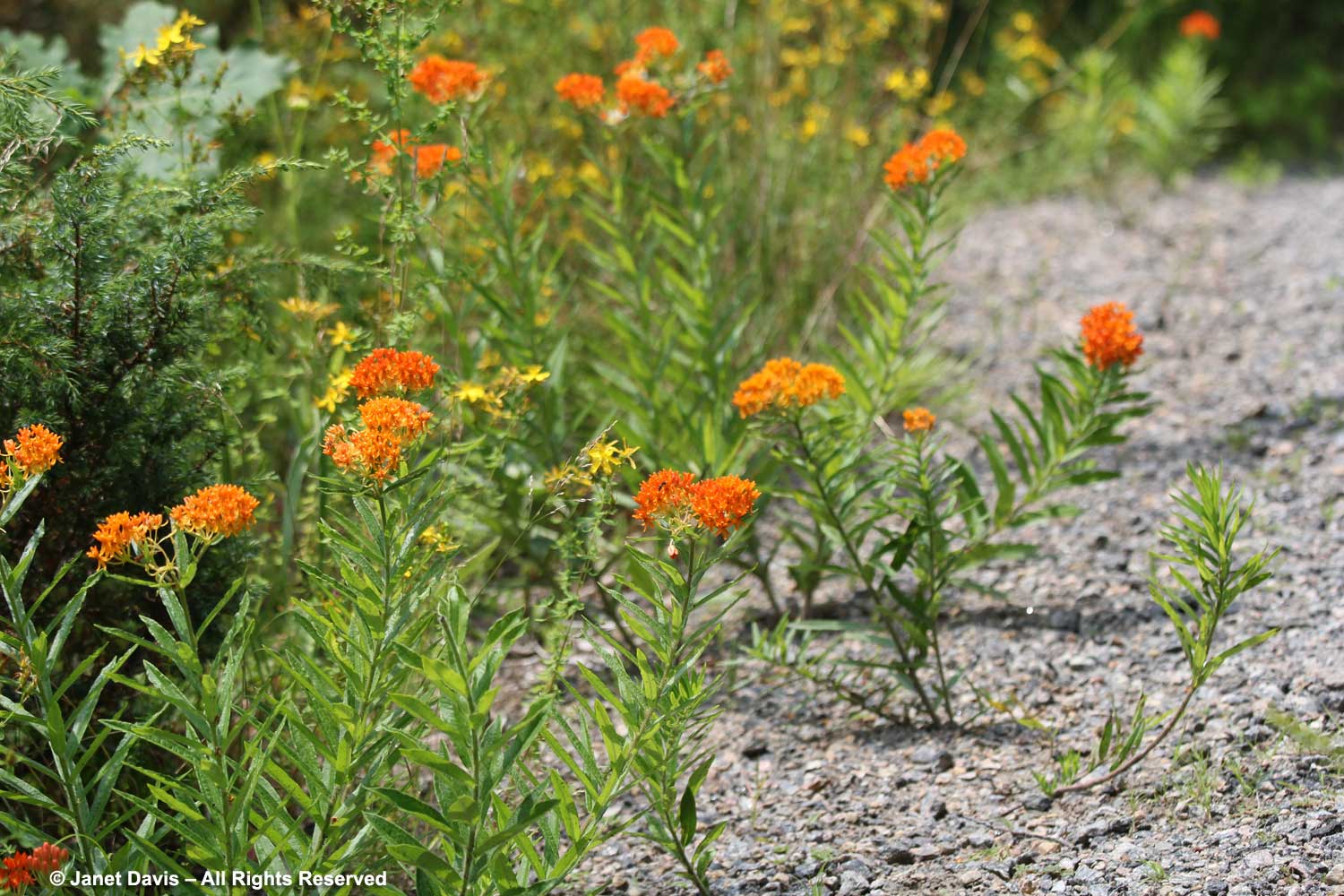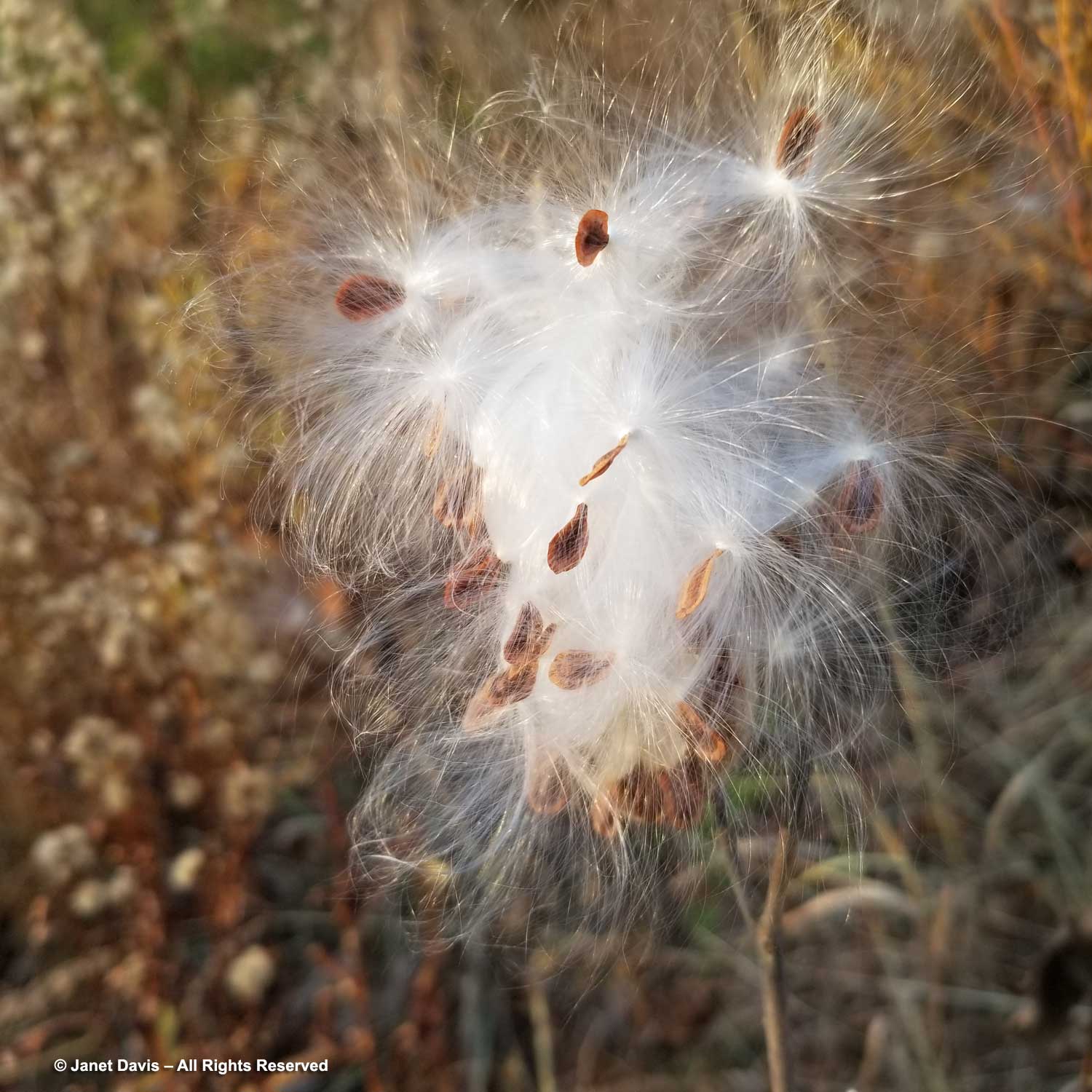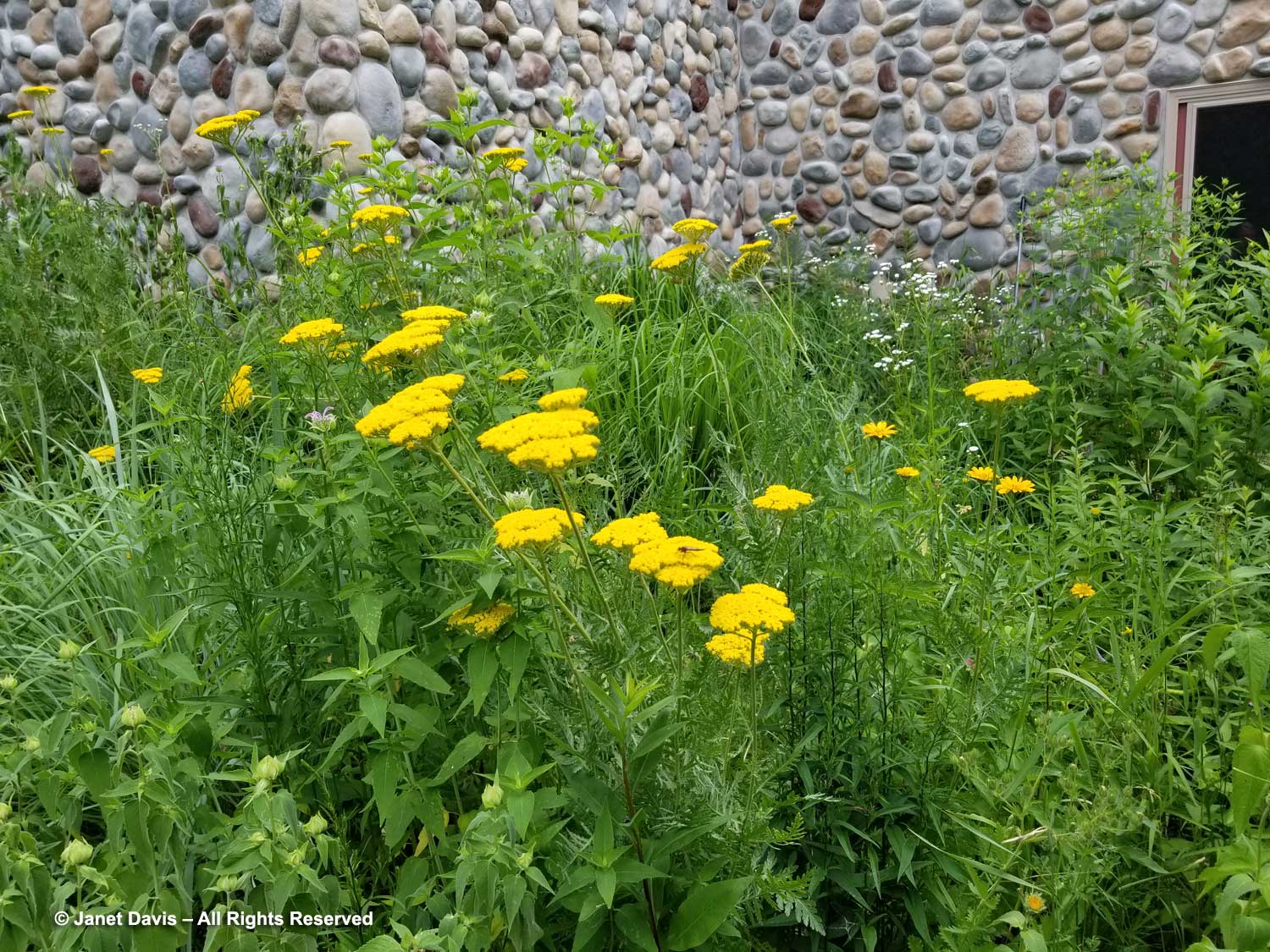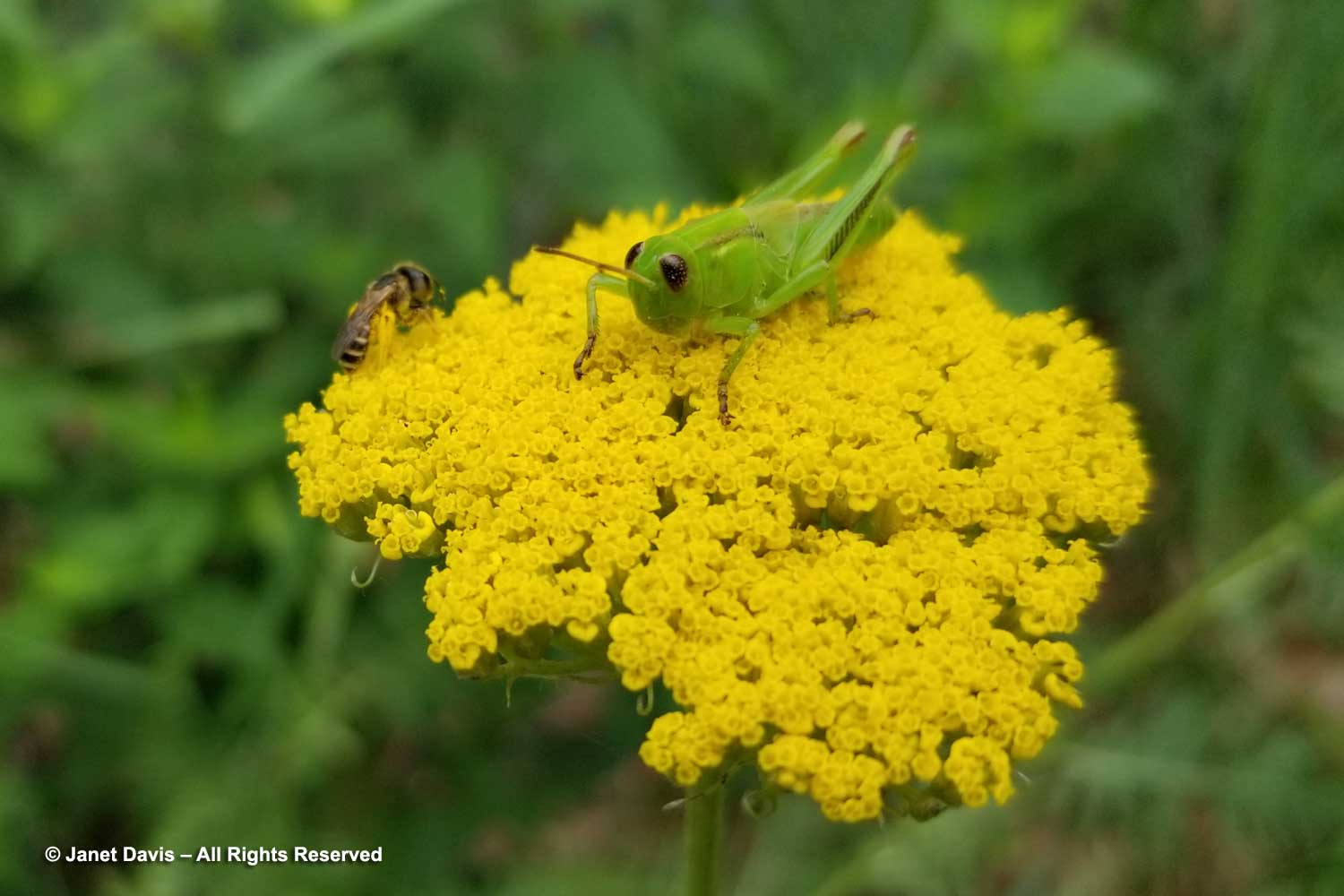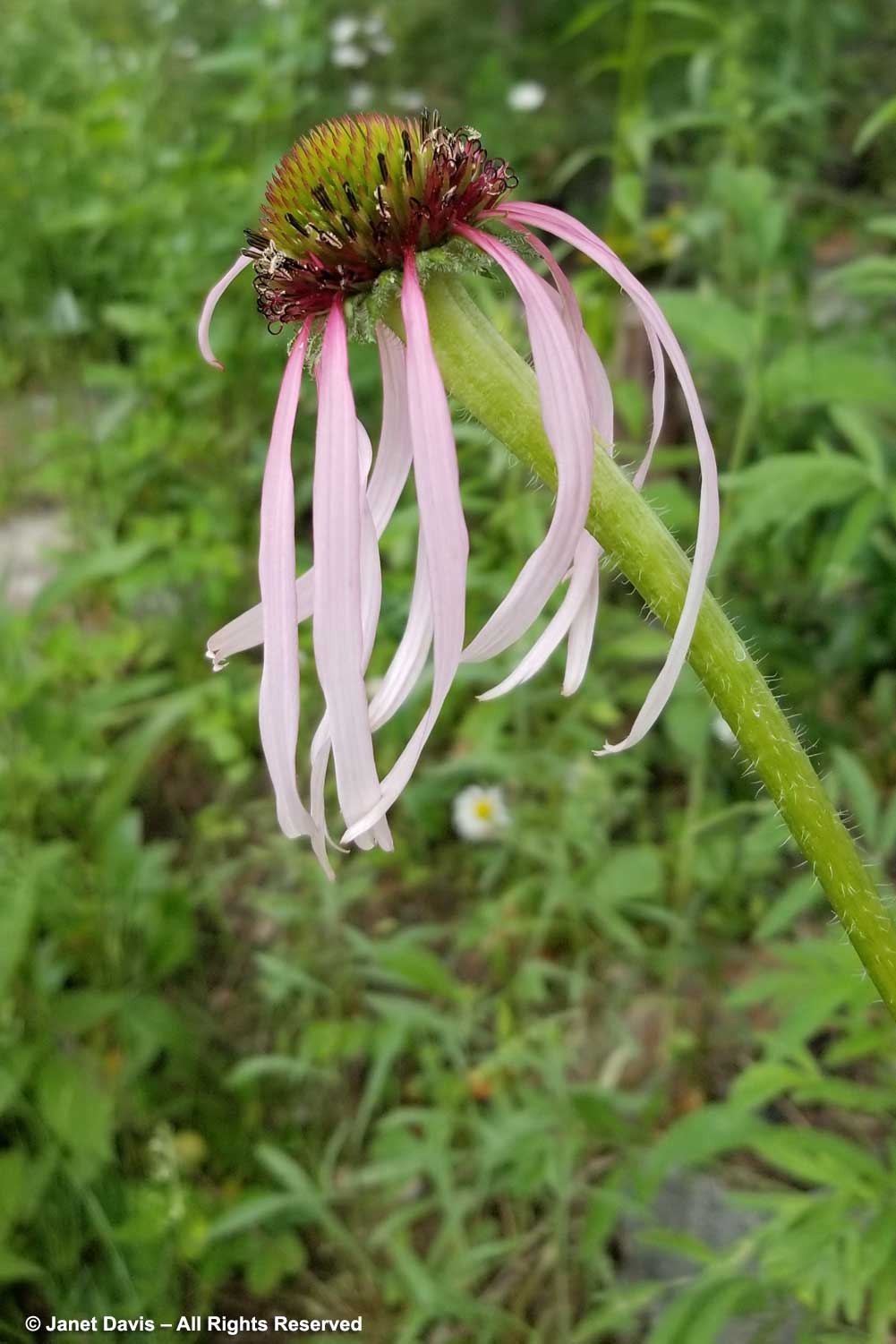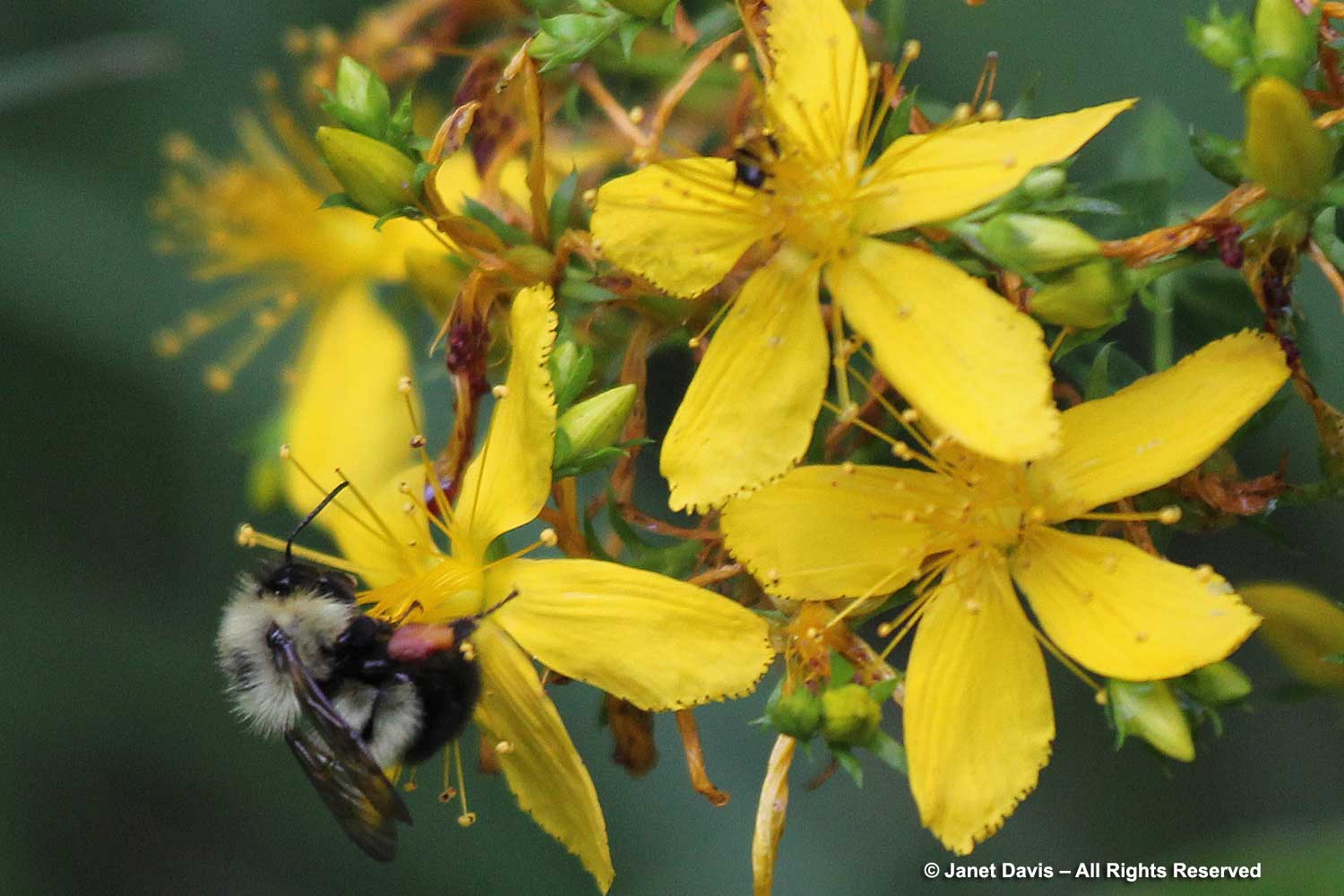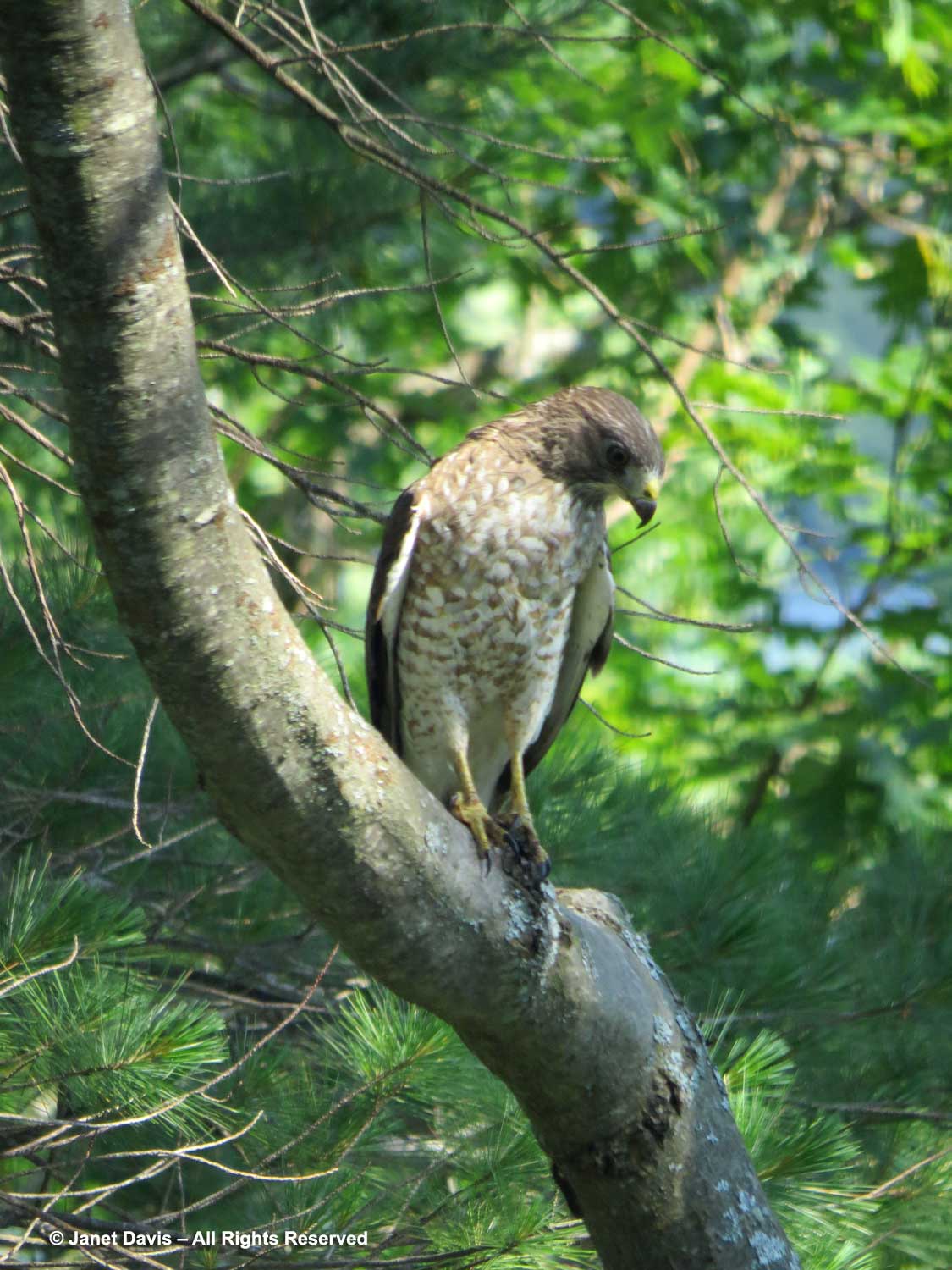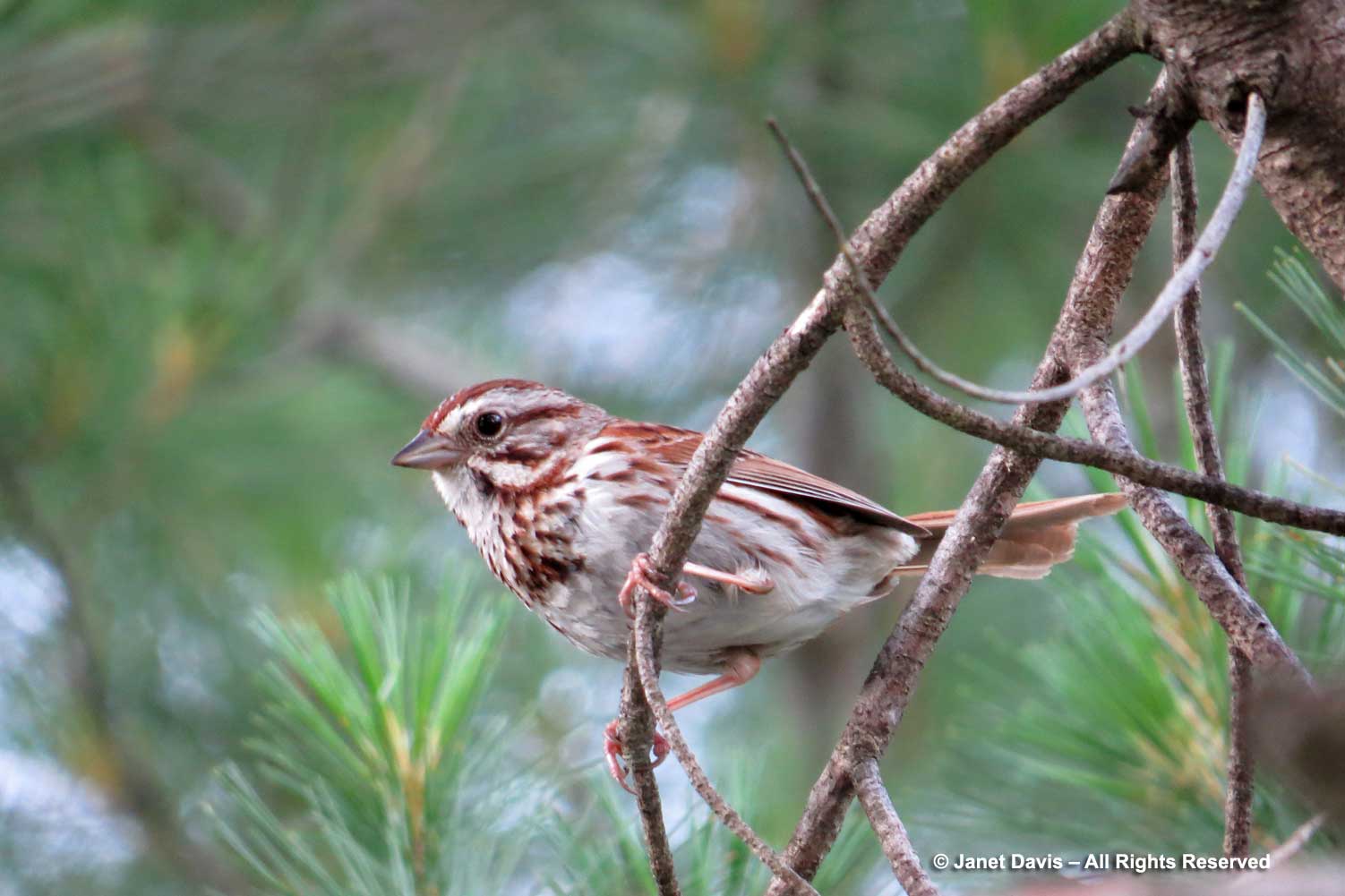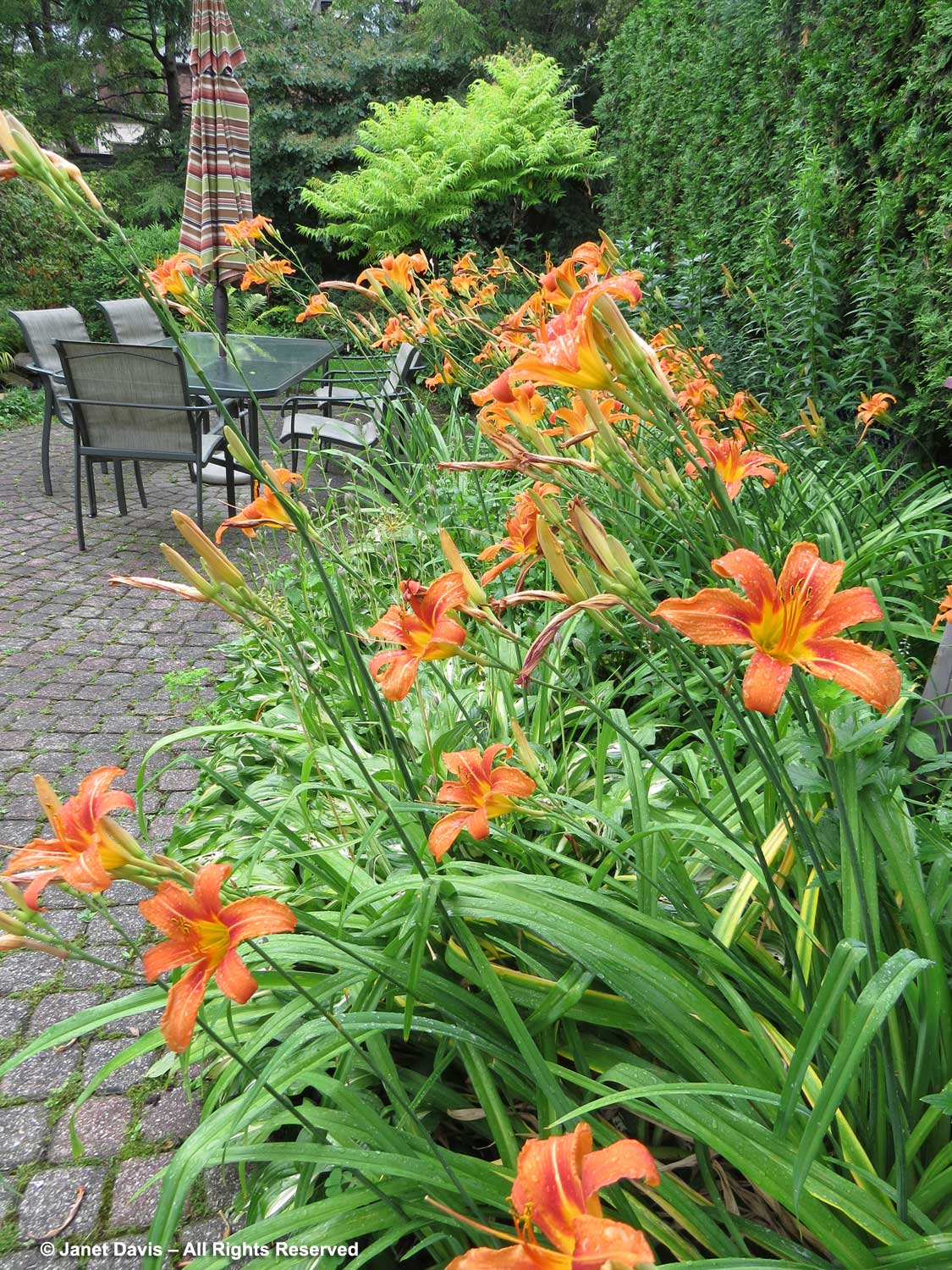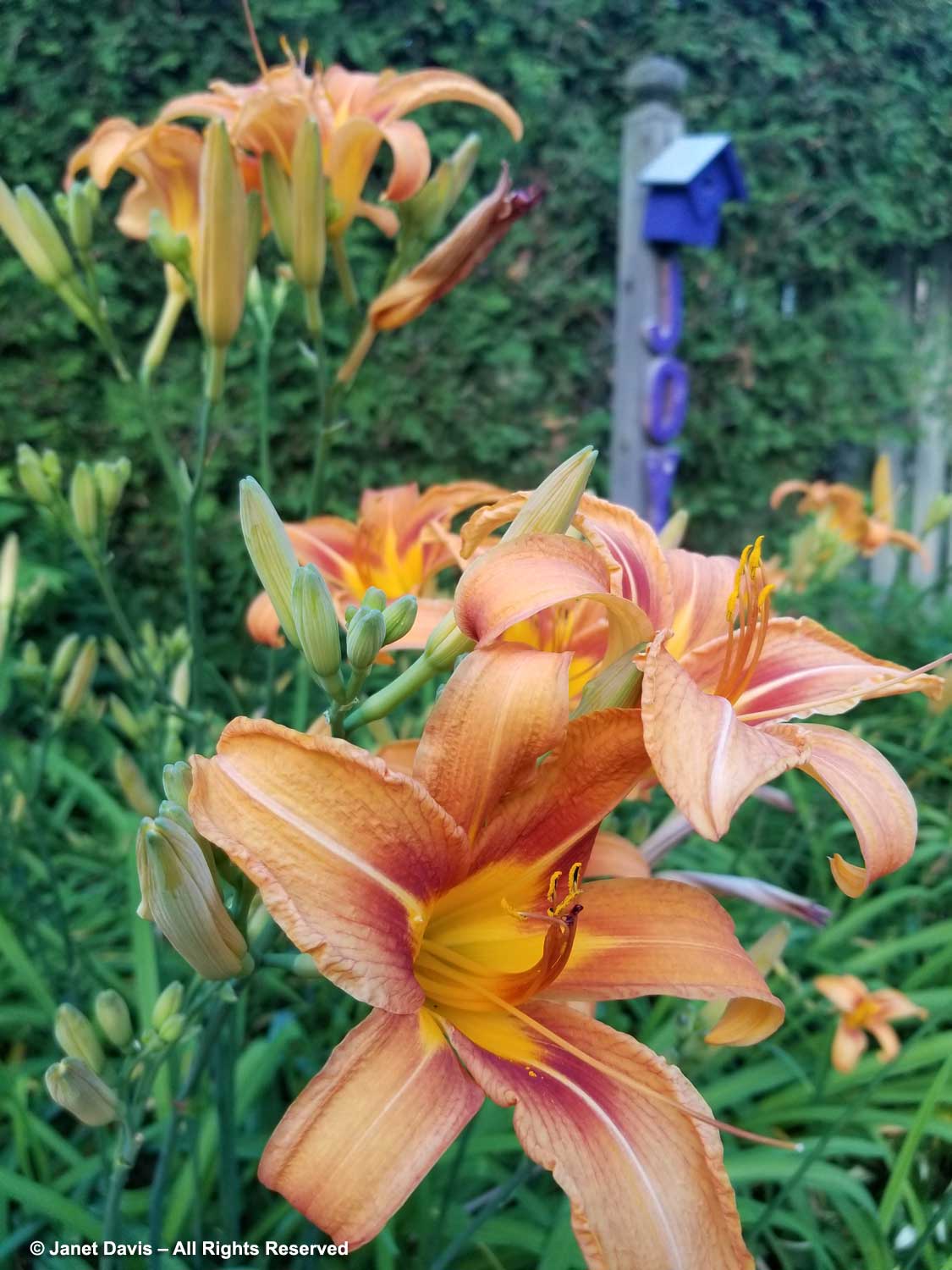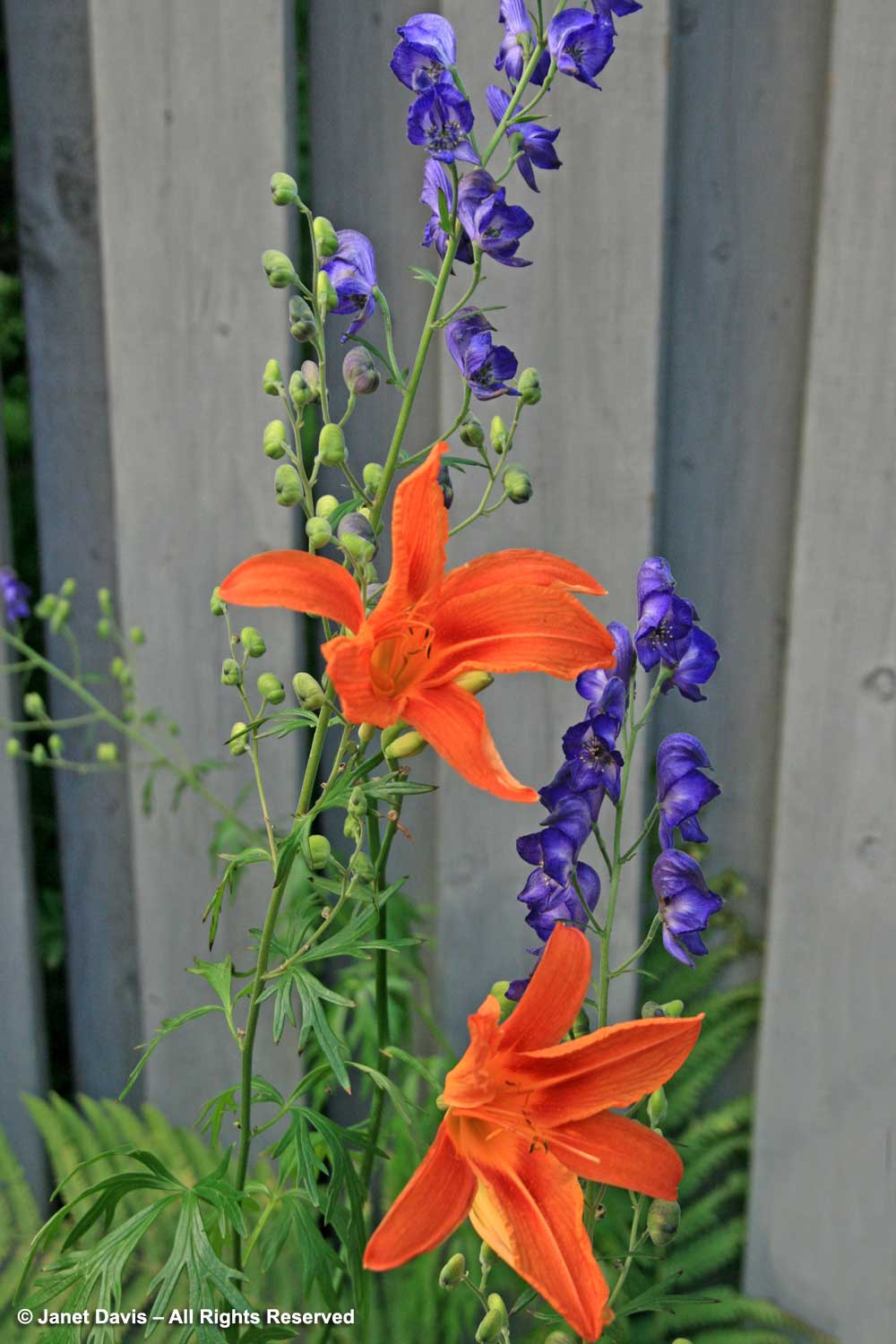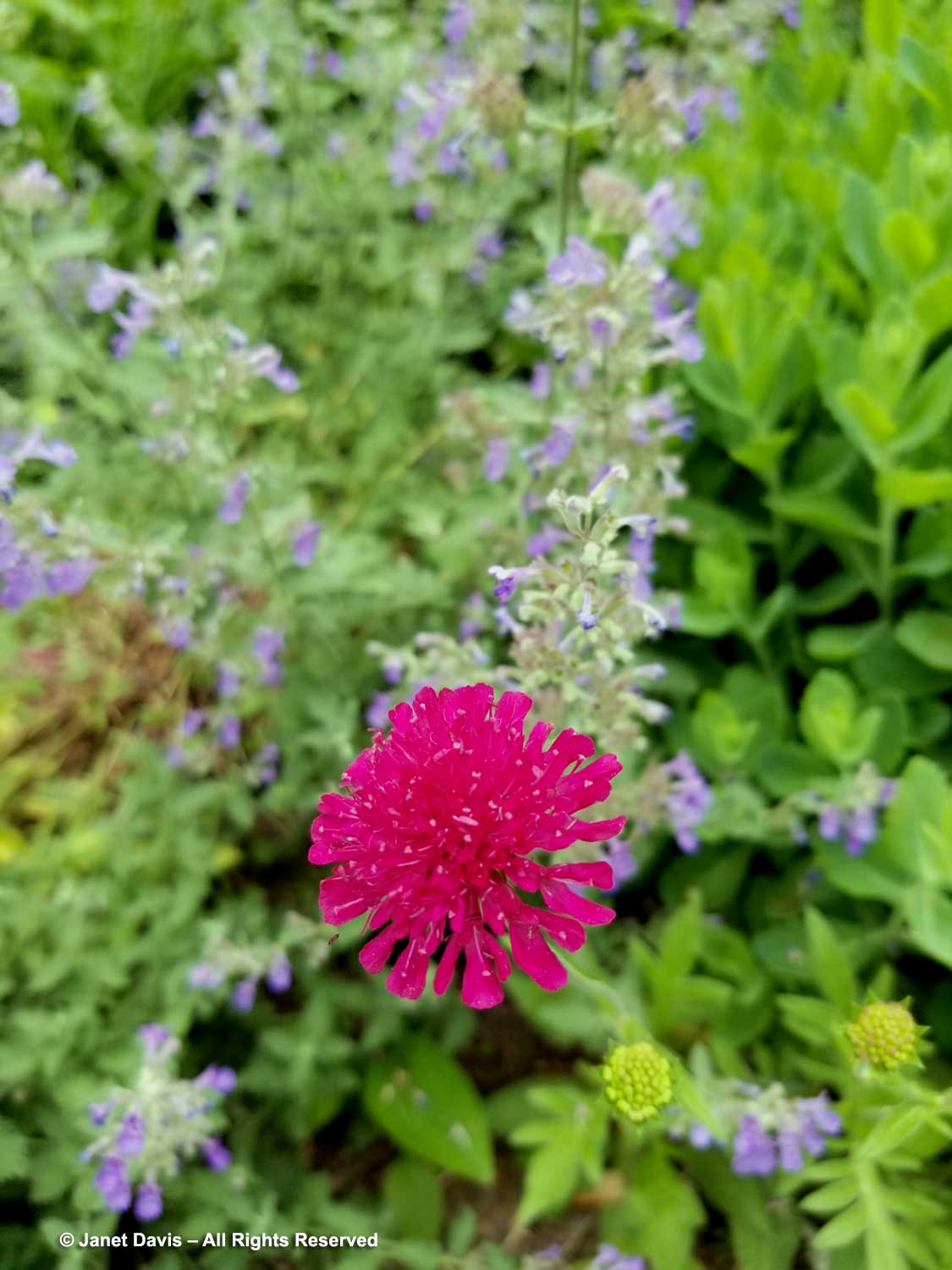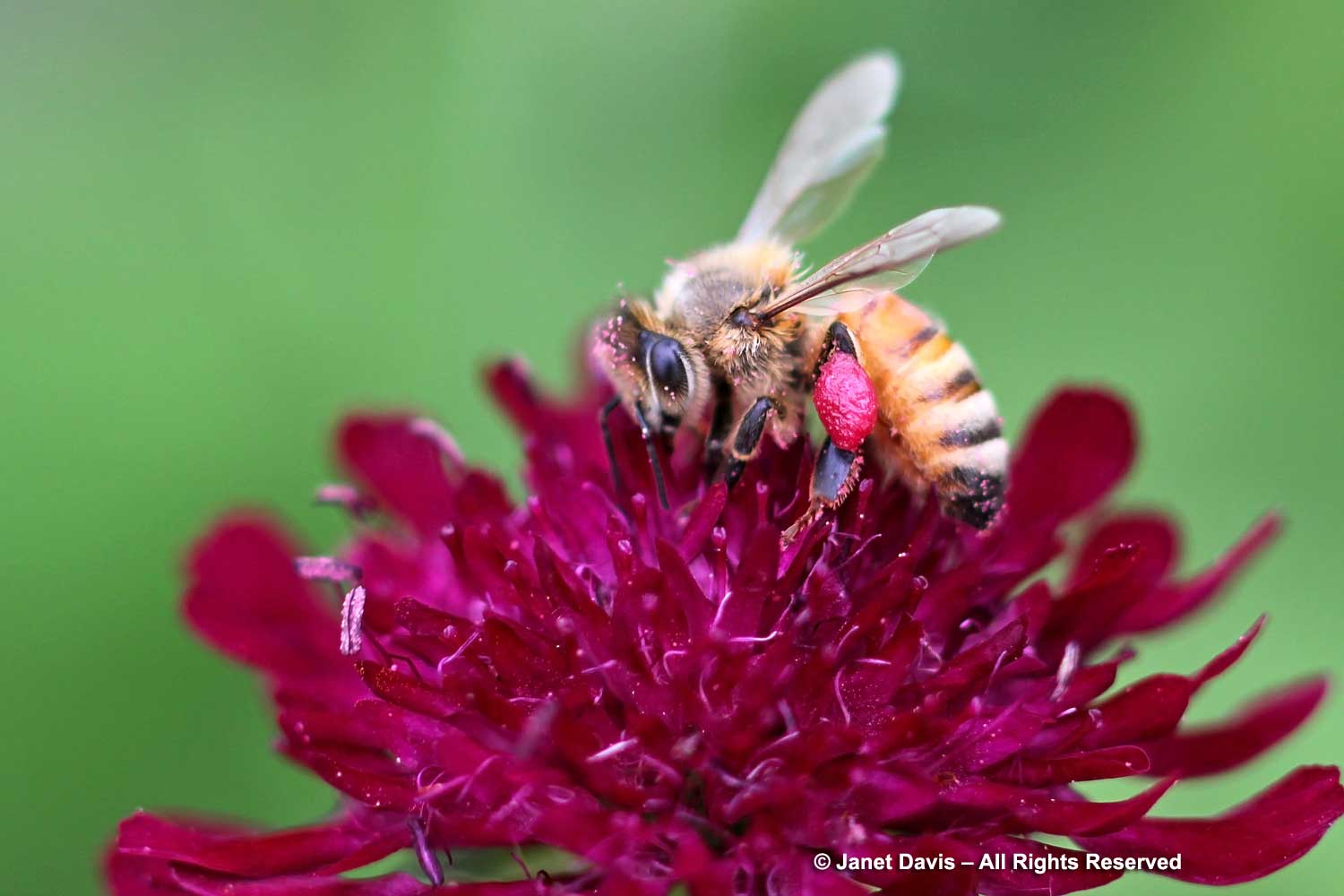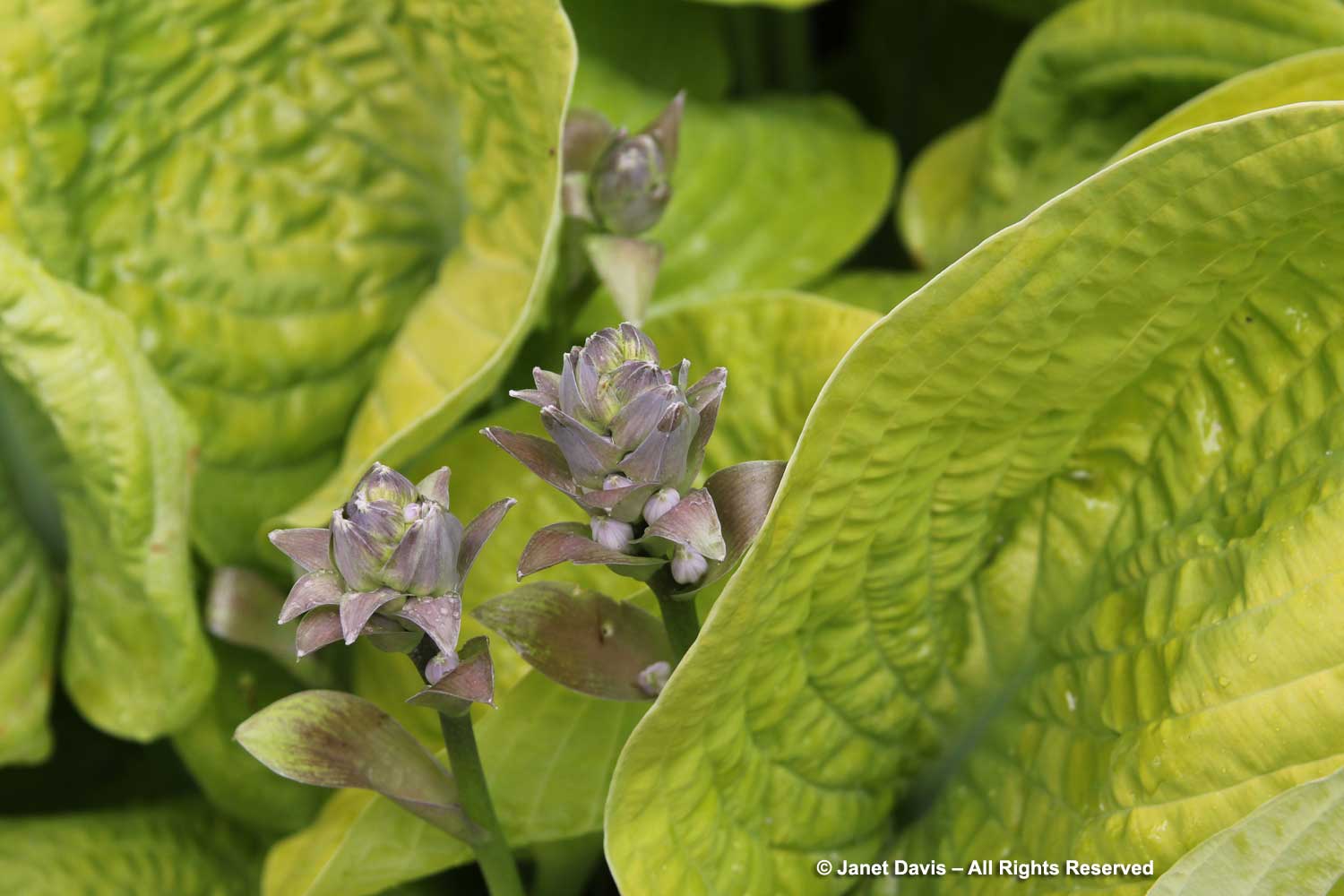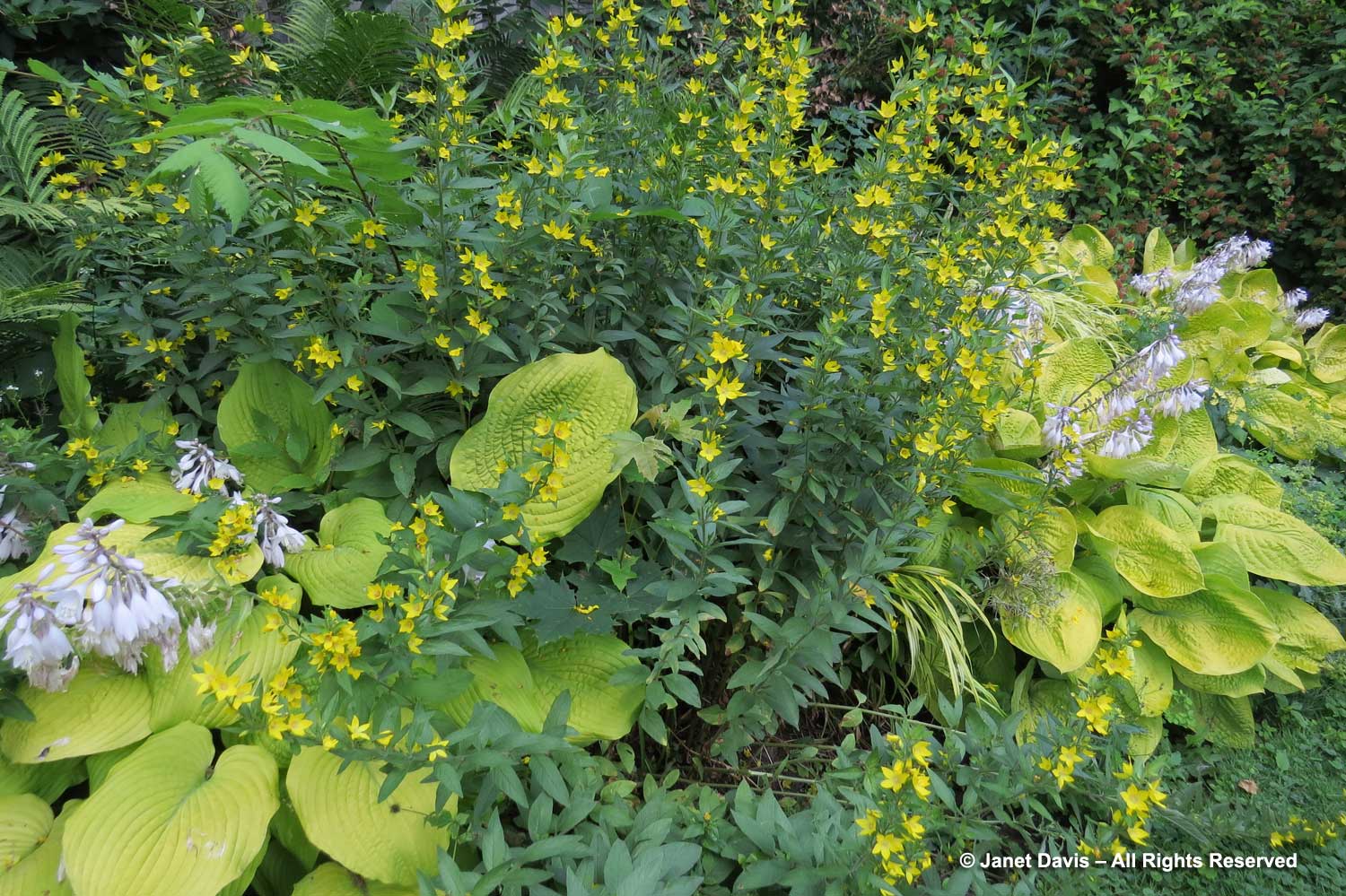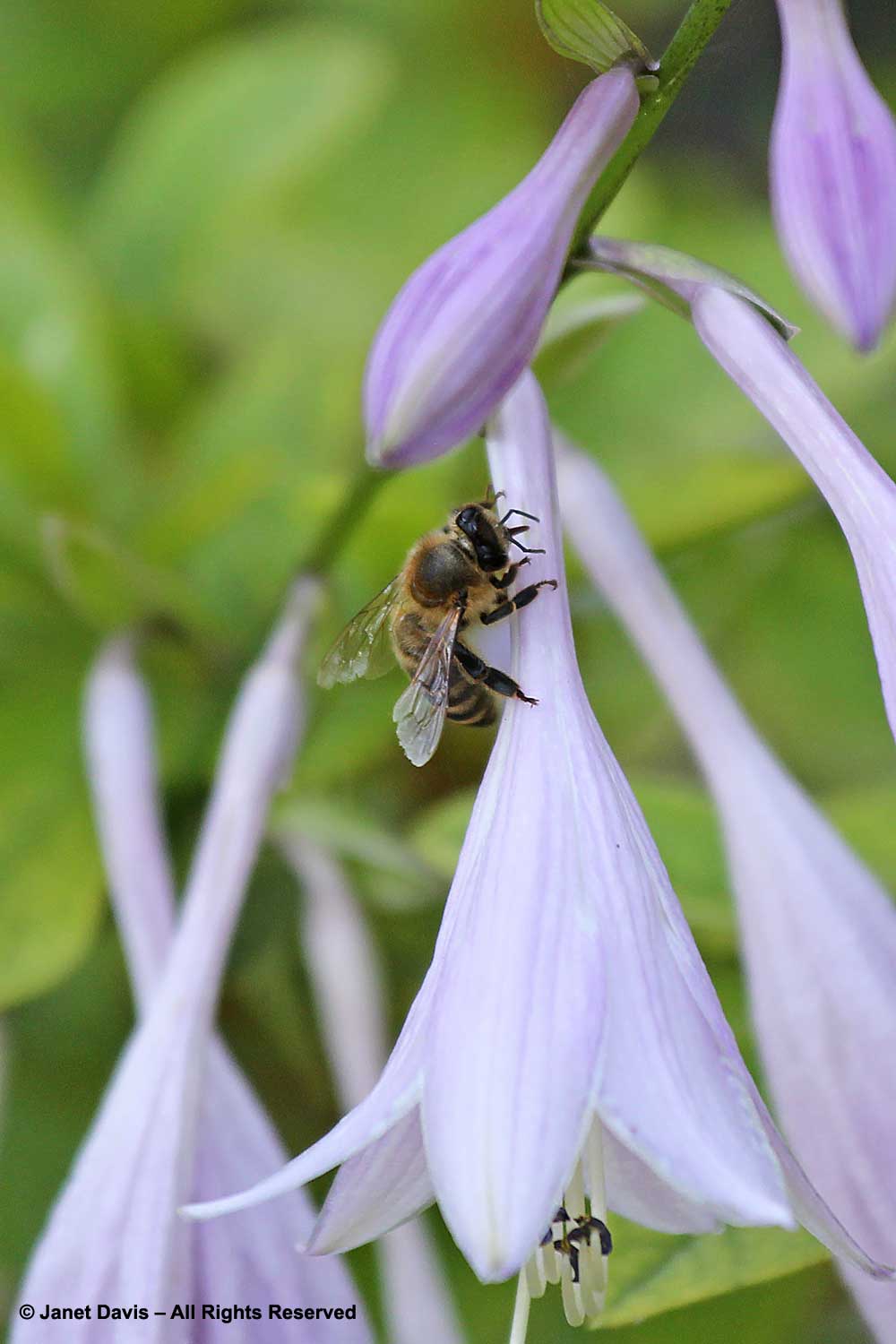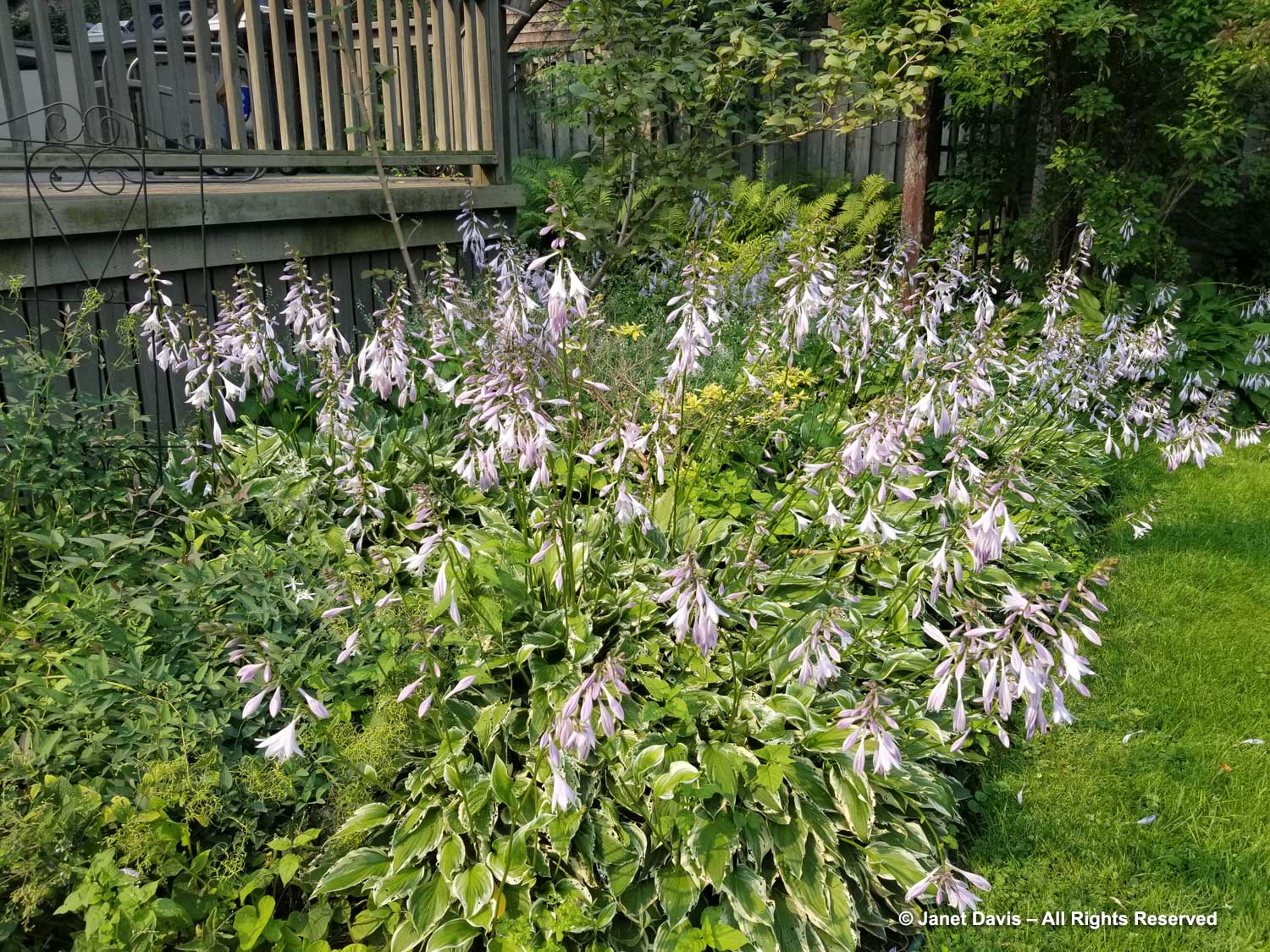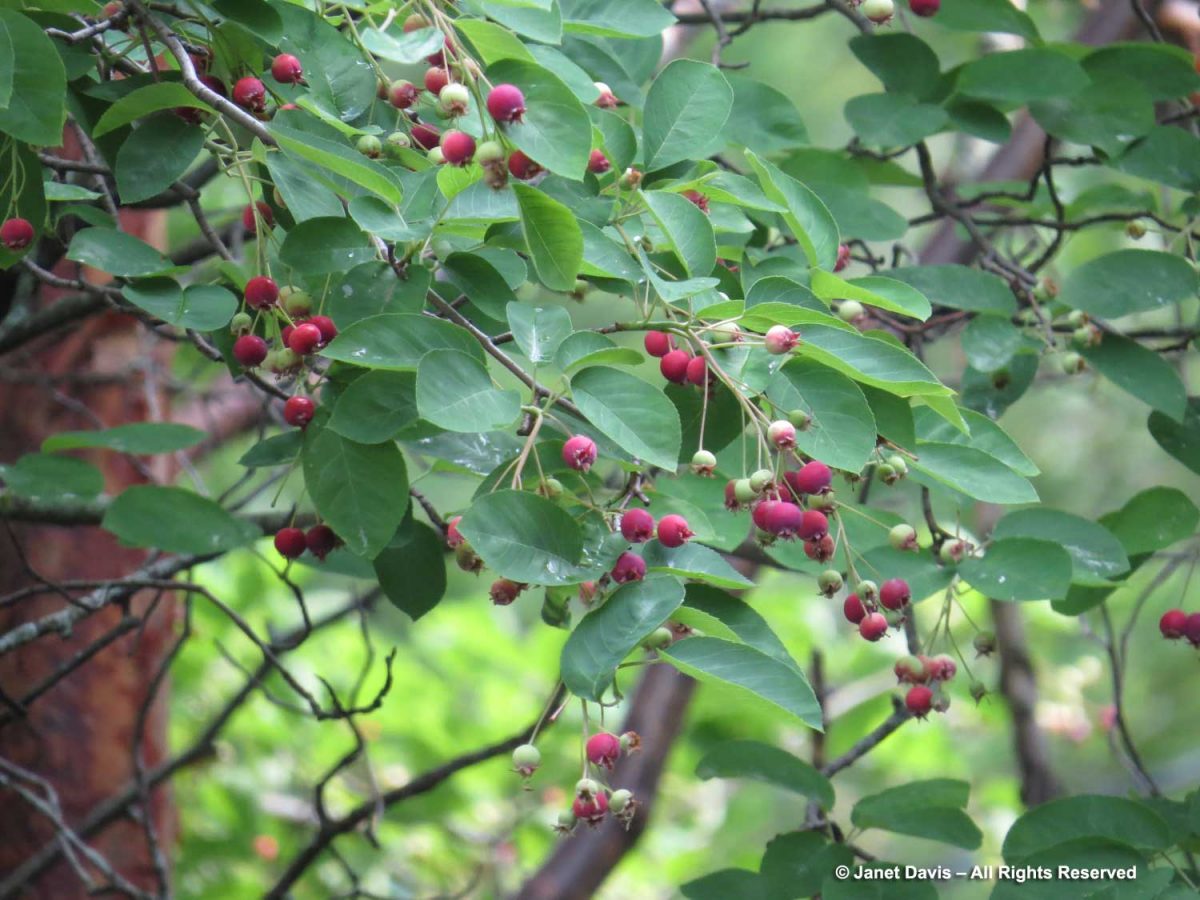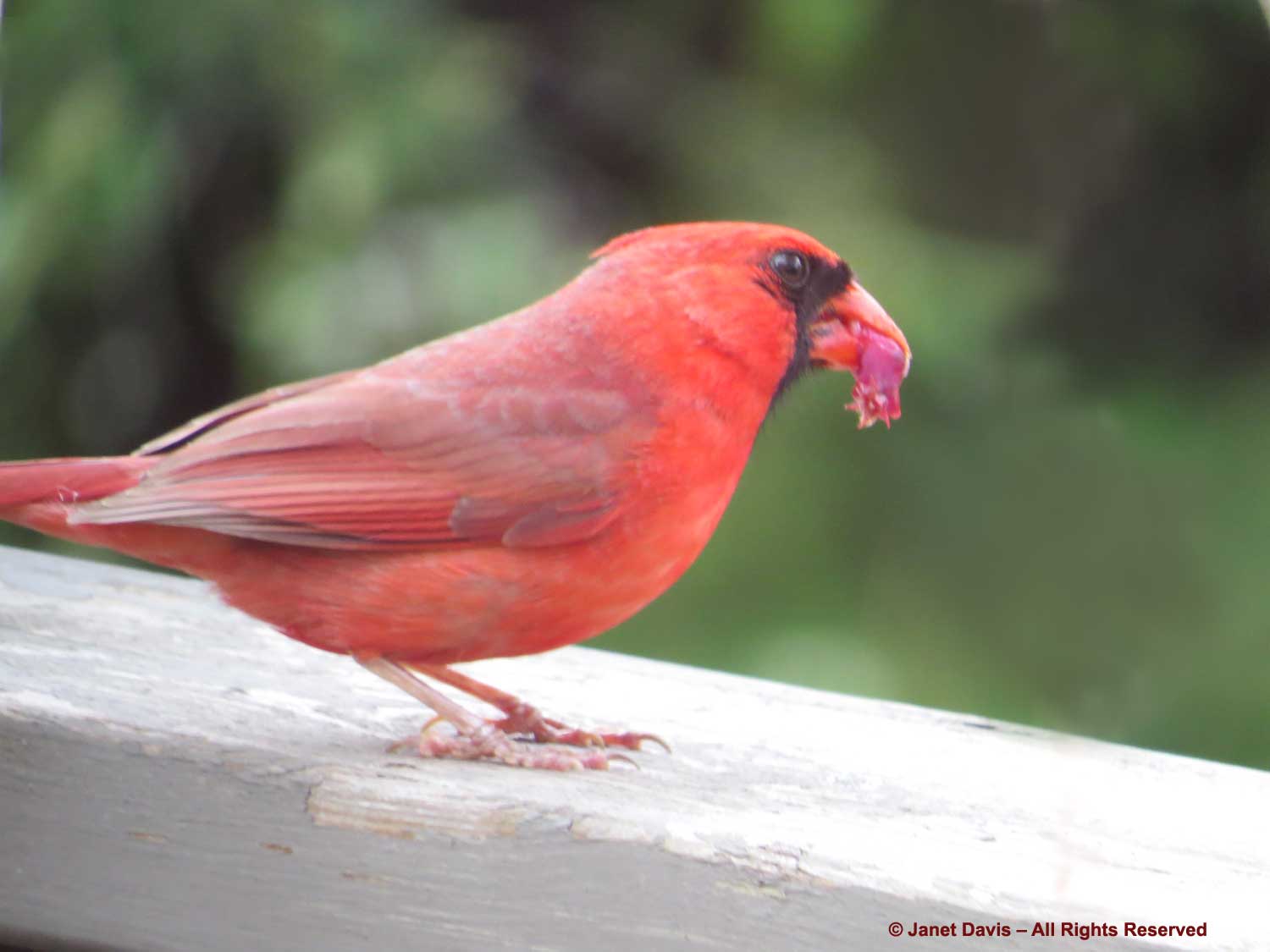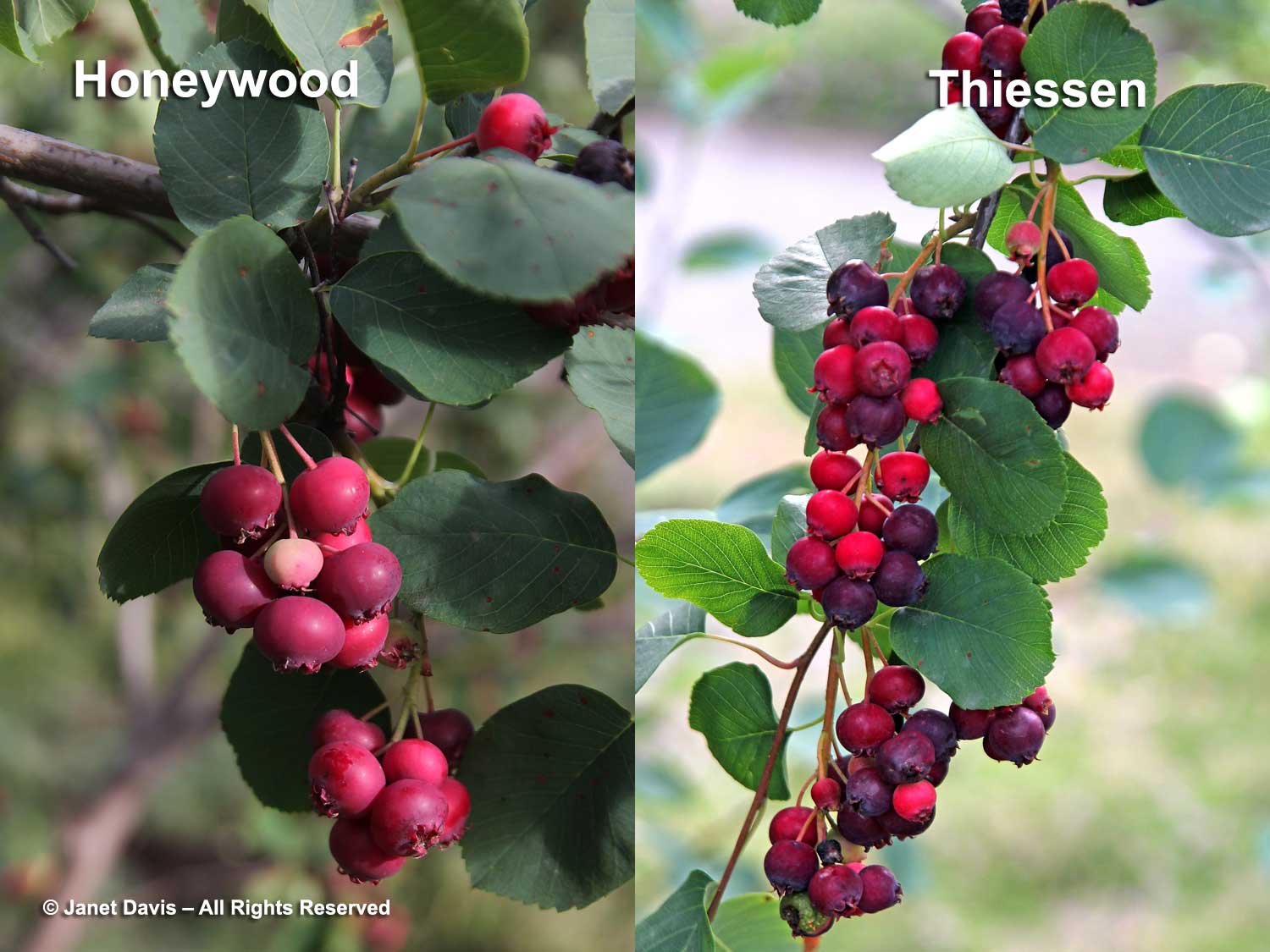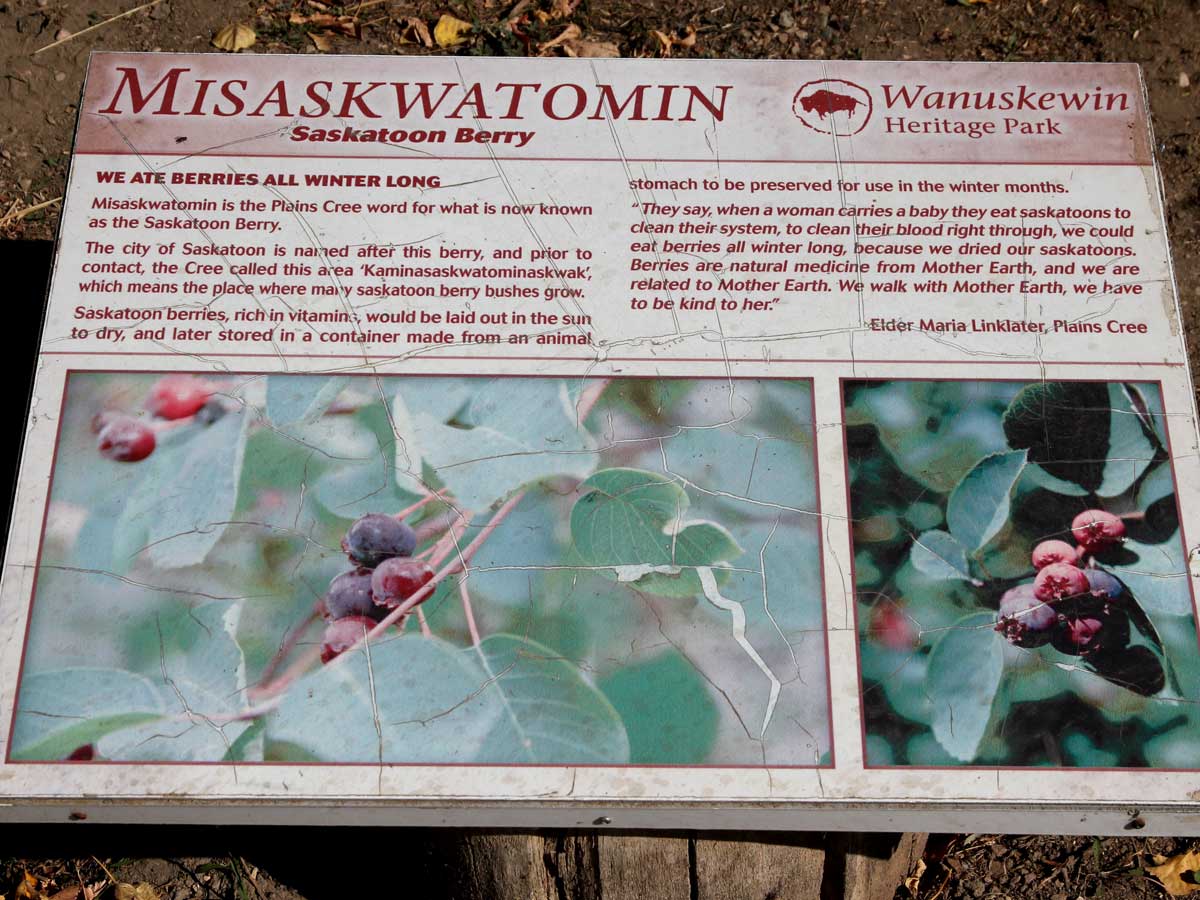Here’s a little story about hummingbird photography. You see, my deck pots at the cottage here on Lake Muskoka north of Toronto are not intended to be beautiful. If they were, I’d buy some of the spectacular hanging baskets that the garden centres sell, plop them in and just enjoy the colour and texture. That way, I’d have more time to swim, read, write and drink wine. No, instead I use my containers to lure hummingbirds in order to photograph them on favourite flowers for the stock photo library that is my business. That’s why I call the containers my “motley pots”. They don’t match – in fact they’re a bit ugly – but they do the job.
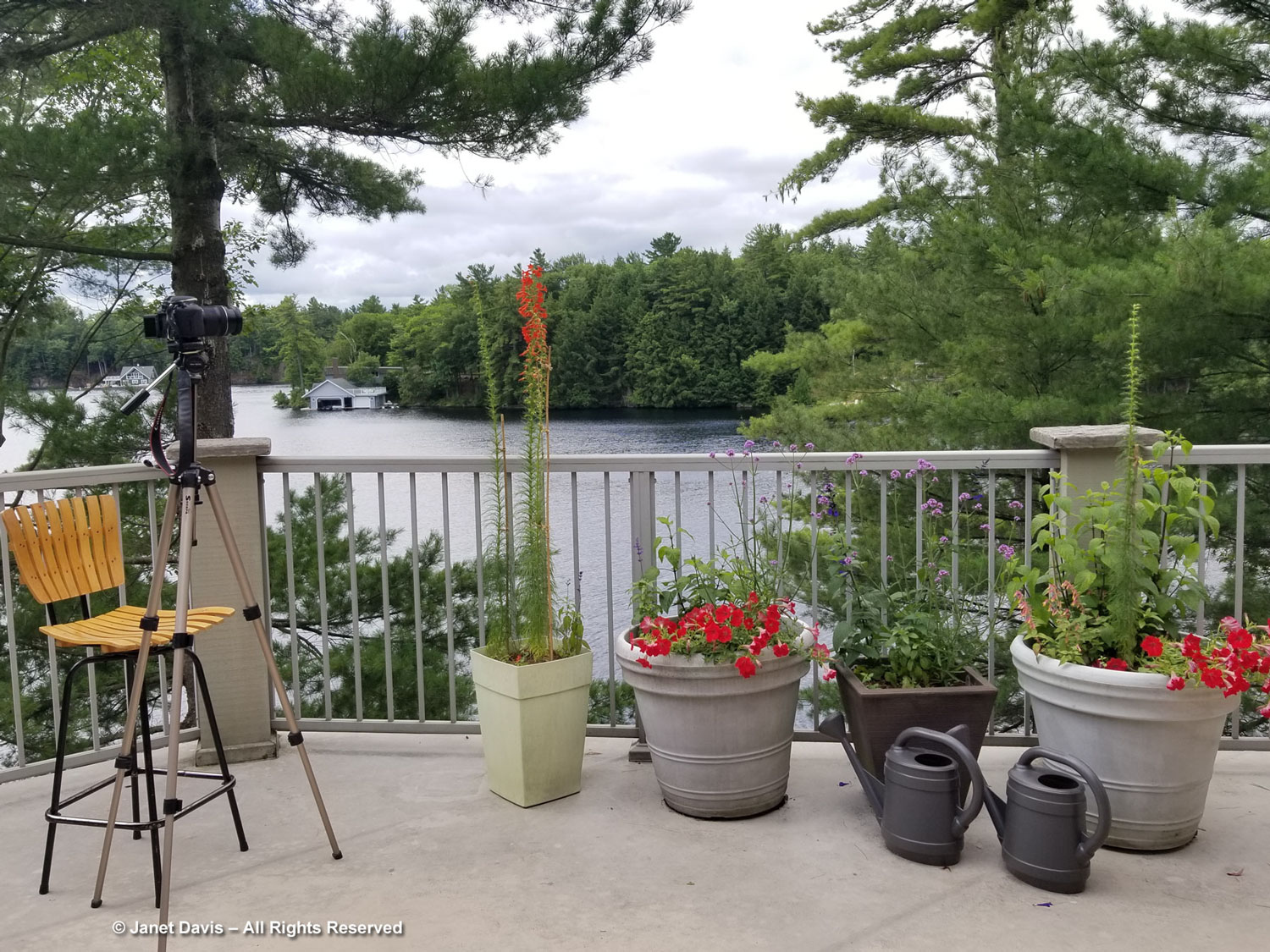
For many years, I’ve been buying “hummingbird groceries” in spring, i.e. food for the ruby-throated hummingbird. I don’t have a sugar feeder, but my lake neighbours do, so my groceries are plants. I’ve learned which species they like (purple lantana, cuphea), which they love (agastaches), and which they prefer above all others (most tender sages).
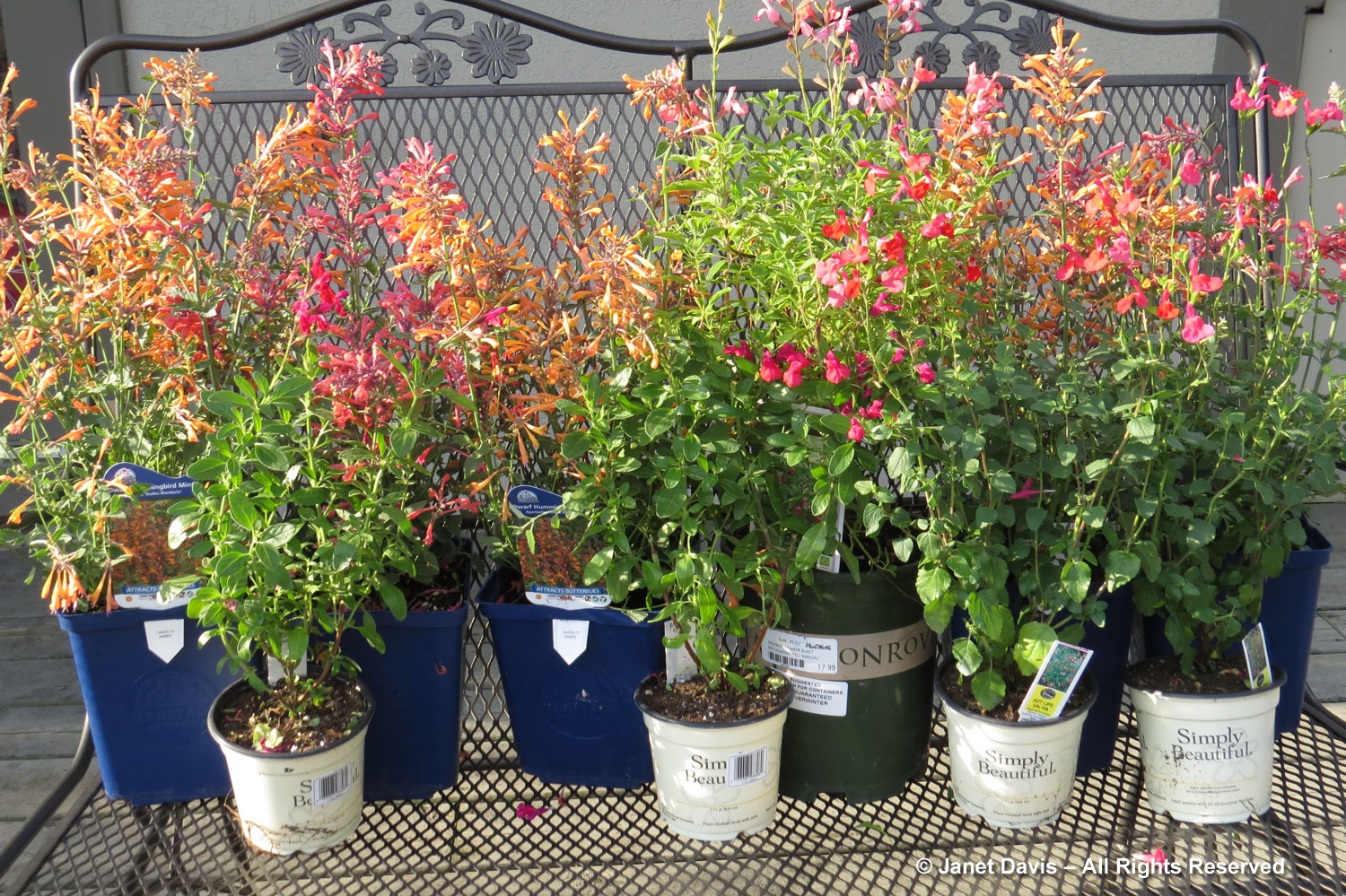
Their favourite would be Salvia guaranitica ‘Black & Blooms’ (or the similar ‘Black & Blue’). This tender sage is not easy to find in Toronto so I’ve been digging it up in autumn and taking it to the city, where it spends winter in pots in my basement laundry tubs under a window, dreaming of Argentina. I water it occasionally and it sends up growth all winter. In mid-spring, I cut it back to the new sprouts and bring it back to the cottage. Provided it gets watered and no frost occurs, it’s raring to go again by July.
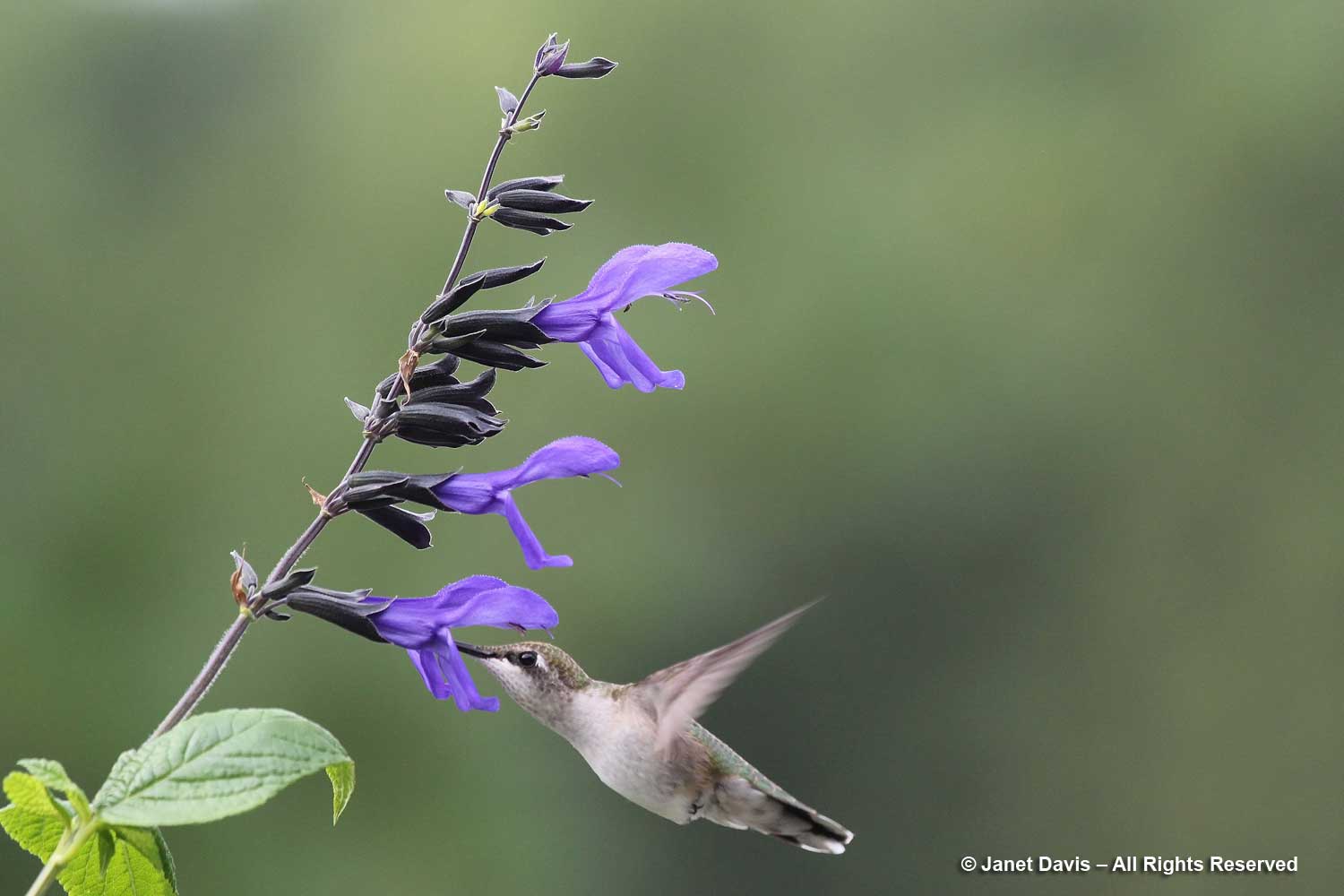
Other hummingbird favourites in my pots this year are Cuphea Funny Face, below, and some Agastache aurantiaca cultivars in pink, apricot and yellow that I seeded myself in the city rather late in spring, so they’re still small but will be good by mid-August. I will leave these to drop seed, because they’re excellent self-seeders, even in pots. And when I was at the garden centre in May, I bought some red petunias (Supertunia Really Red). I didn’t think they’d be good for hummingbirds but as a plant photographer, a new plant purchase is never a waste for me. Surprisingly, the hummingbirds seem to appreciate them too!
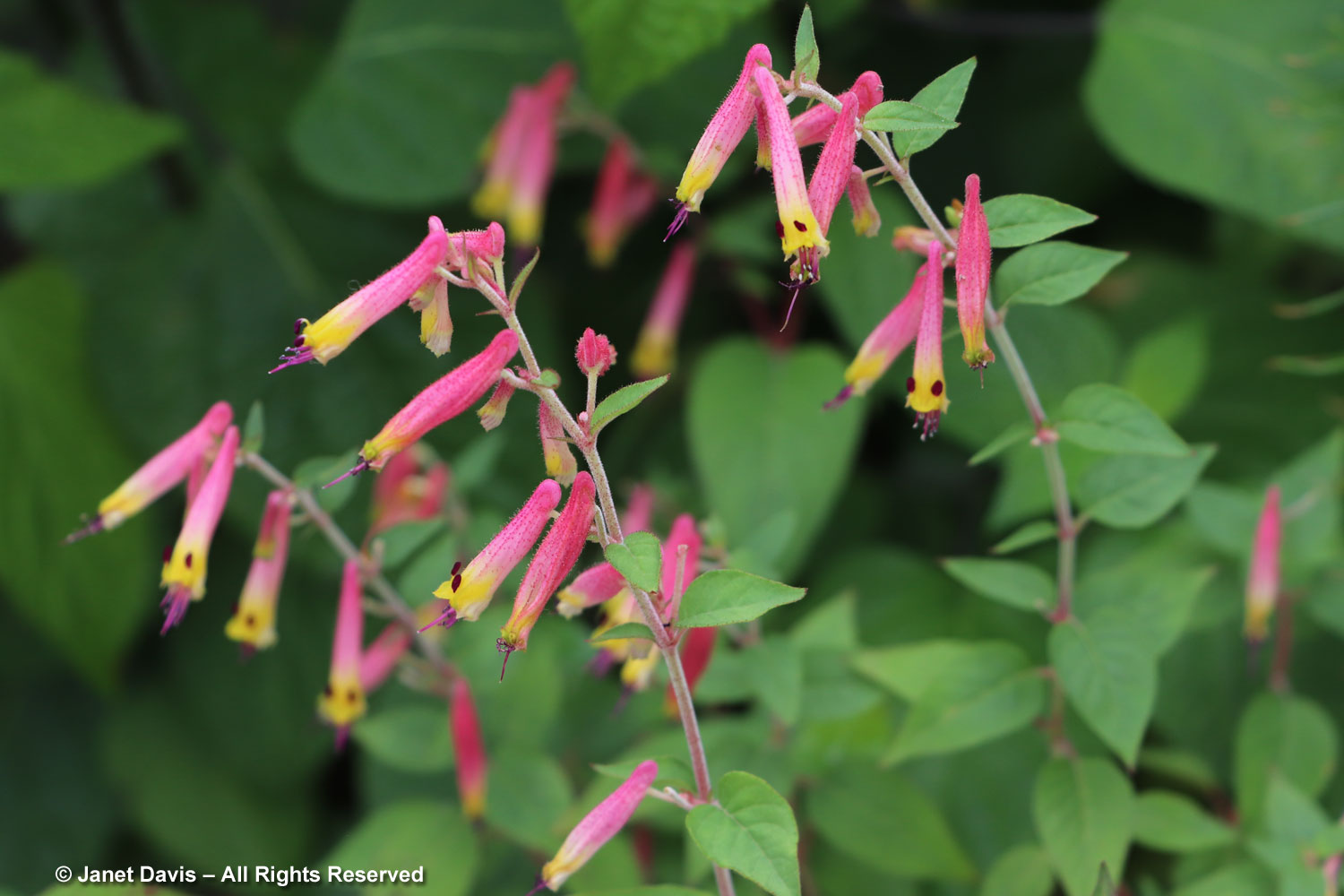
And I tucked in a few plants of Verbena bonariensis Meteor Shower for their airy blossoms which the bumble bees adore, but it’s not a great hummingbird plant. Here it is with a compact form of S. guaranitica, Bodacious Rhythm & Blues that I bought this spring at the Toronto Botanical Garden’s plant sale.
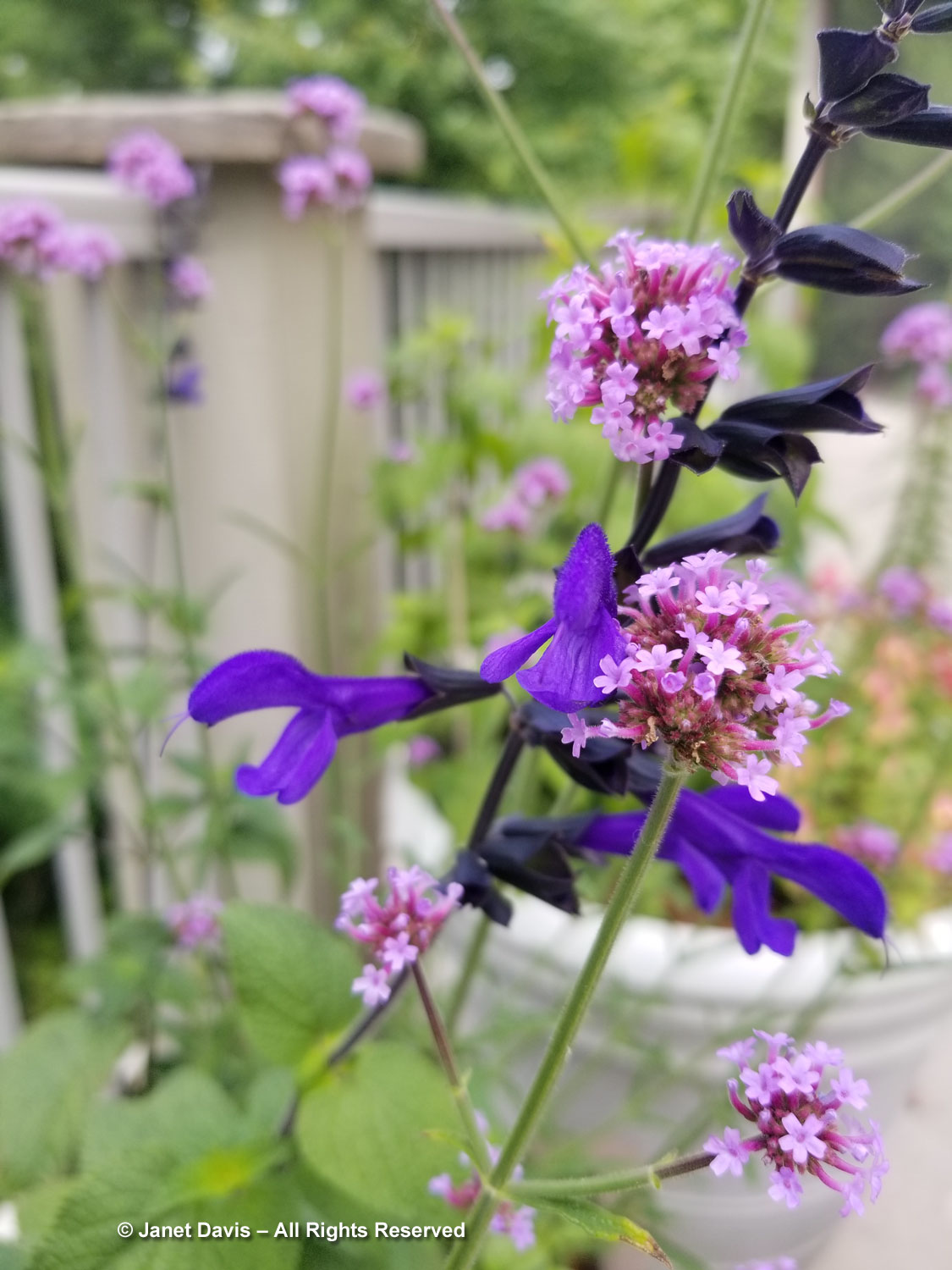
But the big score this summer are my plants of the biennial standing cypress, Ipomopsis rubra (so-called because its ferny leaves resemble those of cypress trees). I had photographed this plant, a native of the U.S. in the alpine garden at the Montreal Botanical Garden, below, so I knew I could grow it.
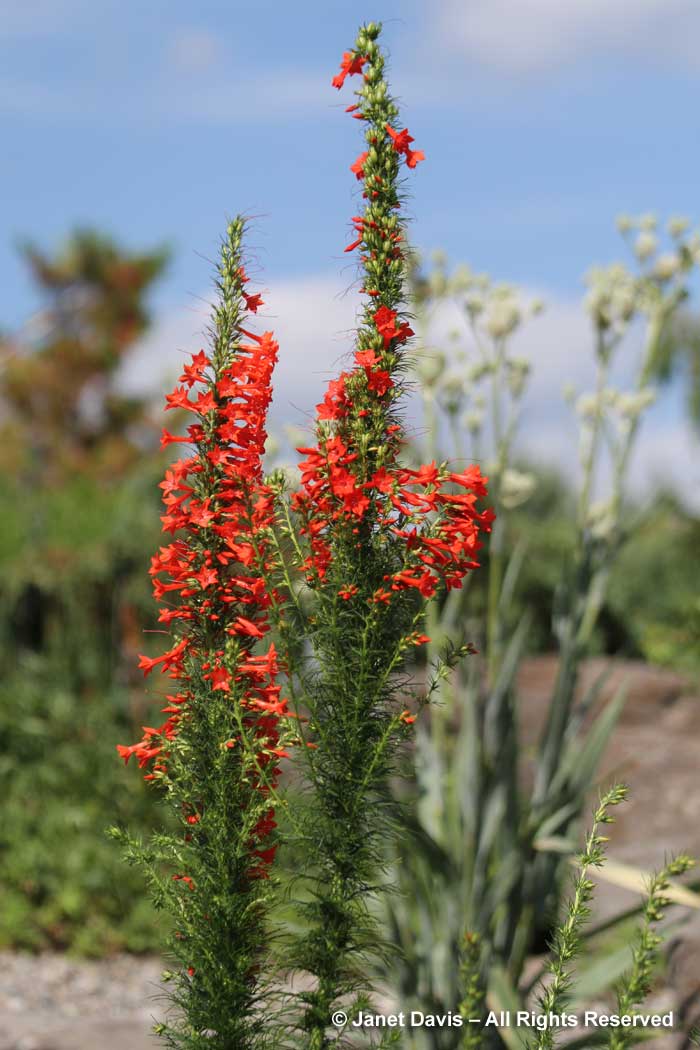
But seed I’d purchased from a seedhouse did not germinate; it took fresh seed donated by my friend, seed maven Kristl Walek in Brockville, Ontario to do the trick. I sowed the seed in 2020, and last summer (2021) there were lots of little ferny rosettes here and there in my sandy, granitic soil. Kristl warned me they’re very hard to transplant when bigger, so I dug up a few of the small rosettes and carefully put them in 6-inch pots filled with gravelly soil, below. In late autumn before the ground froze, I dug a hole behind the cottage and placed the pots inside, surrounding them with pine needles and mulching the tops with pine needles, too. We had a cold, cold winter (it even killed the spongy/gypsy moth eggs) but lots of snow cover – perfect for insulating the plants.
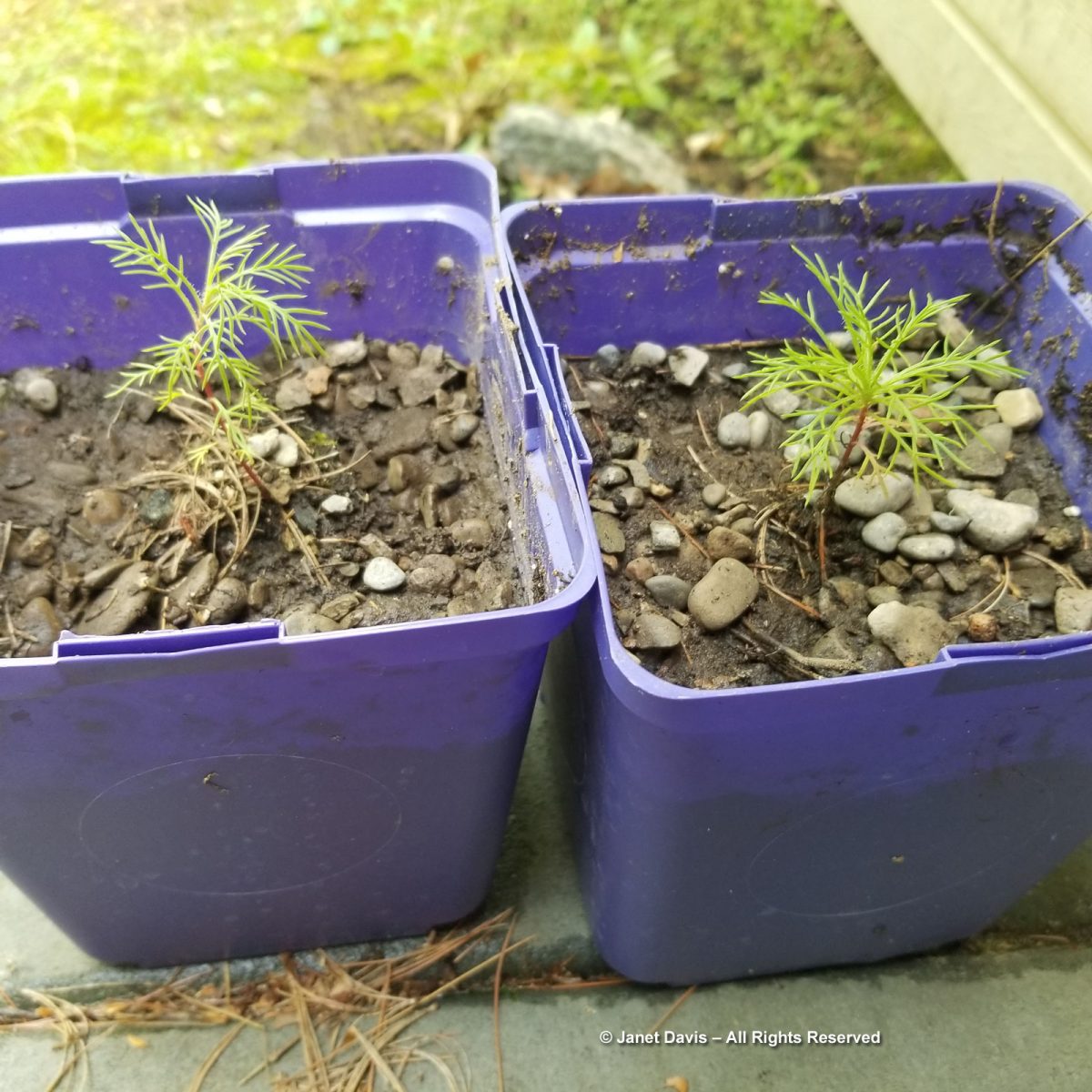
This spring after the soil thawed, I dug up the pots and very carefully transplanted the little plants into my deck pots in soil amended with sand and gravel. I watered them in and away they went. This morning, the tallest is 54 inches high and 4 inches wide, much bigger than those in the dry meadows. I call them my Dr. Seuss plants. I even staked them so they wouldn’t break in our summer storms!
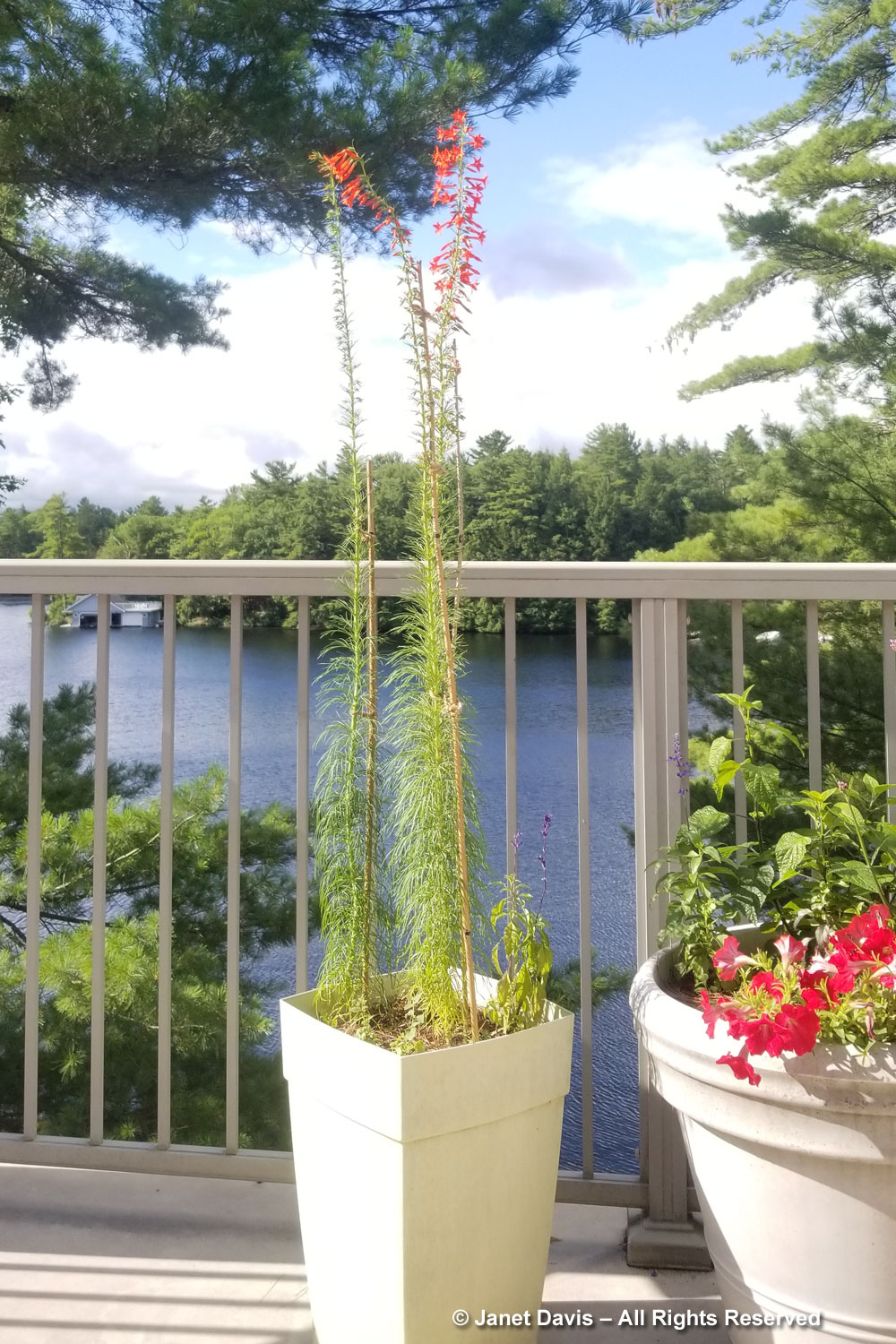
And the hummingbird loves them! Yesterday, I managed to do some still photos with my camera…..
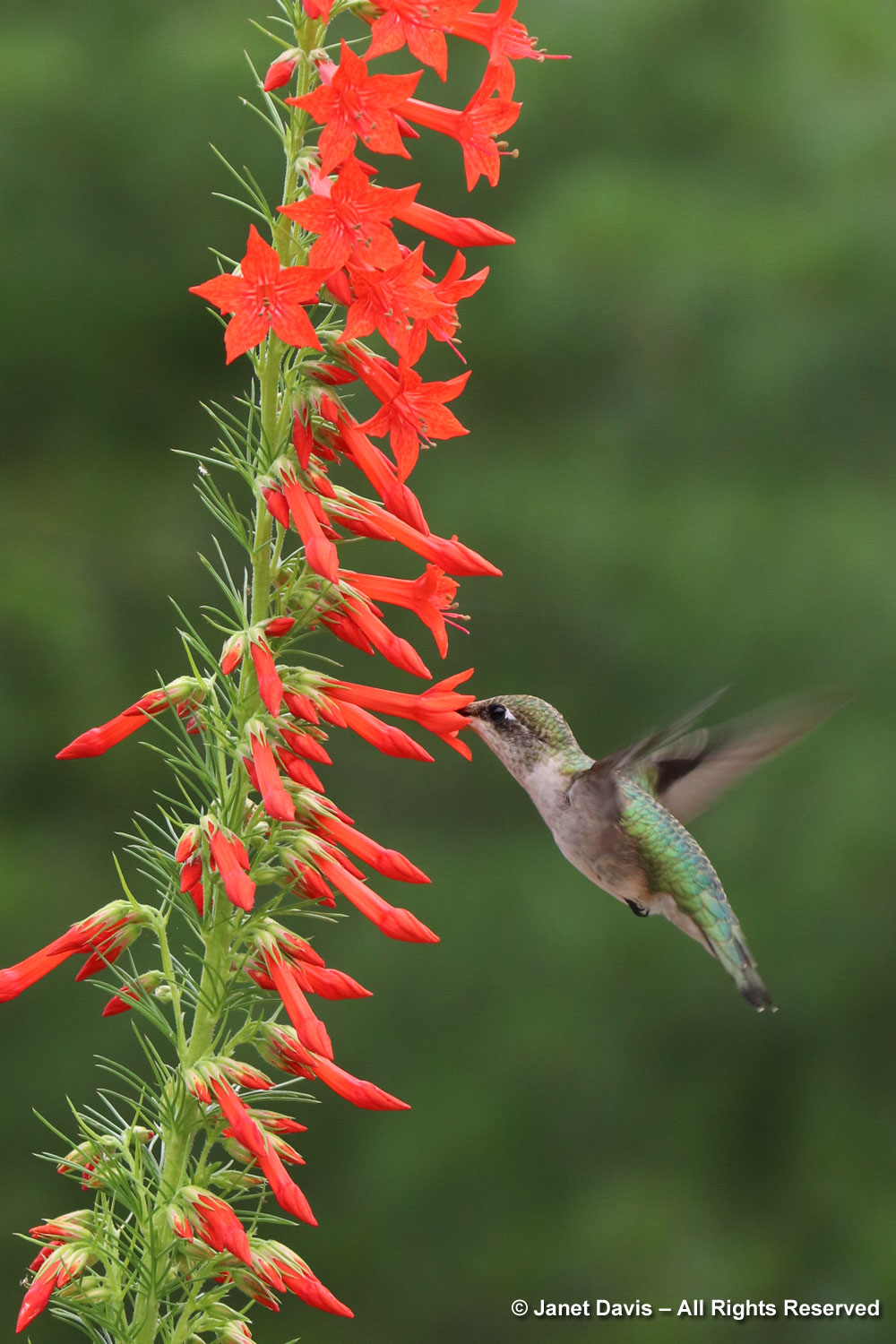
….. but I wanted a little video too. After sitting for more than an hour and having the hummingbird fly in, spot me, then fly away, I decided to set up my camera on a tripod. Then I went in and made coffee. I went outside periodically and turned off the video and started a new one. Finally, five videos in, I spotted her from the kitchen. I went to the door with my cell phone to watch and after drinking her fill of Ipomopsis, she moved on to the red petunias and cuphea. I videotaped that part with my phone! (I’ll get closer with my zoom lens later this summer.)
The camera video of the standing cypress isn’t spectacular, but it will do. (I will increase the frames-per-second in the settings for future videos). I actually saved it first as a high-res movie, then as a smaller computer-resolution video. The original had the happy screams of the kids across the bay swimming and also a few wind gusts. In the second, I ditched the kids and the wind and added some music by TRG Banks. It’s not perfect — I’m a photographer, not a videographer — but it’s a good start!
All in all, a good morning in the hummingbird studio. Oh, and here’s an older video of my hummingbirds from previous years!

